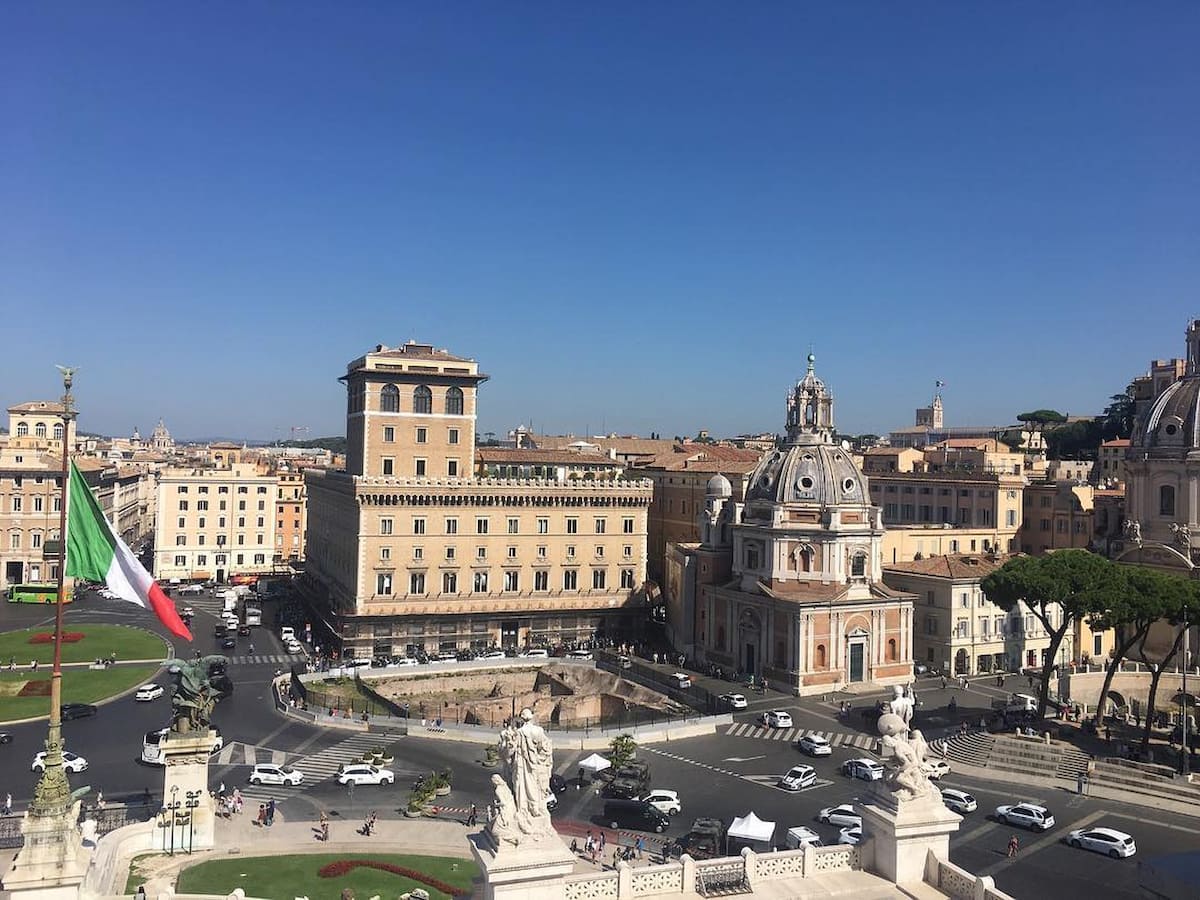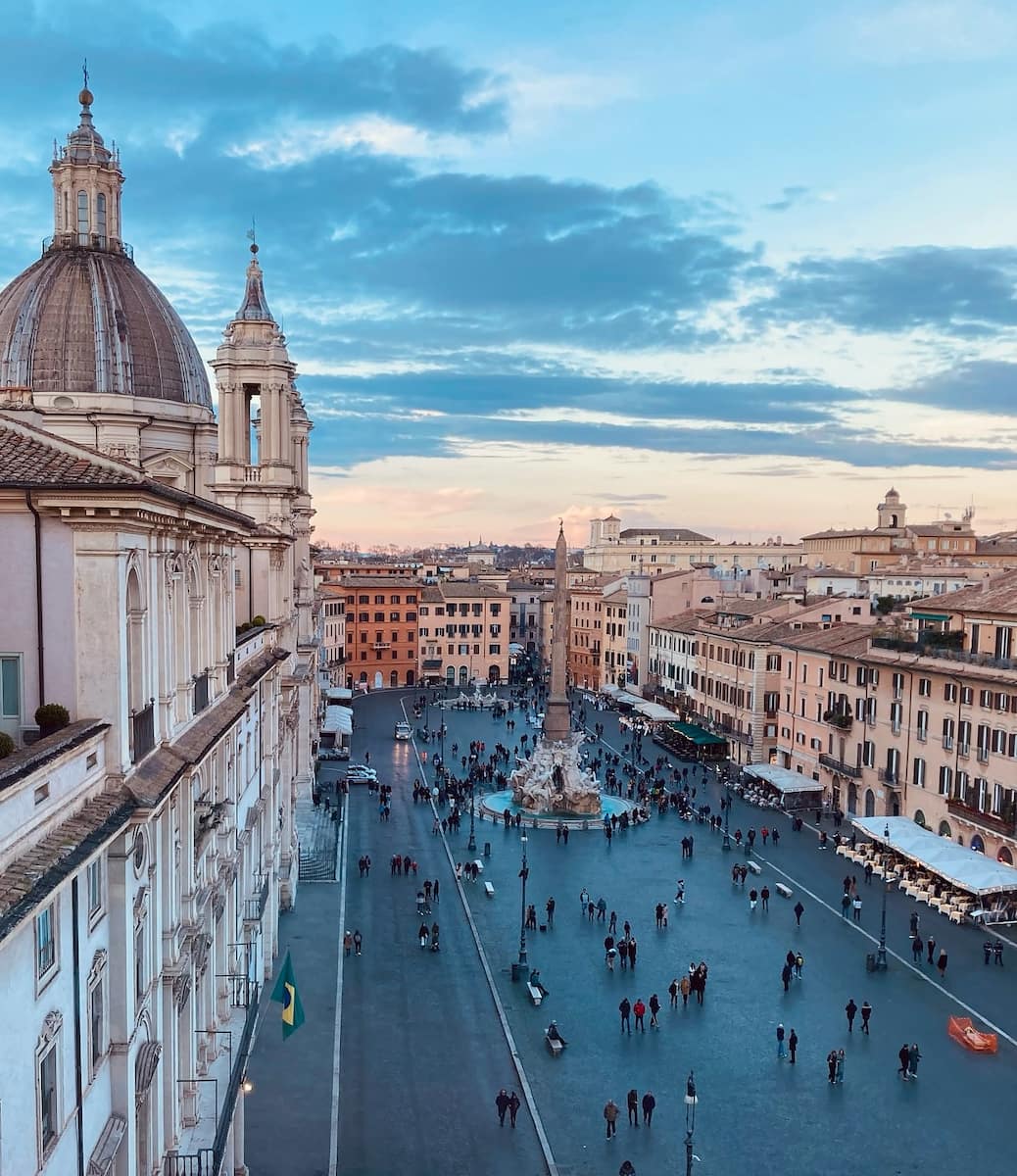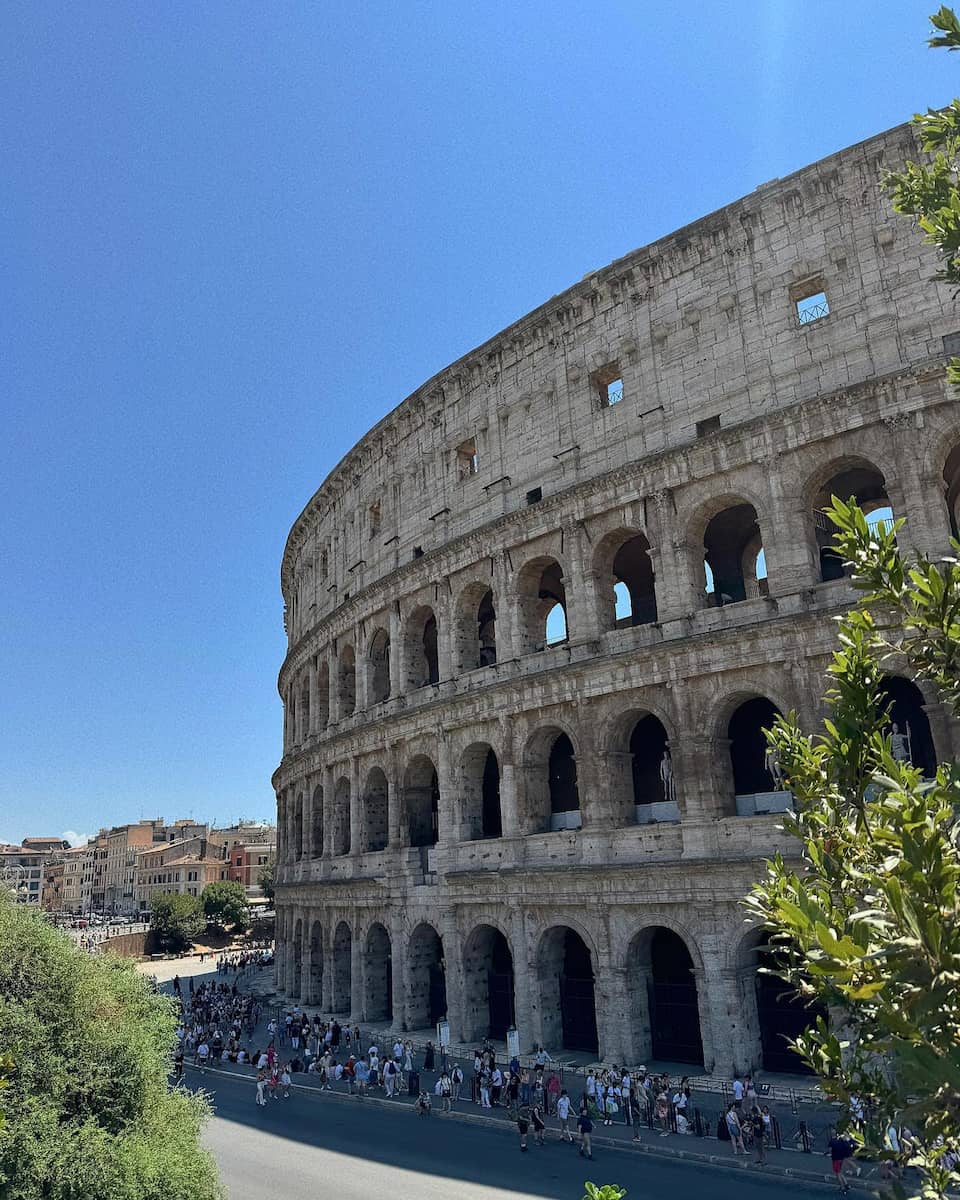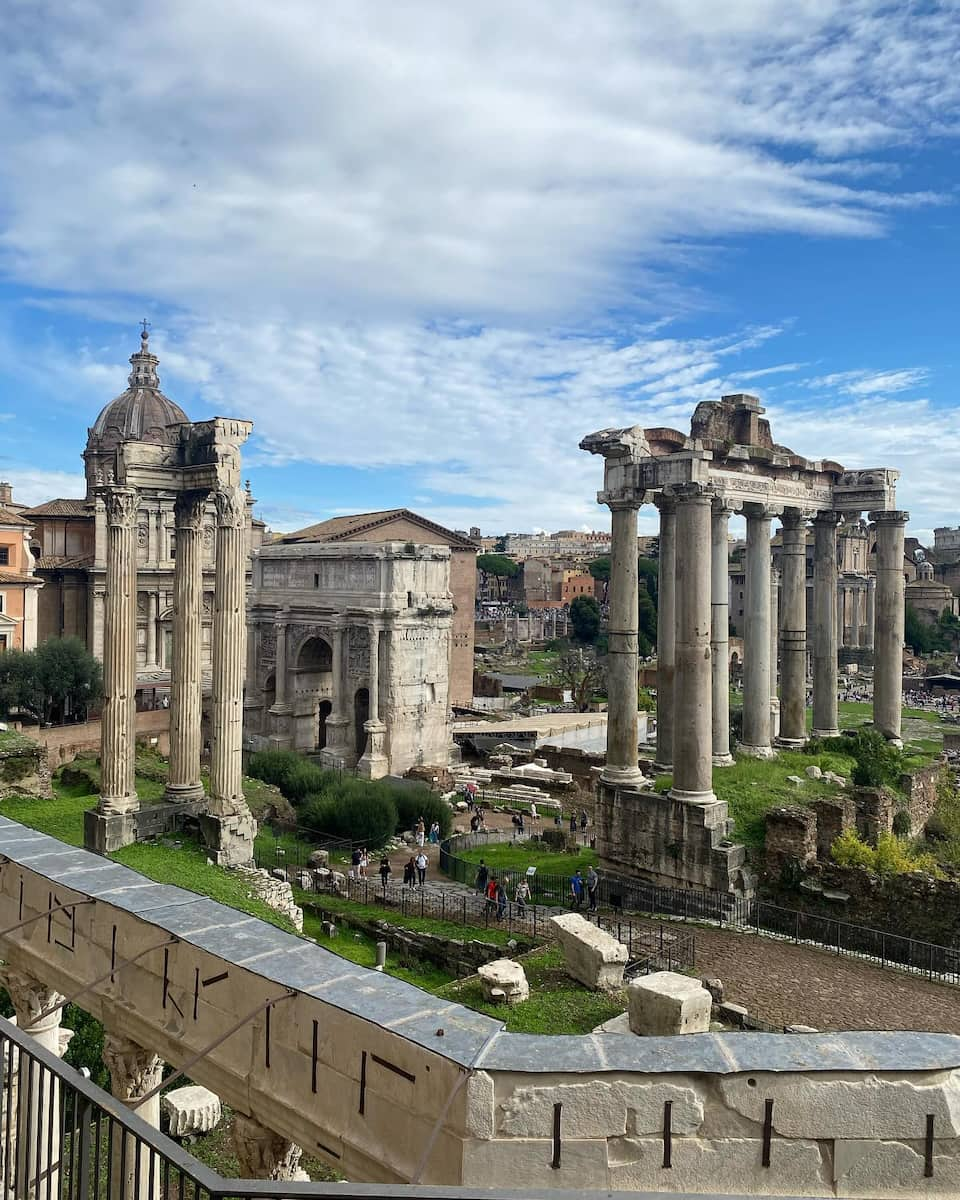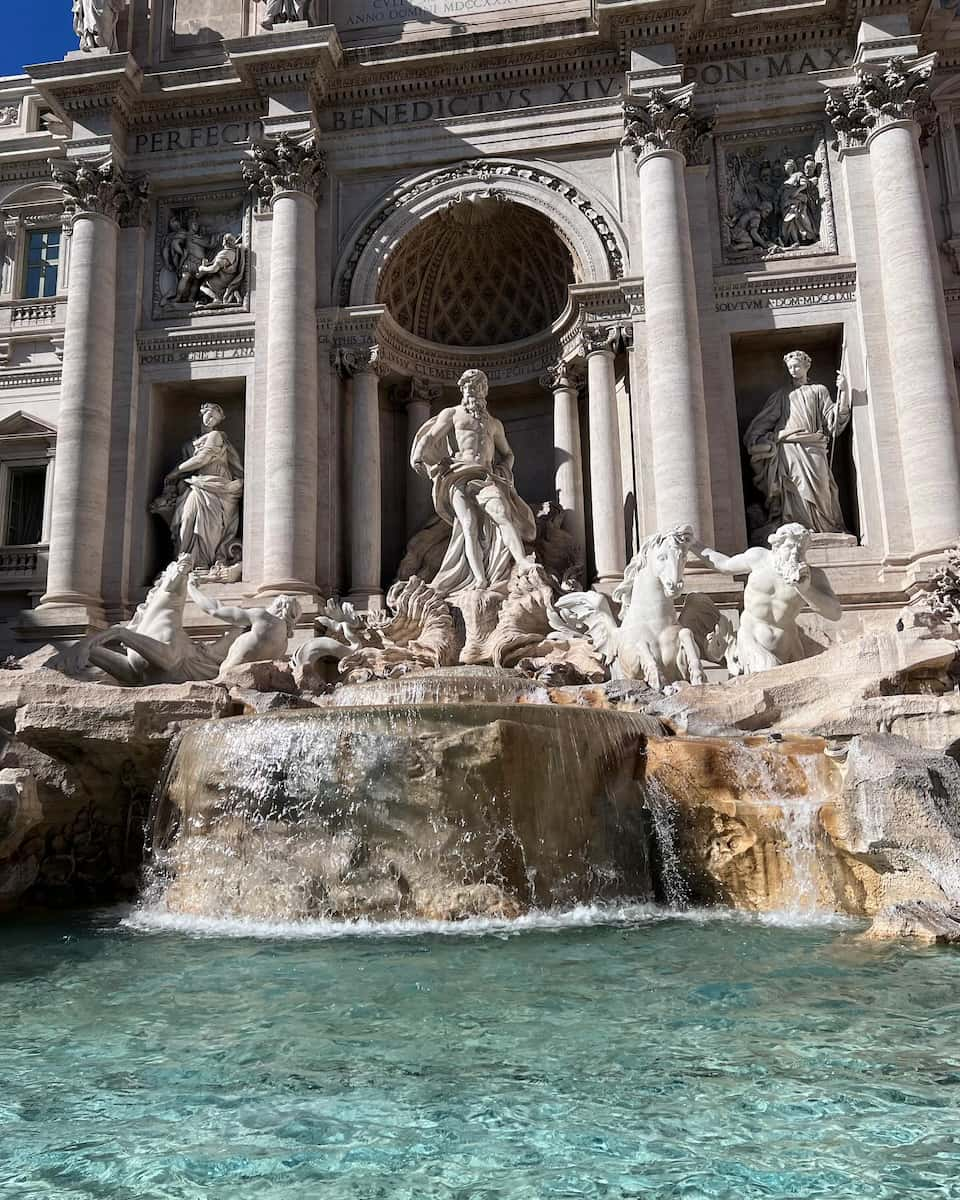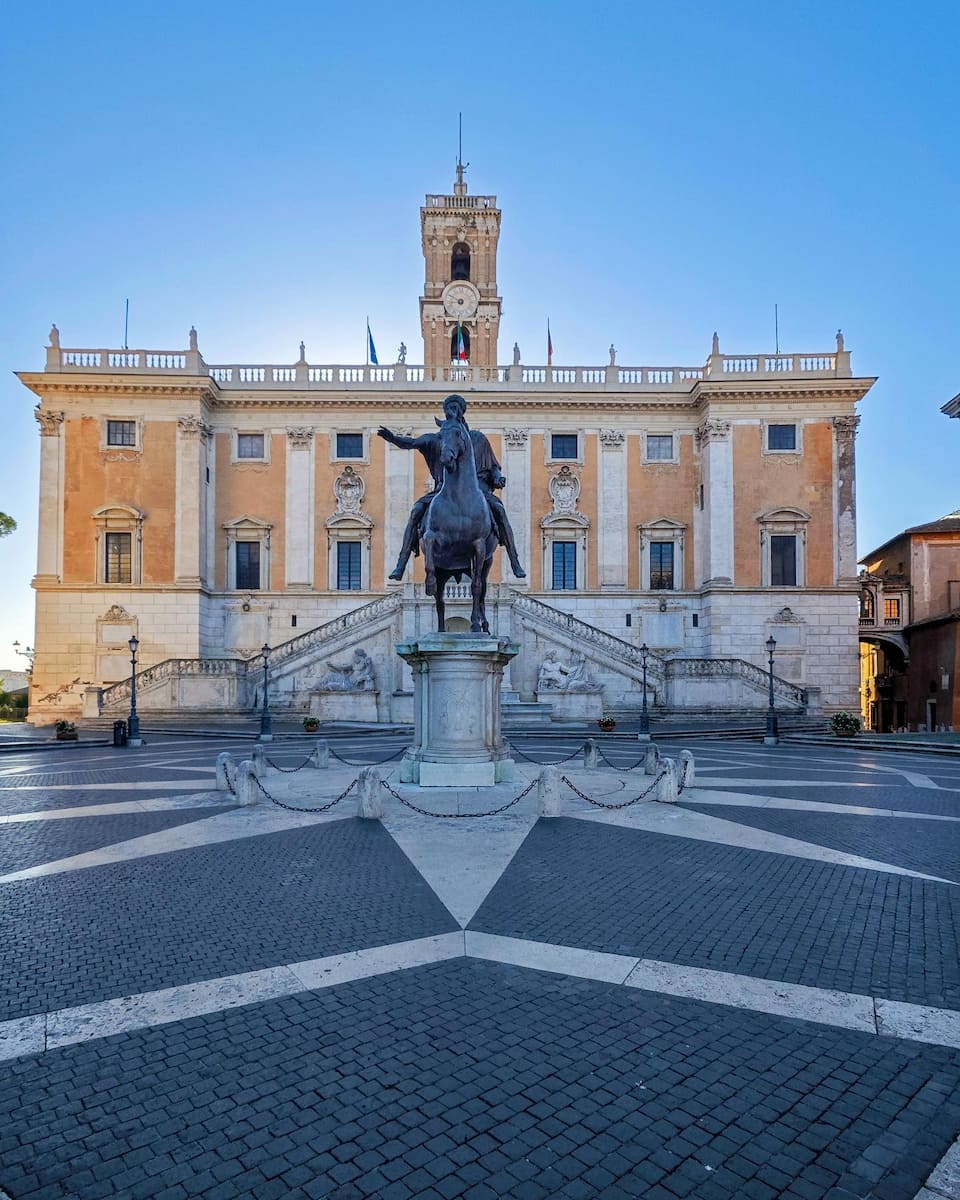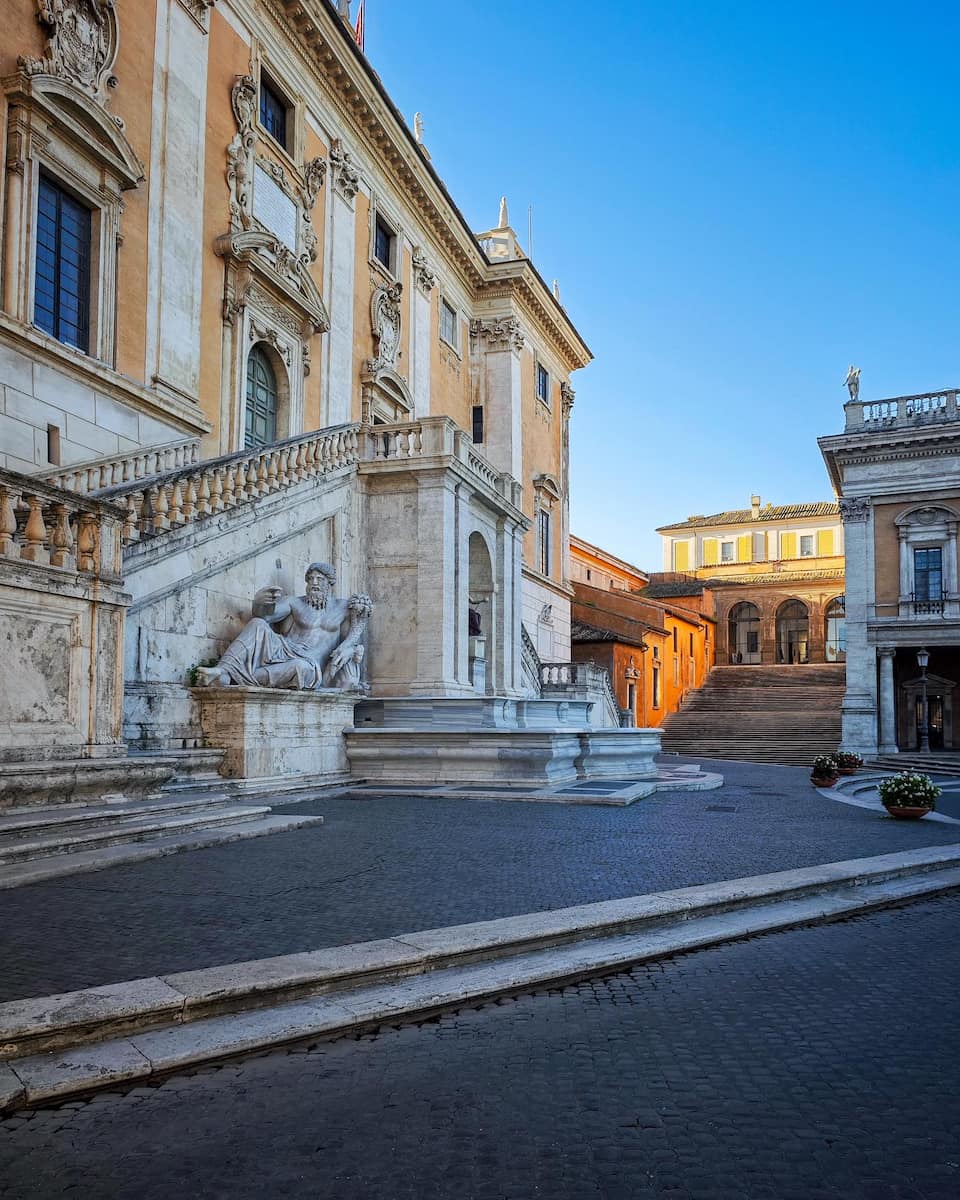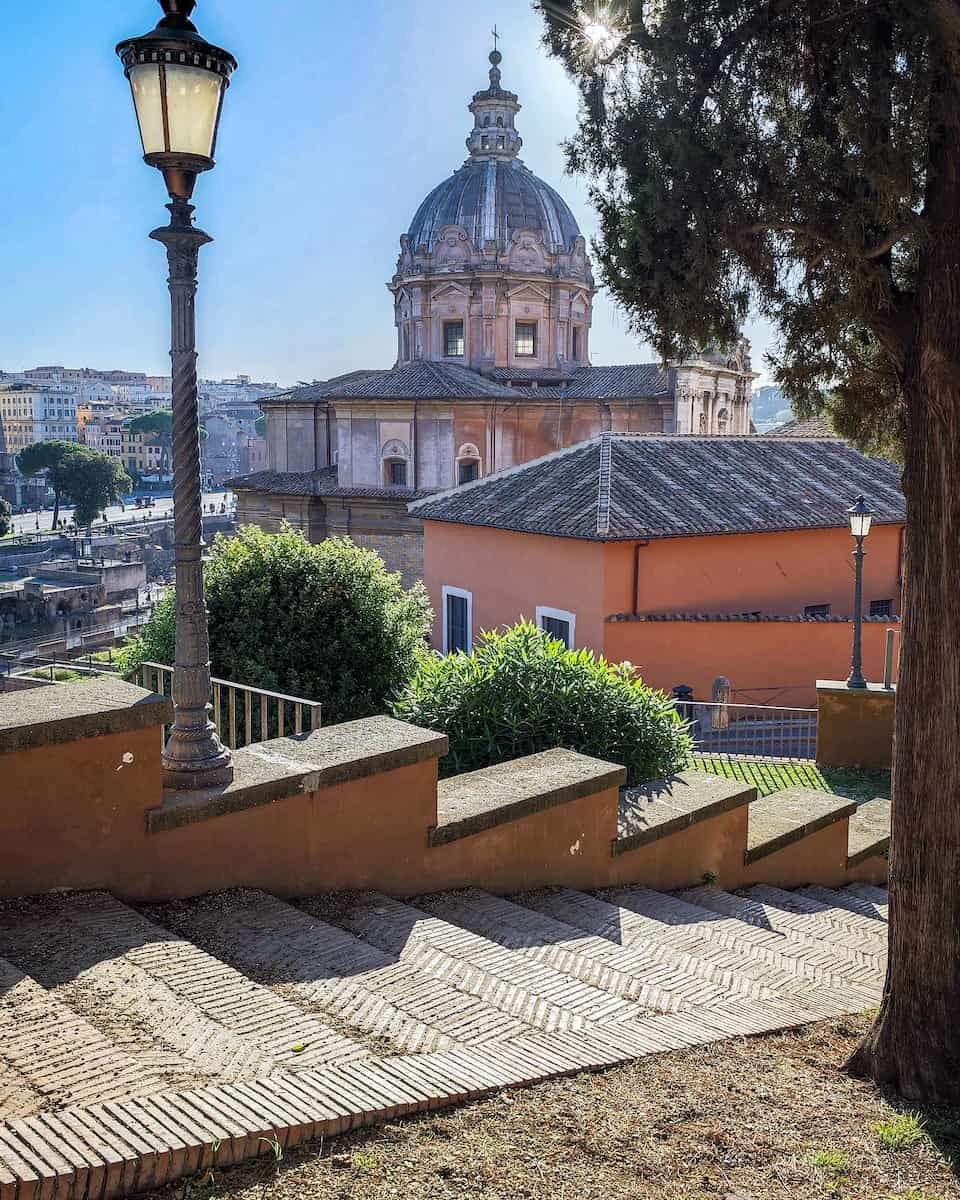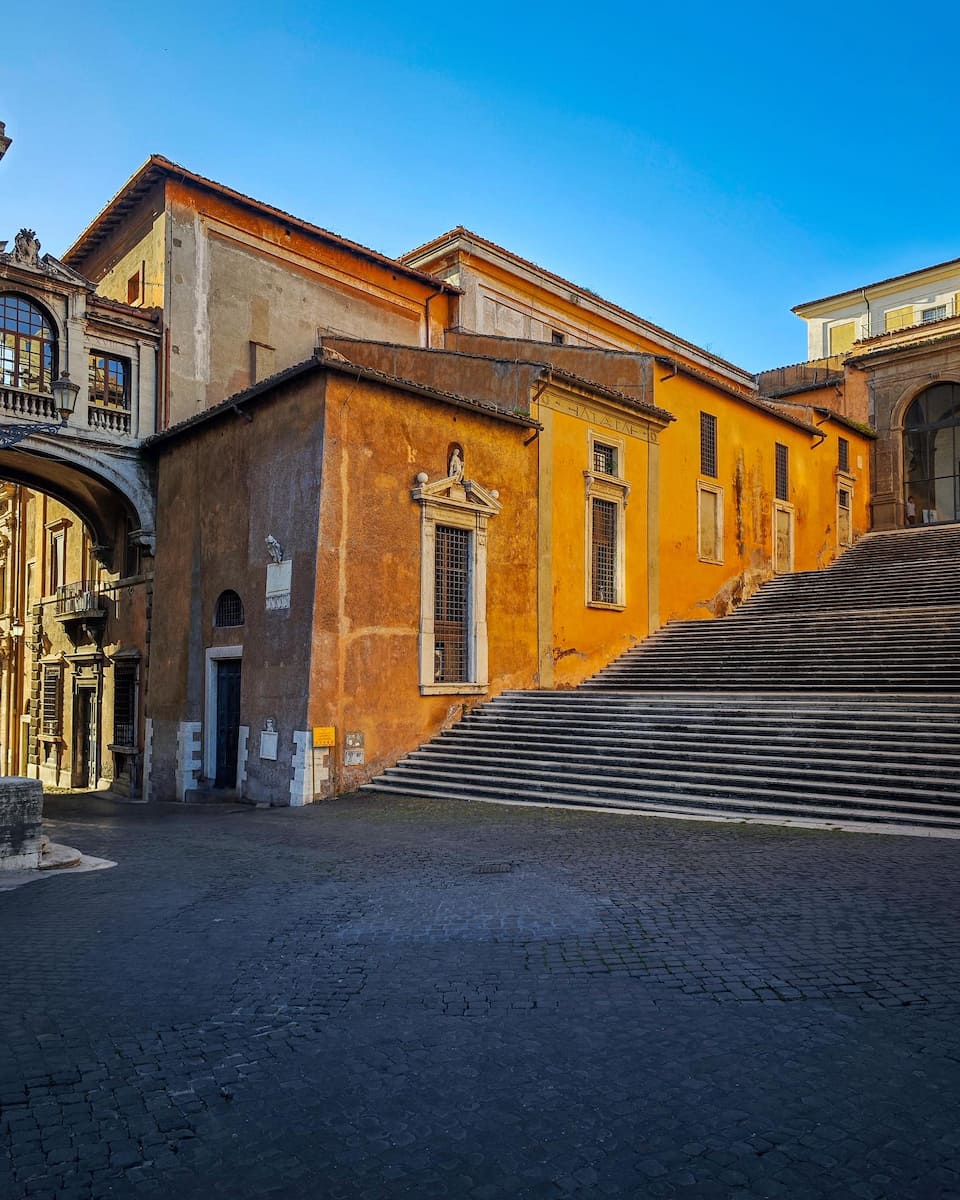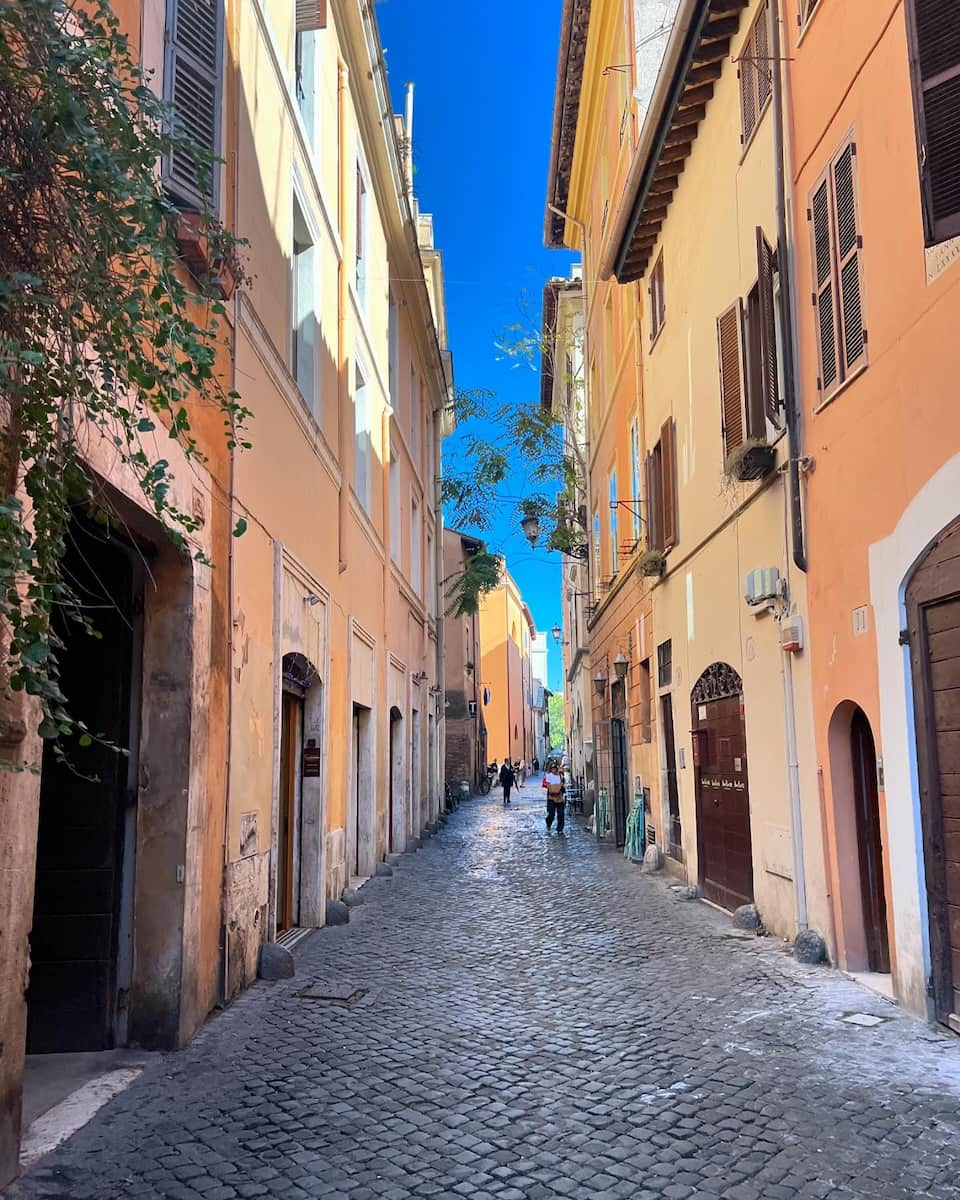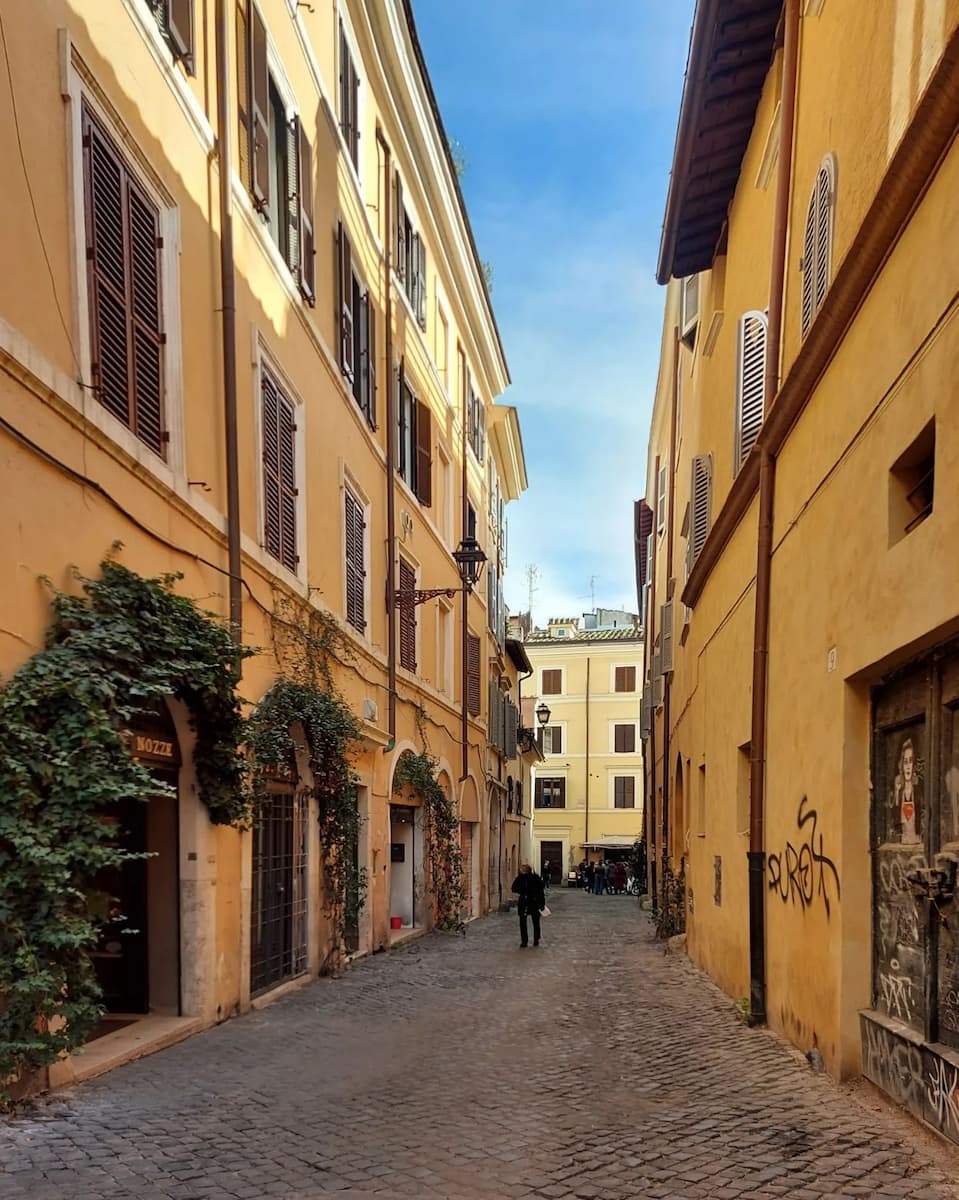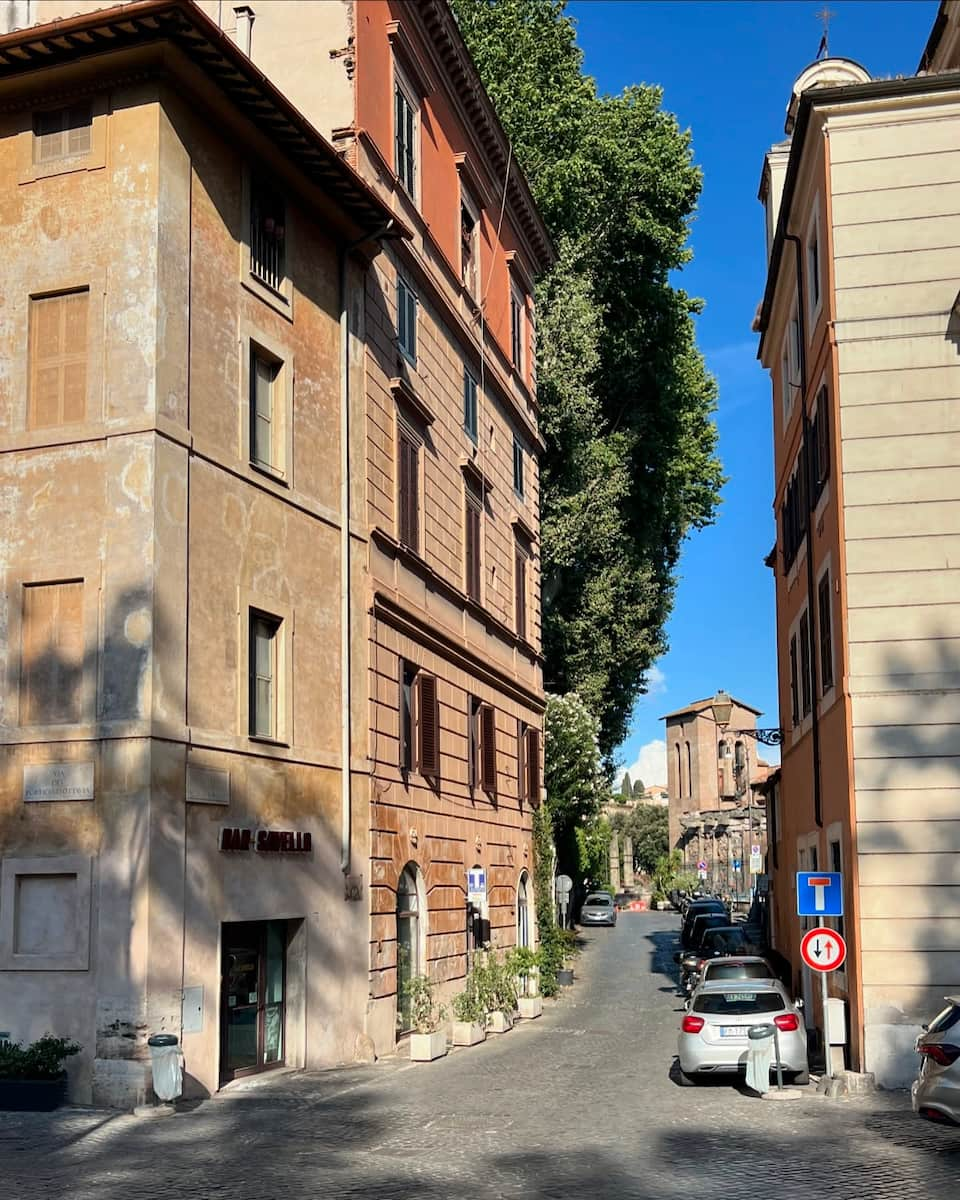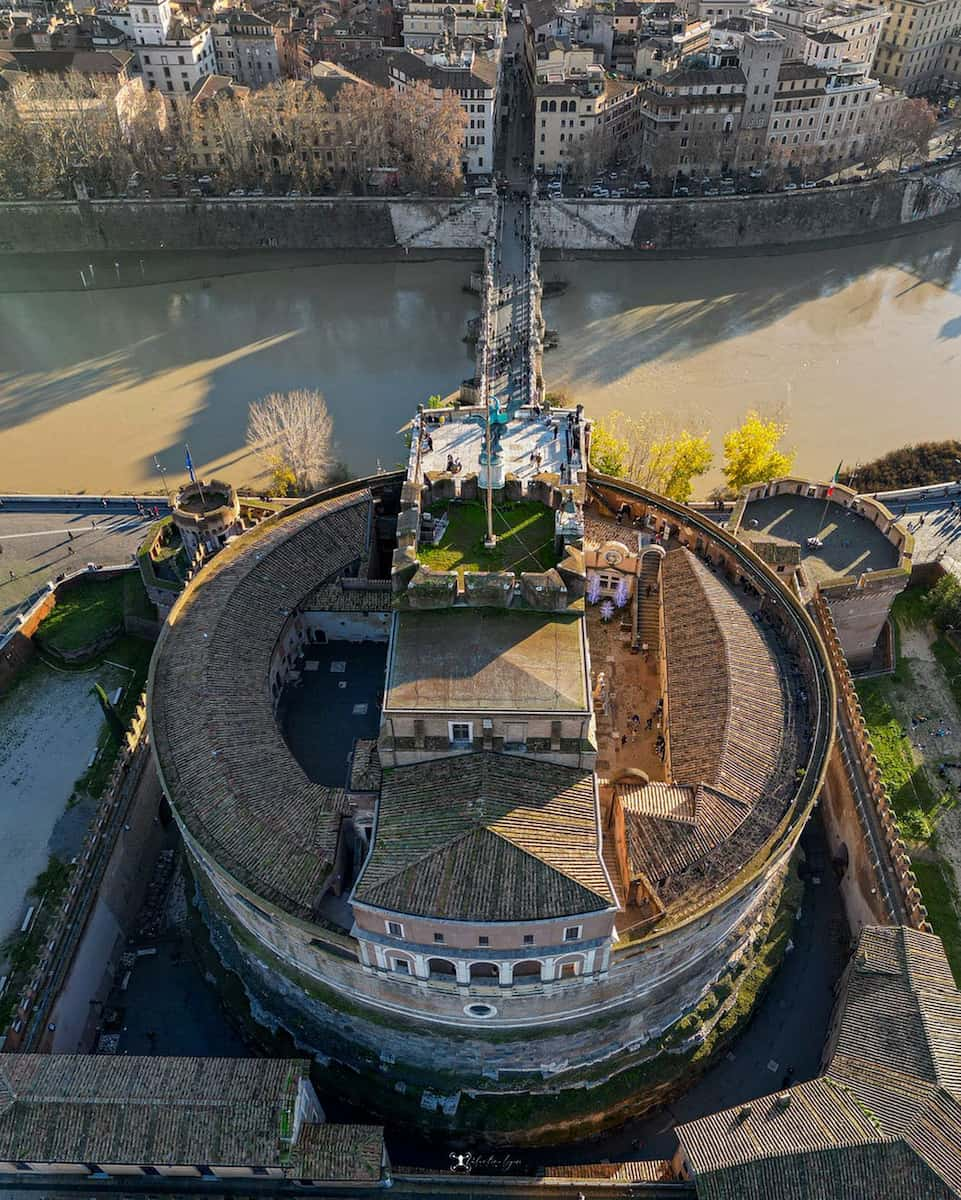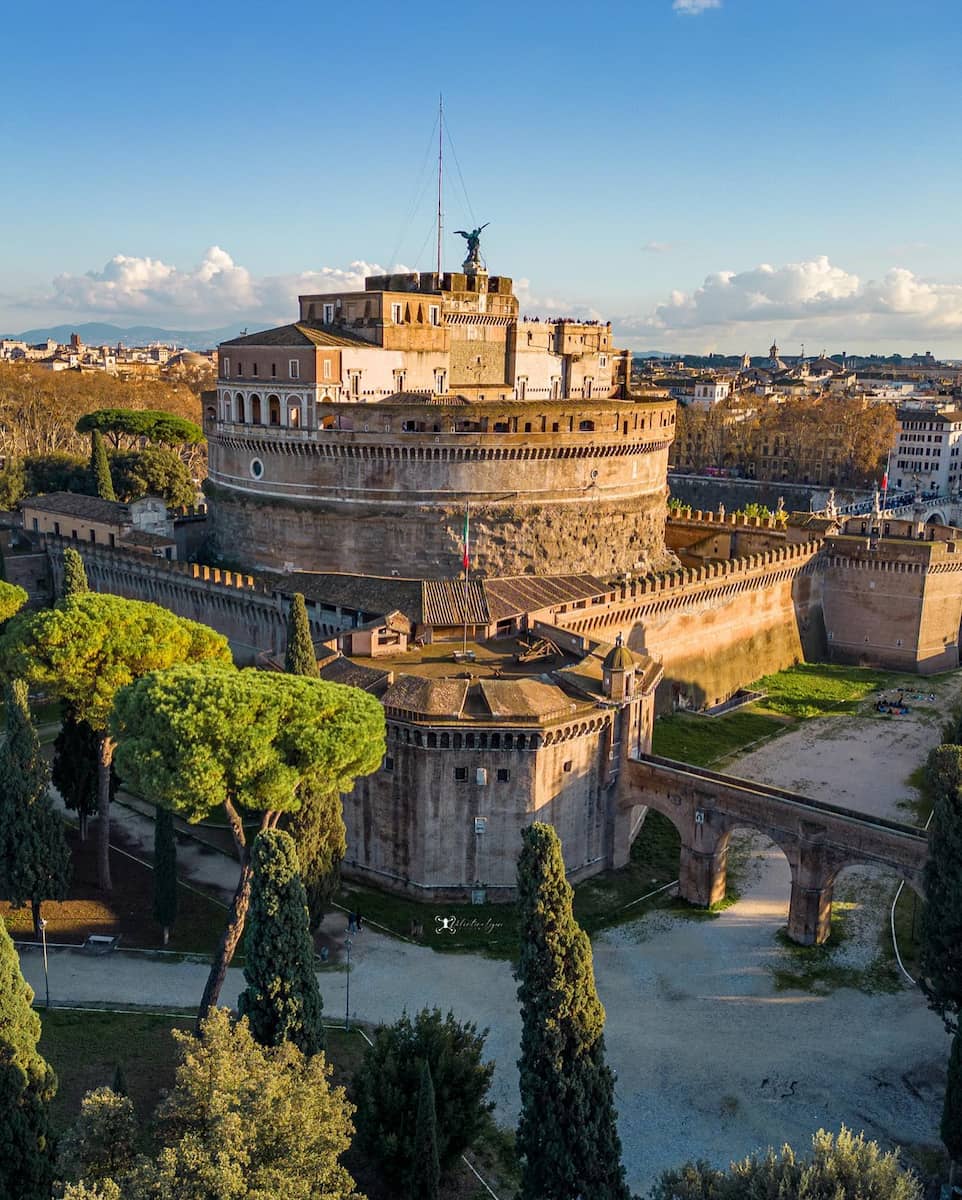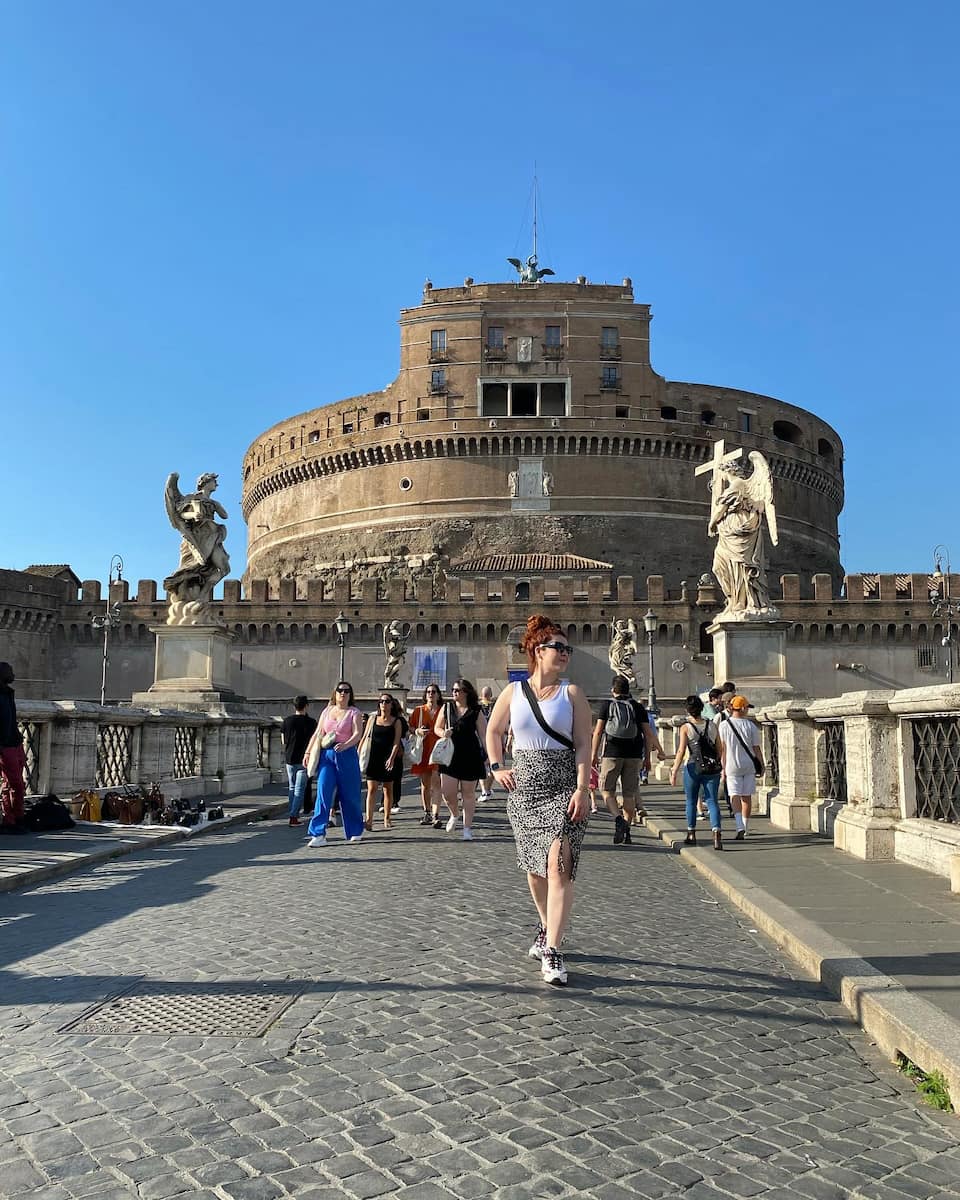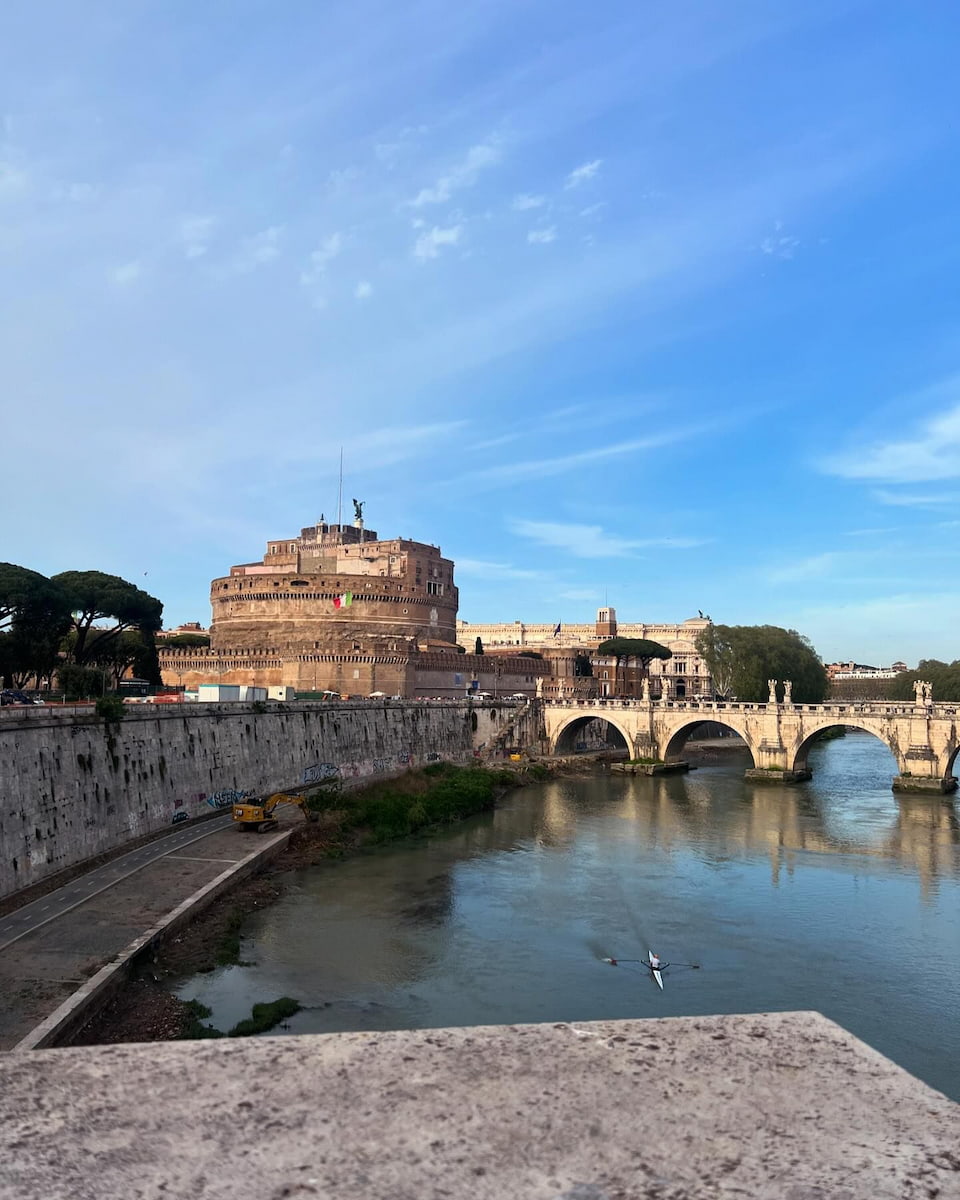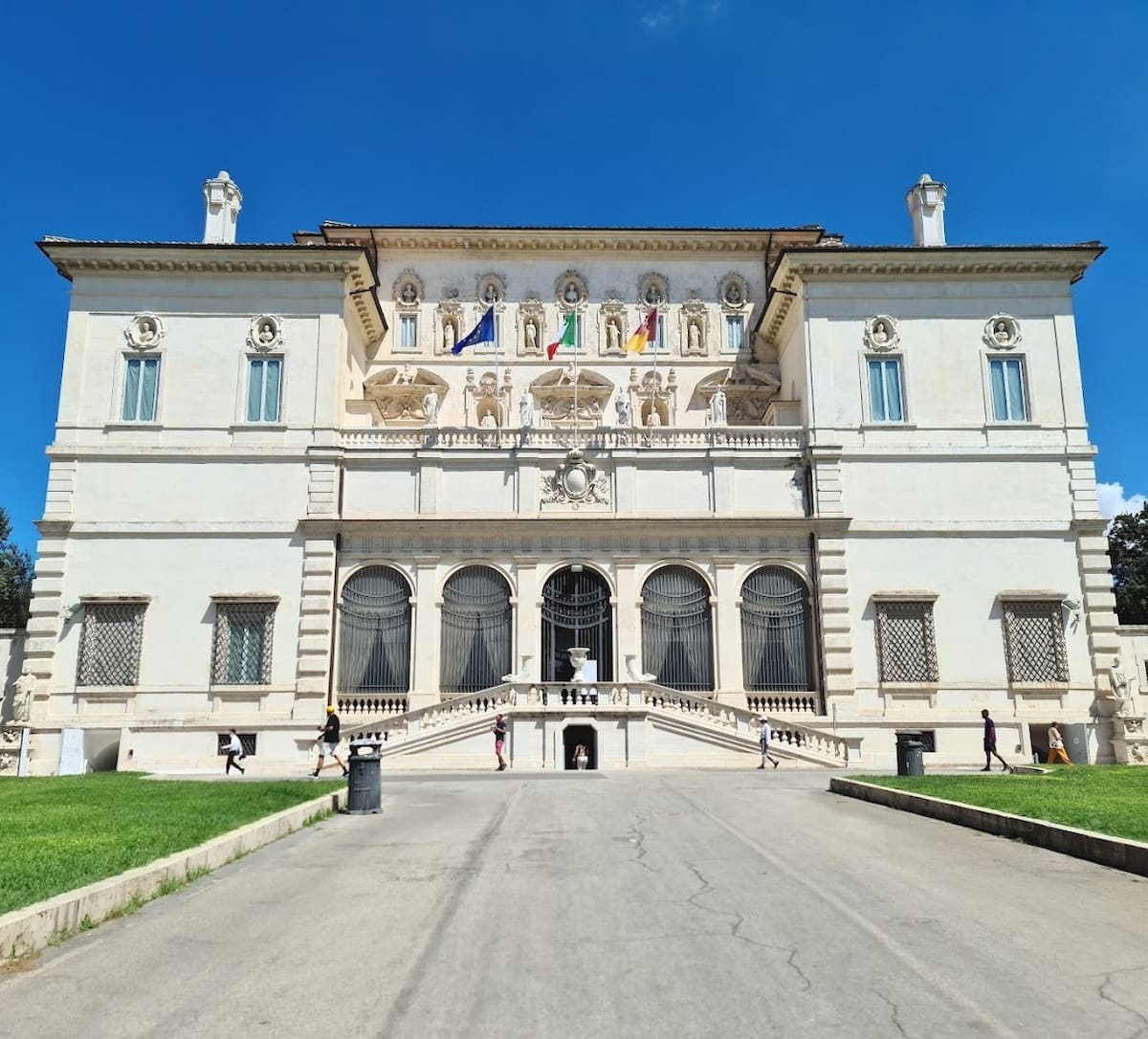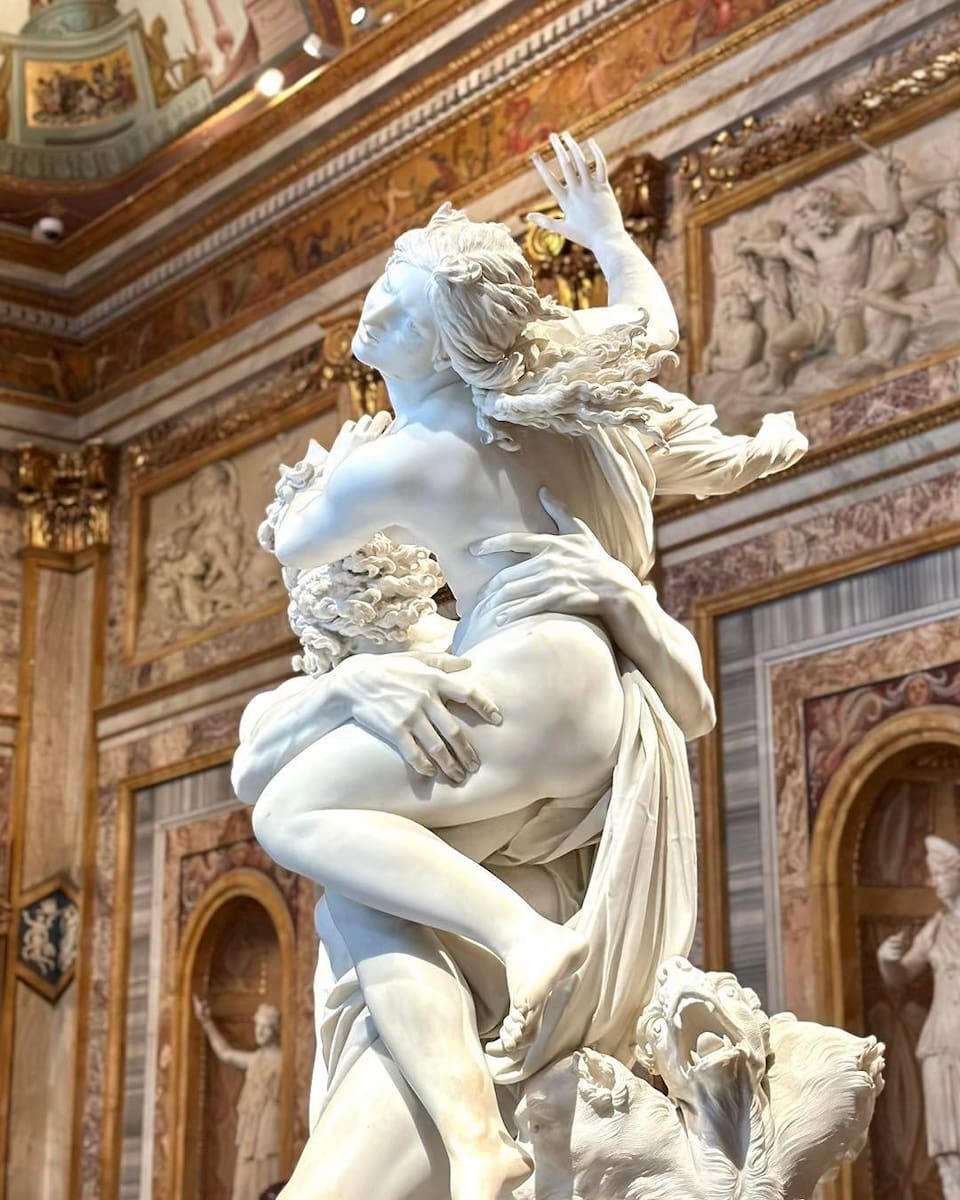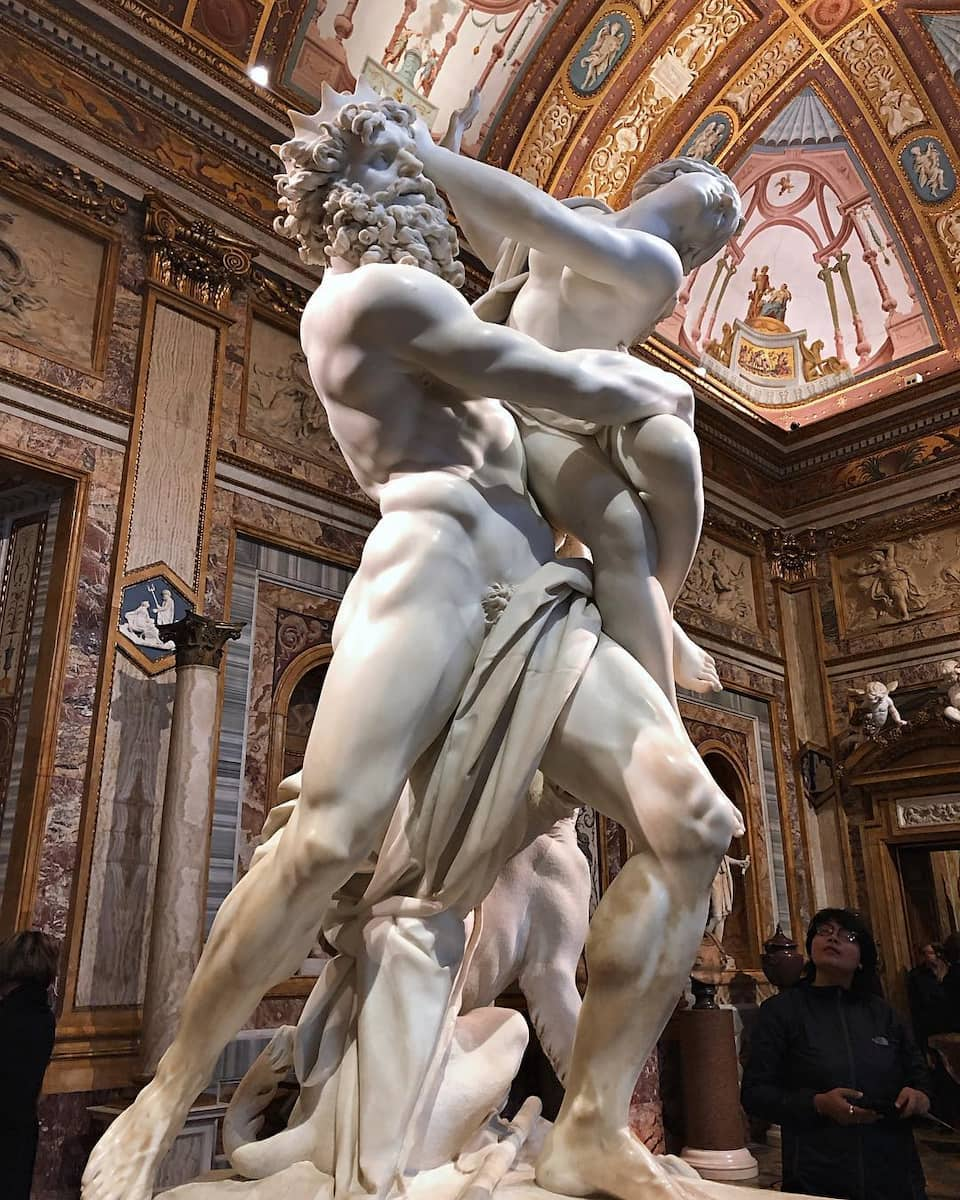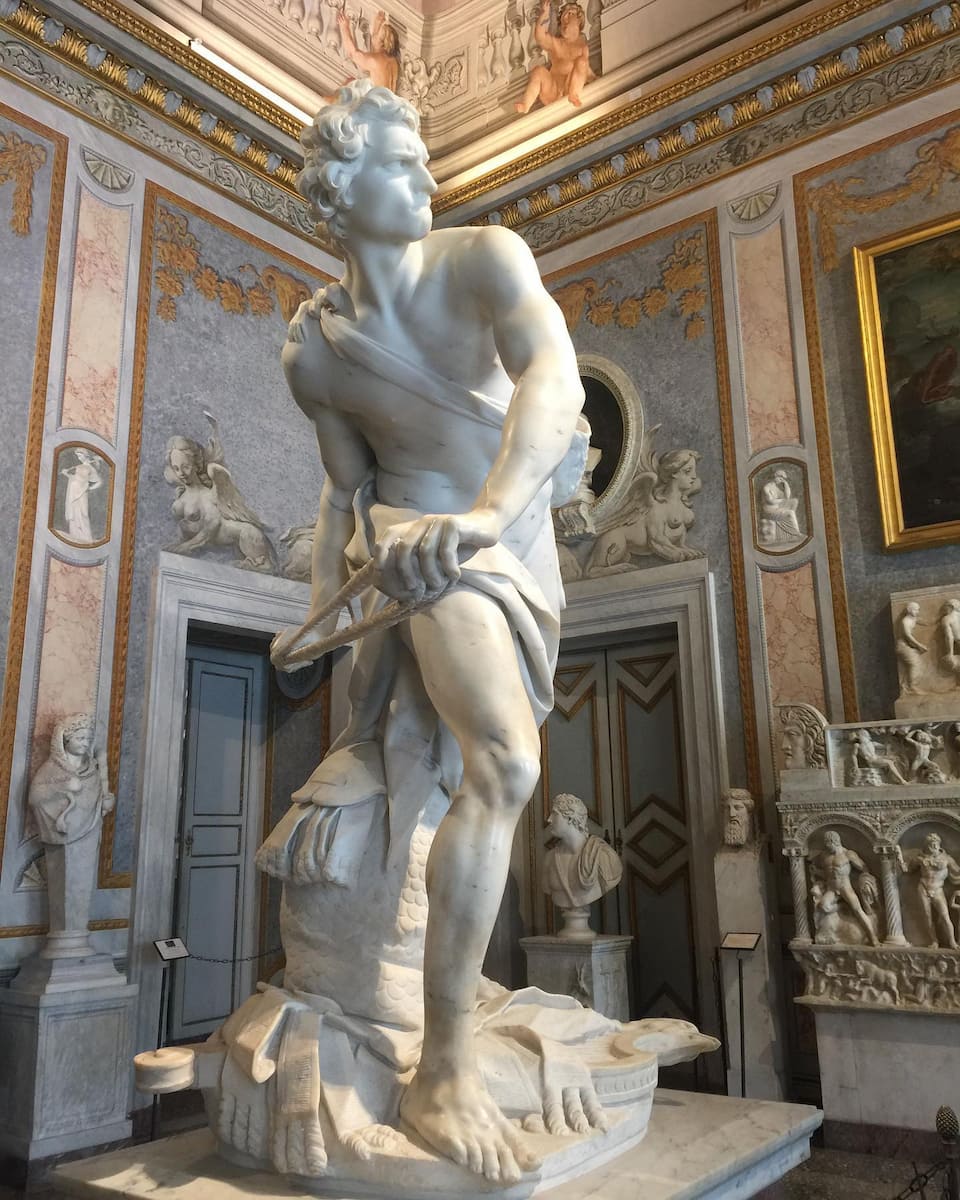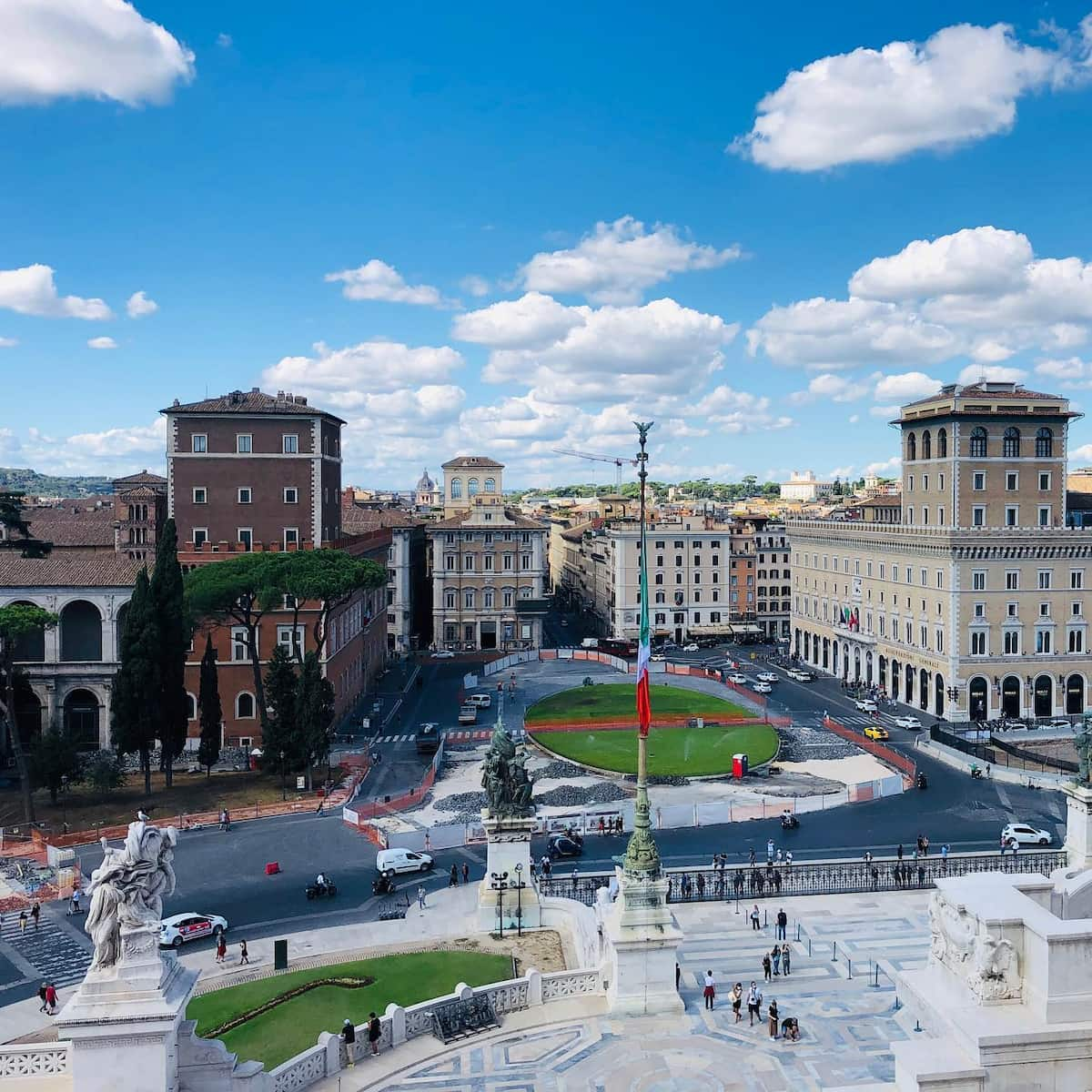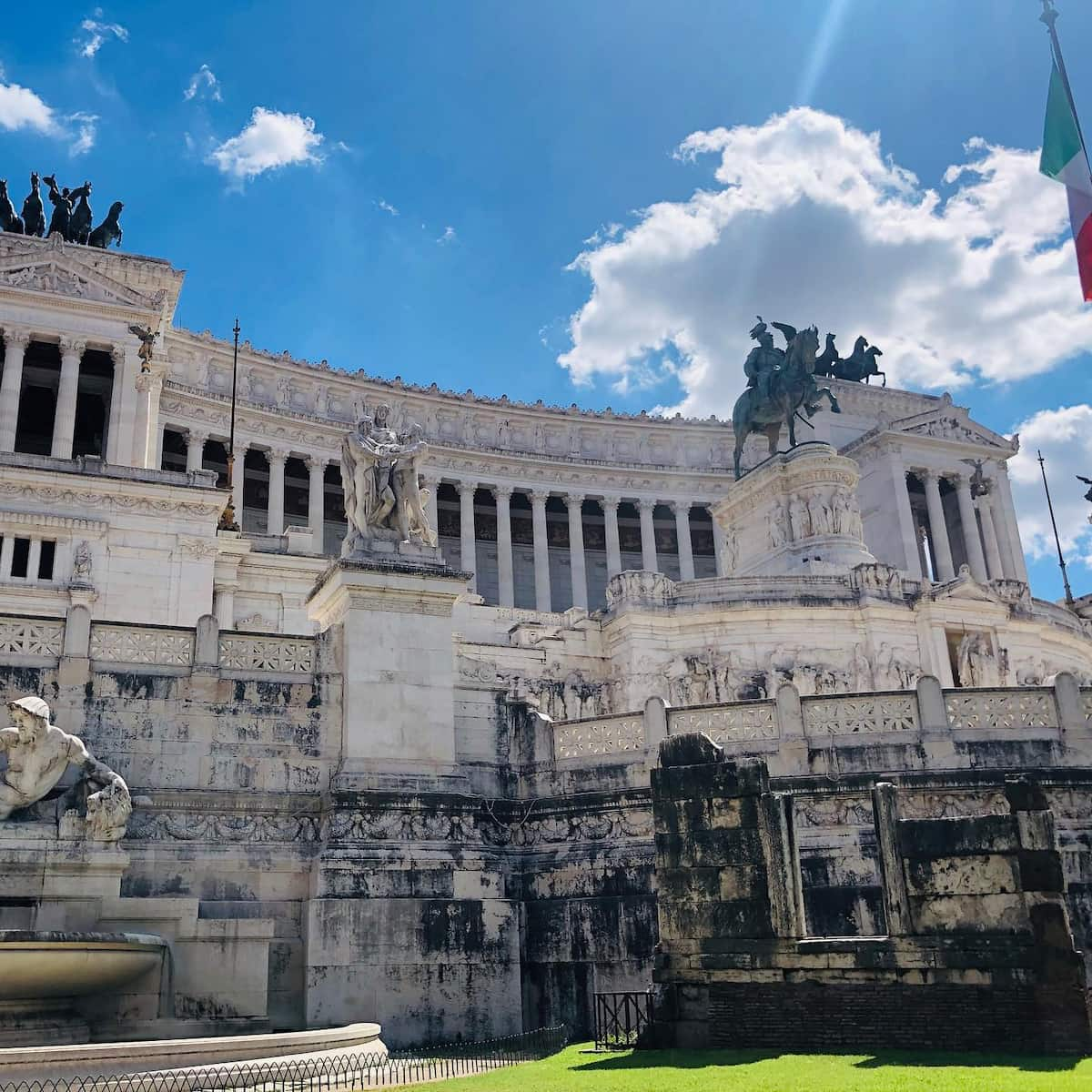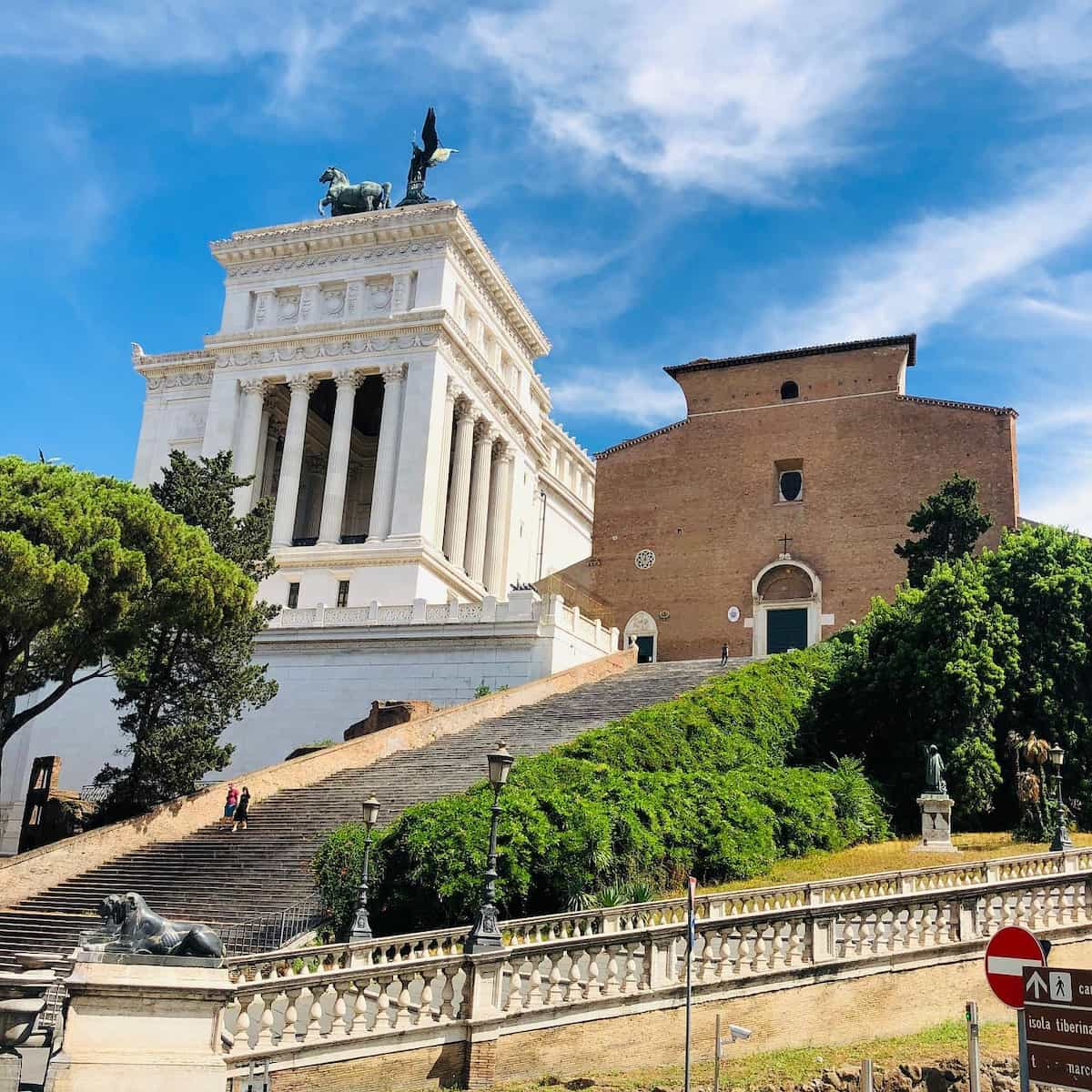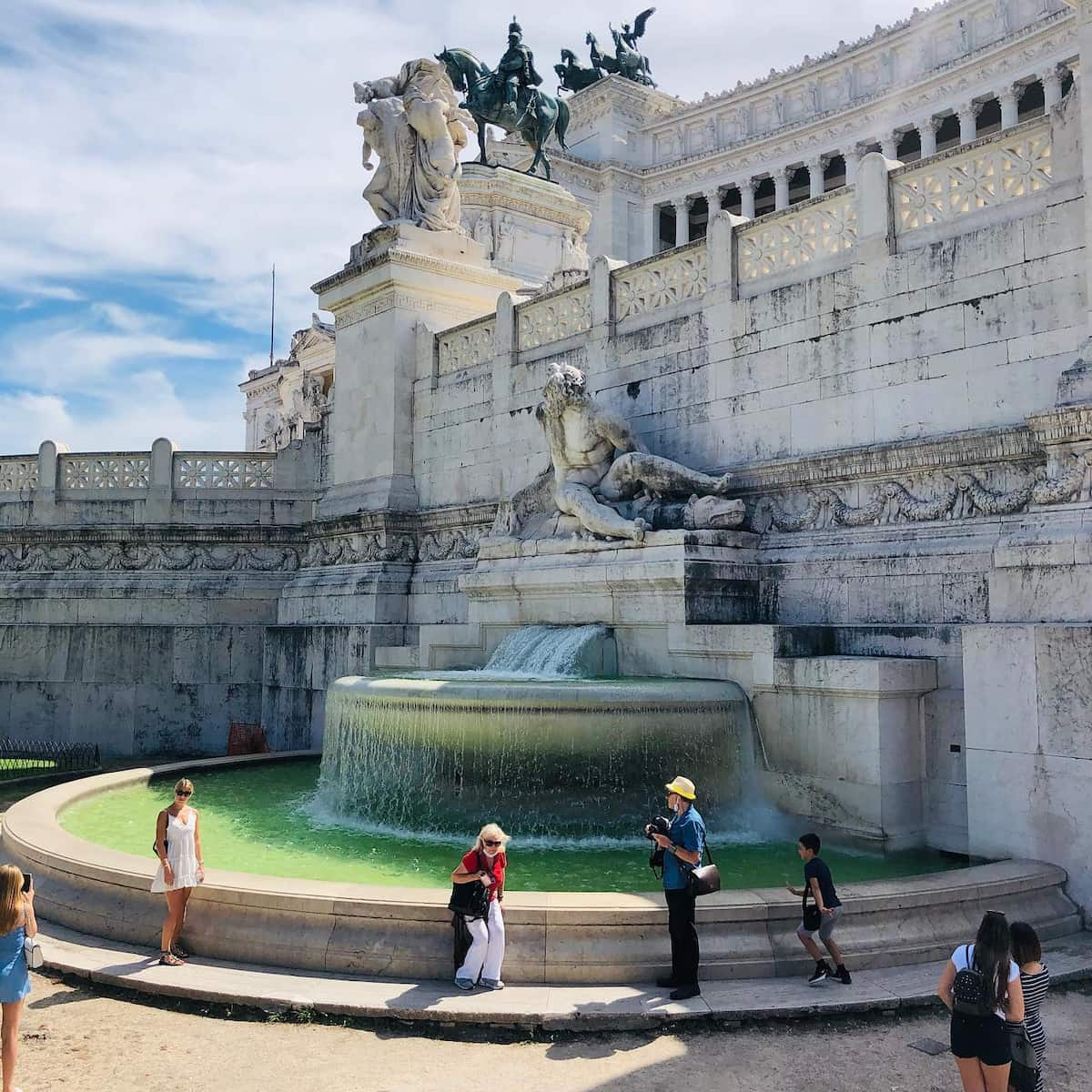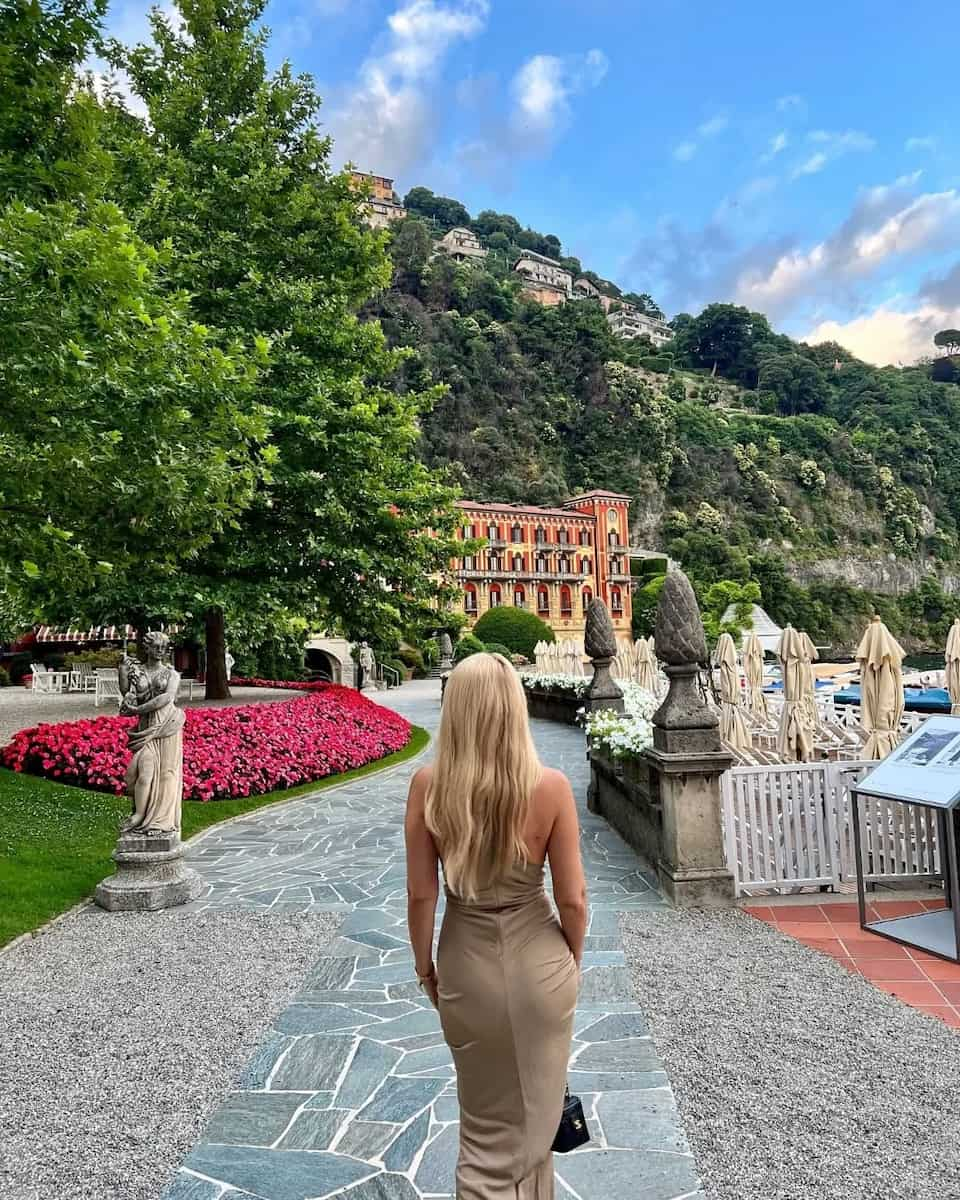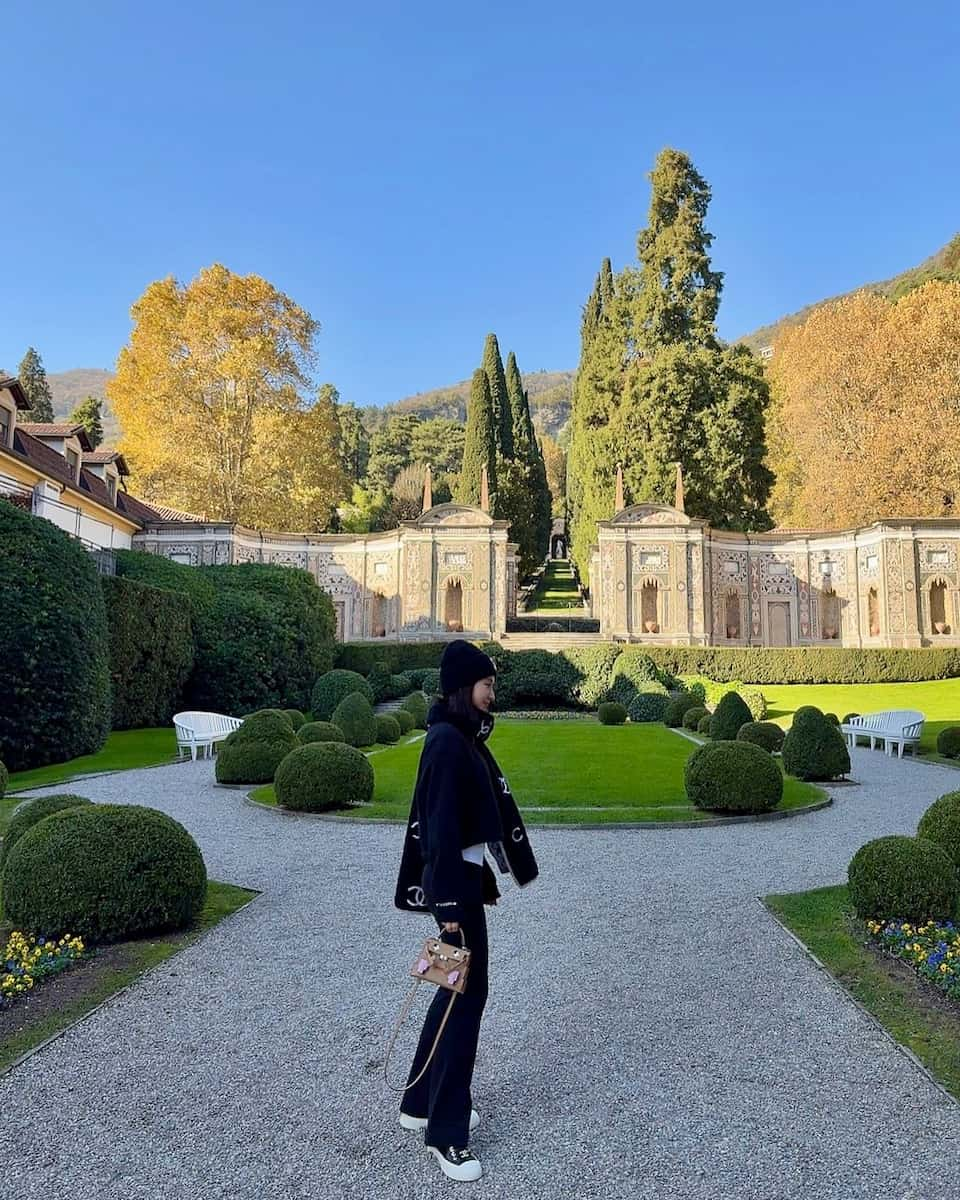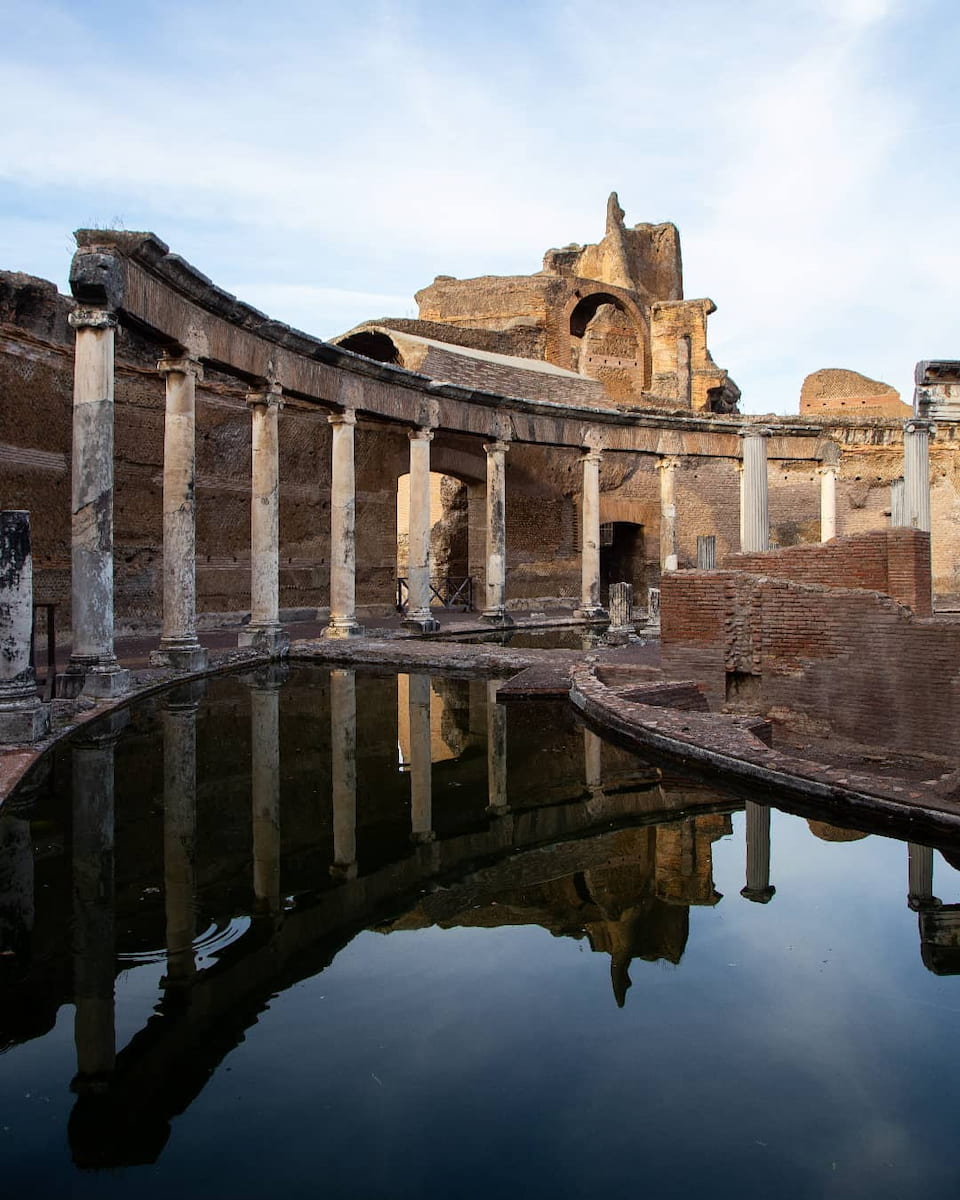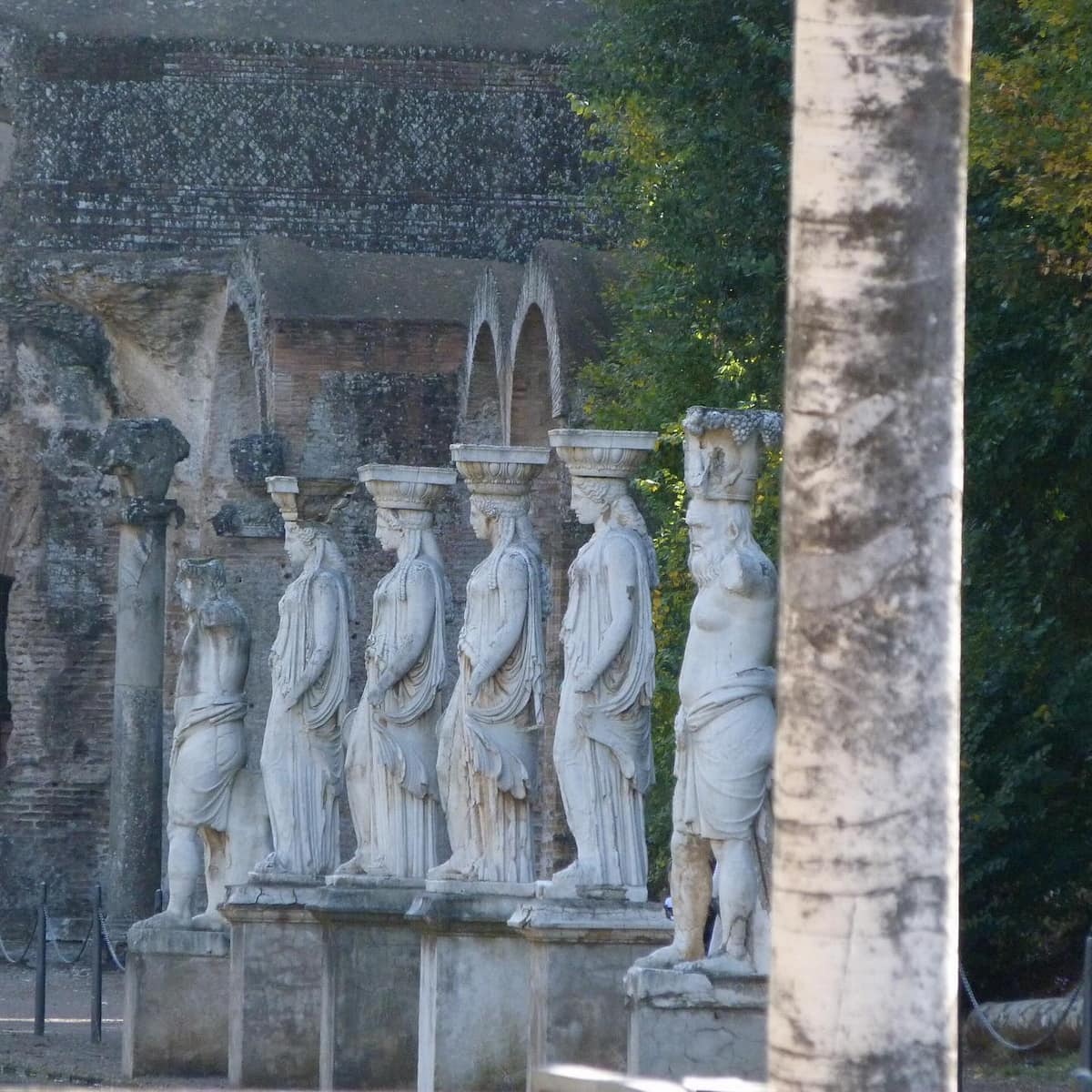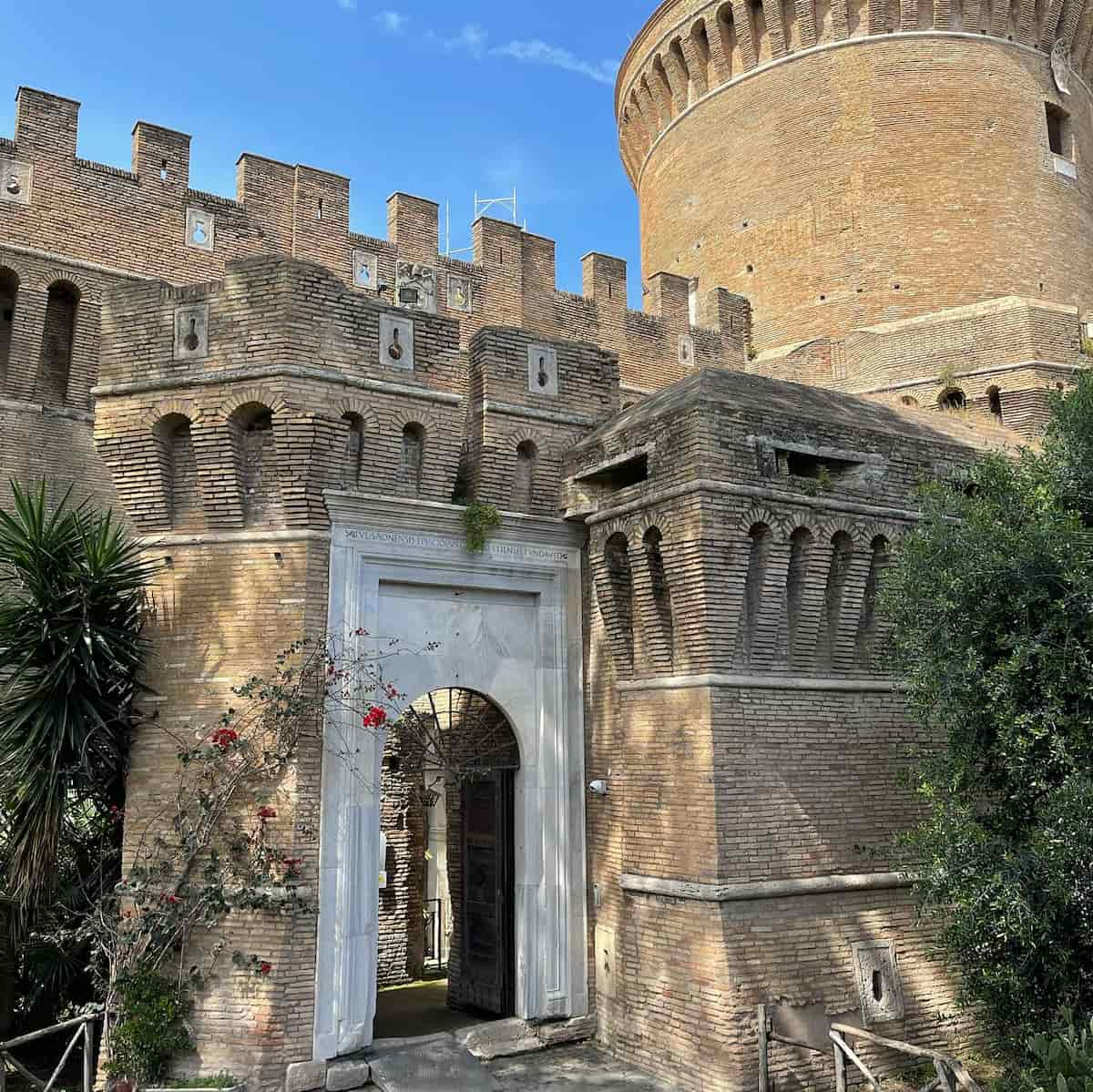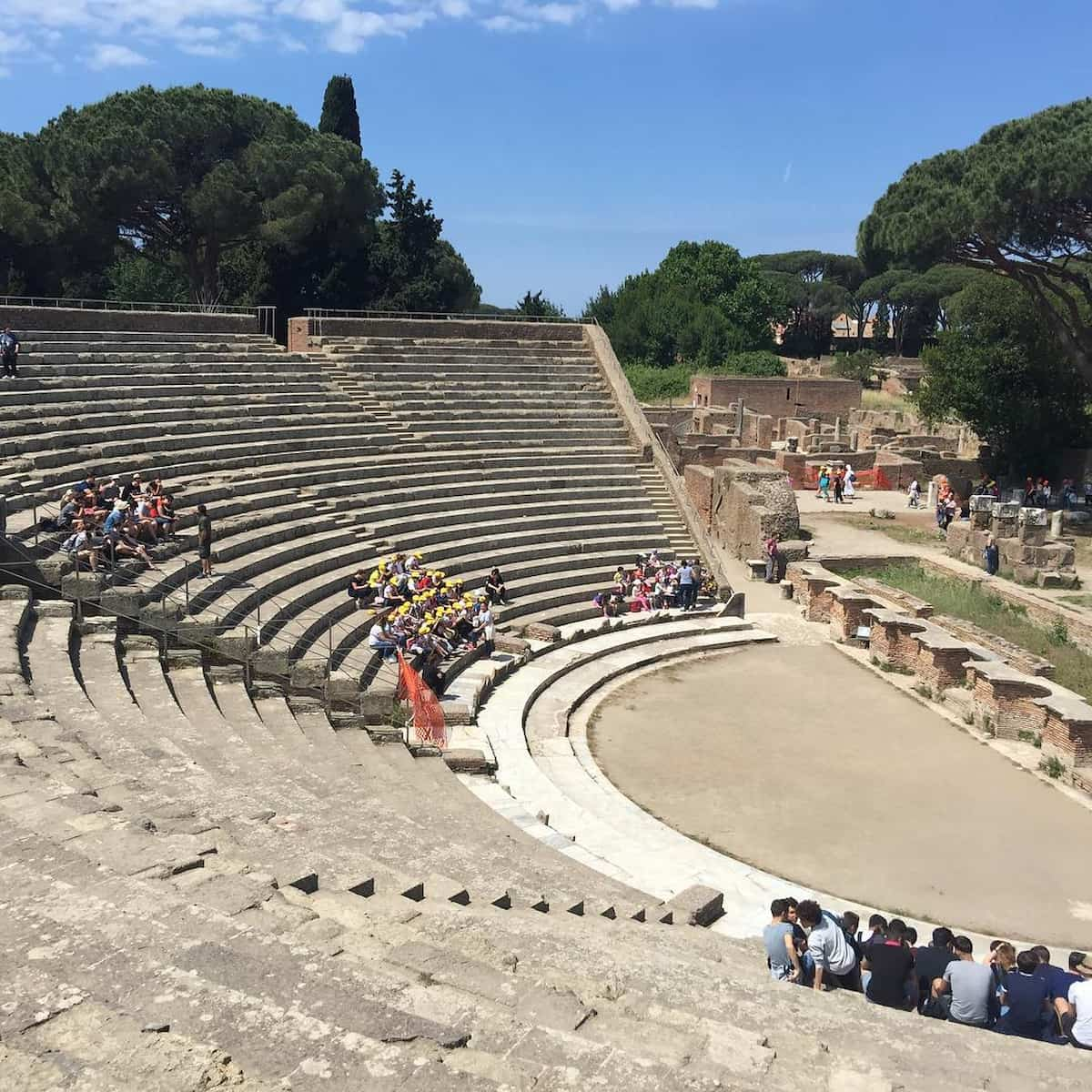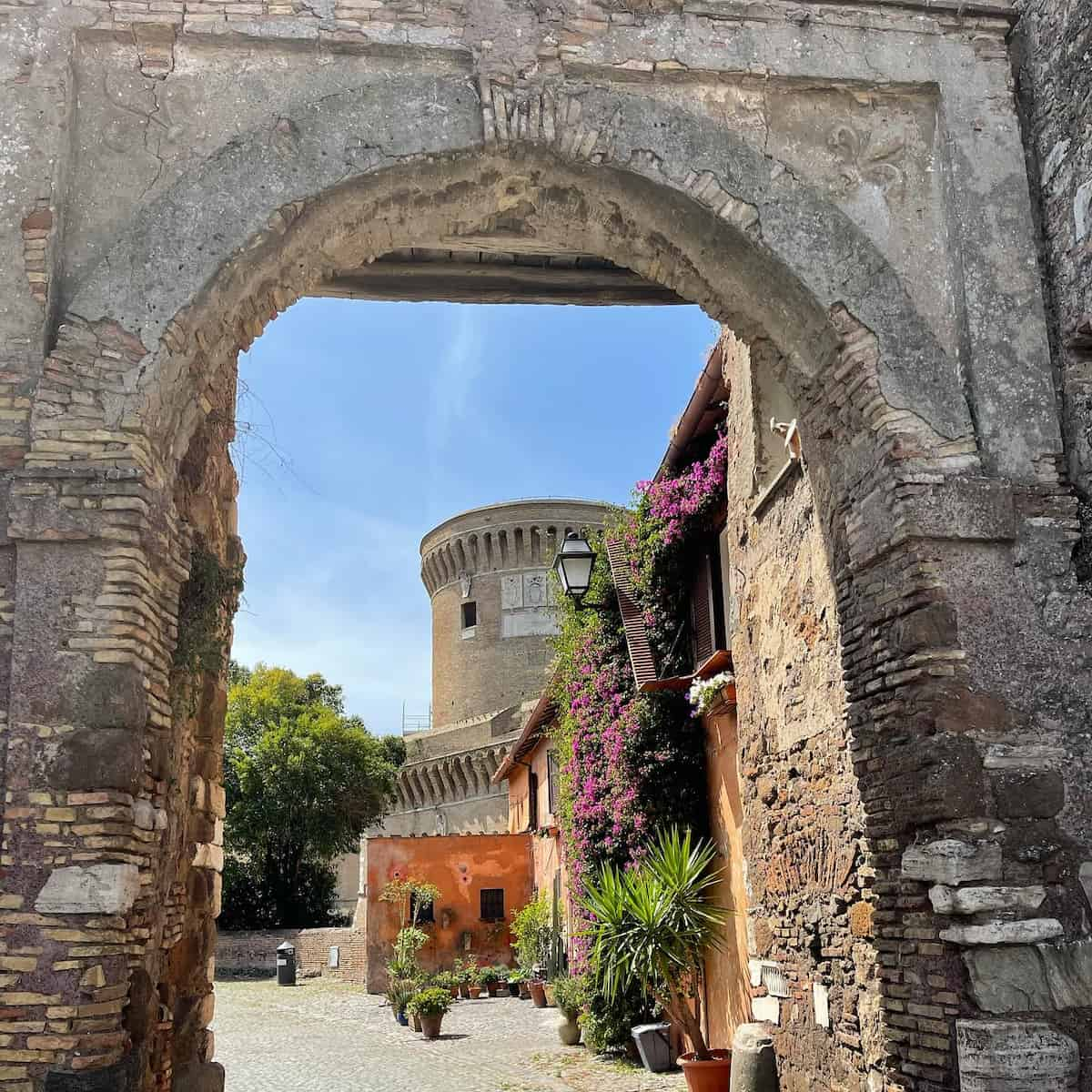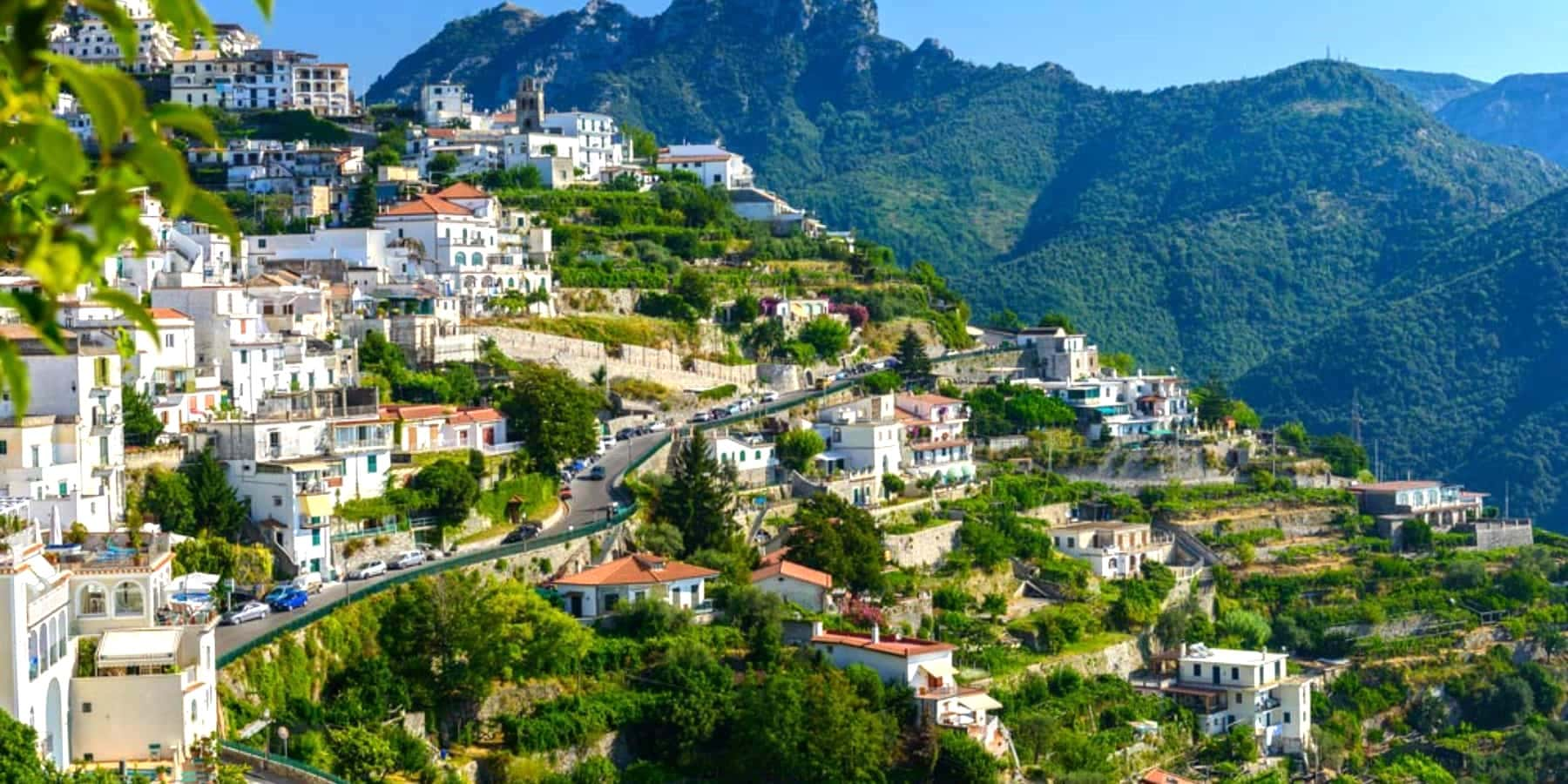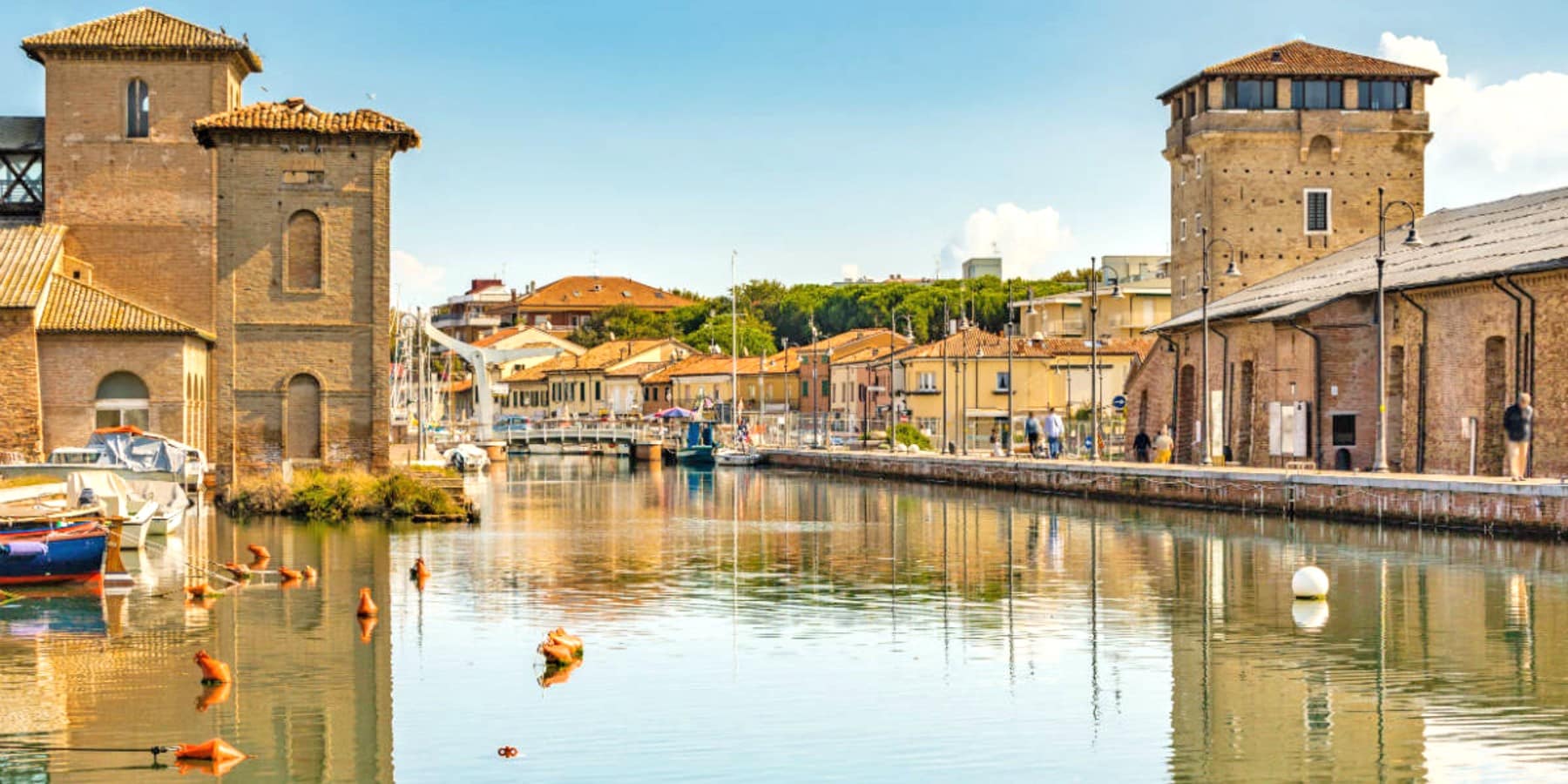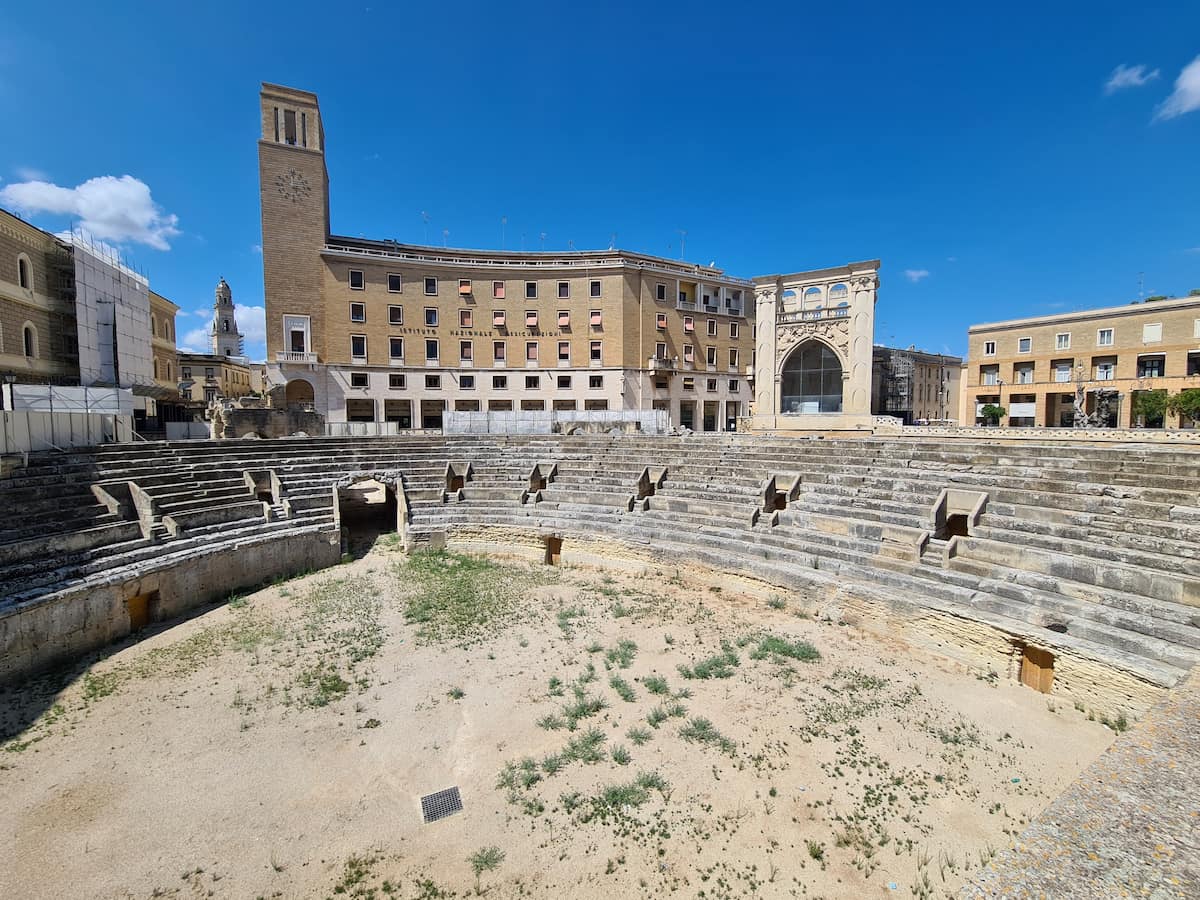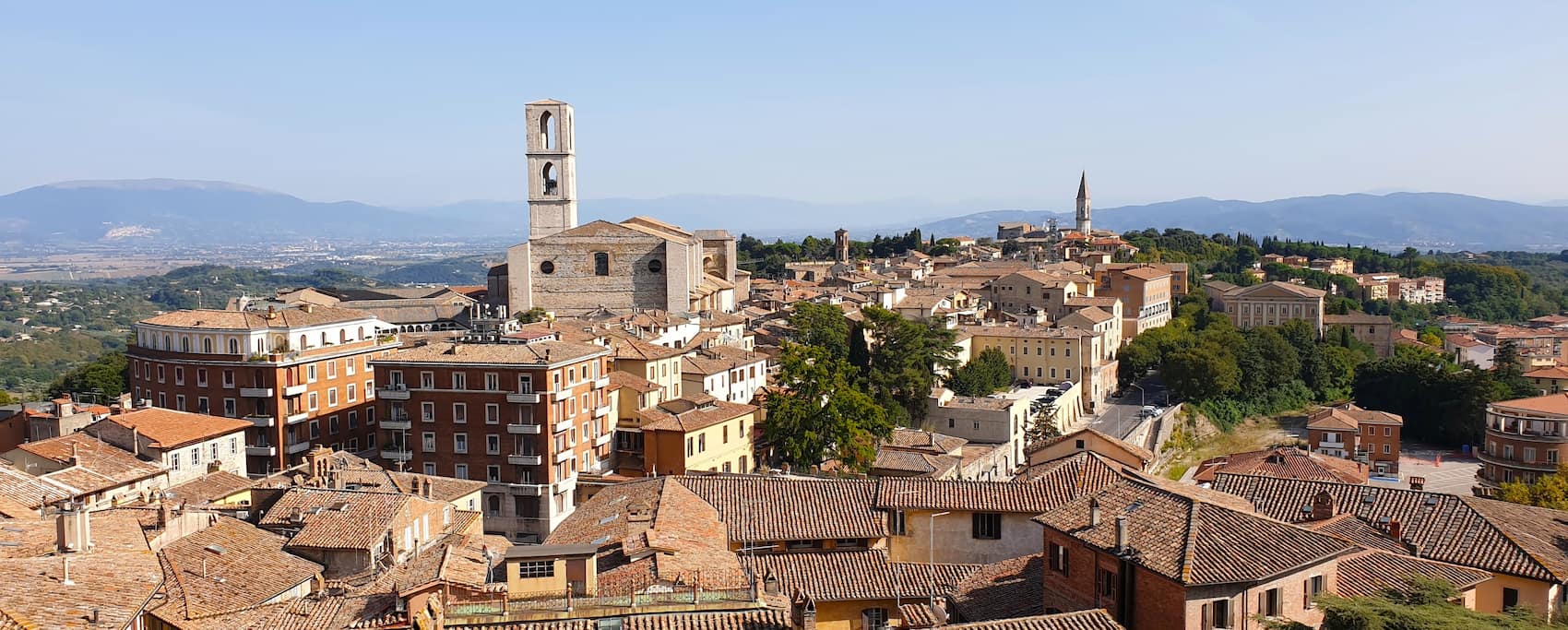Exploring Rome in 3 days is a thrilling adventure through ancient ruins, iconic landmarks, and vibrant neighborhoods. Start your journey at the Roman Forum and Palatine Hill, where the heart of ancient Rome still stands. Wander through the Colosseum and Roman Forum, marveling at the preserved buildings from Ancient Rome. Don’t miss Capitoline Hill, home to the famous Capitoline Museums, where intricate architecture and Roman history come to life.
🏠 Where to Stay in Rome
- 💎 Luxury Hotel: Anantara Palazzo Naiadi Rome Hotel
- ✨ 5-Star: Roma Luxus Hotel
- 🏨 4-Star: Hotel Quirinale
- 🛏️ 3-Star: Hotel Giolli
- 💸 Cheap: Villa San Lorenzo Maria
- 🏢 Apartament: Residenza Vatican Suite
- 👨👩👧👦 For Families: Hotel Barberini
- 🏩 For Couples: Hotel Della Conciliazione
For a more local experience, explore the lively Campo de’ Fiori market, indulge in authentic Roman cuisine, or sip coffee in a cozy café near Piazza Navona. In the evening, head to Trastevere for a taste of Rome’s bustling nightlife or enjoy panoramic views from Janiculum Hill. With an itinerary planned to include both must-see spots and hidden gems, these three days will give you an unforgettable taste of the Eternal City.
💁 Best Guided Tours
- Colosseum and Ancient Rome Tour with Roman Forum and Palatine Hill from € 20 (⭐4.8/5)
- Skip-the-Line Group Tour of the Vatican, Sistine Chapel and St. Peter's Basilica from € 50 (⭐4.6/5)
- Expert Guided Tour of Colosseum Underground, Arena and Forum from € 40 (⭐4.9/5)
- Skip-the-Line Crypts and Roman Catacombs Small Group Guided Tour from € 40 (⭐4.9/5)
3 Day Rome Itinerary: Quick Overview
Day 1 🏛️ Ancient Rome: Immerse yourself in the grandeur of ancient Rome, starting with the iconic Colosseum and its impressive hypogeum. Explore the Roman Forum and Palatine Hill complex, where emperors once ruled, followed by an evening in the historic center to see the illuminated Trevi Fountain.
Day 2 ⛪ Vatican & Historic Center: Begin your day early at the Vatican Museums and Sistine Chapel, followed by St. Peter’s Basilica. Spend the afternoon wandering through Rome’s most beautiful piazzas, including Piazza Navona and Campo de’ Fiori, ending with authentic aperitivo in Trastevere.
Day 3 🎨 Art & Local Life: Discover Rome’s artistic treasures at the Borghese Gallery and Capitoline Museums. Explore the charming Monti neighborhood, and conclude your journey with a sunset view from Janiculum Hill overlooking the eternal city.
Day 1: Ancient Rome’s Greatest Treasures
1. 🏛️ The Colosseum
Ancient Amphitheater: The world’s largest amphitheater stands as a testament to Roman engineering brilliance, having hosted spectacular gladiatorial contests for over 400 years. Its massive travertine walls once accommodated 50,000 spectators, with an ingenious system of underground tunnels and chambers where gladiators and exotic animals awaited their moment. The intricate architecture features three distinct orders of columns – Doric, Ionic, and Corinthian – showcasing the sophistication of Roman design.
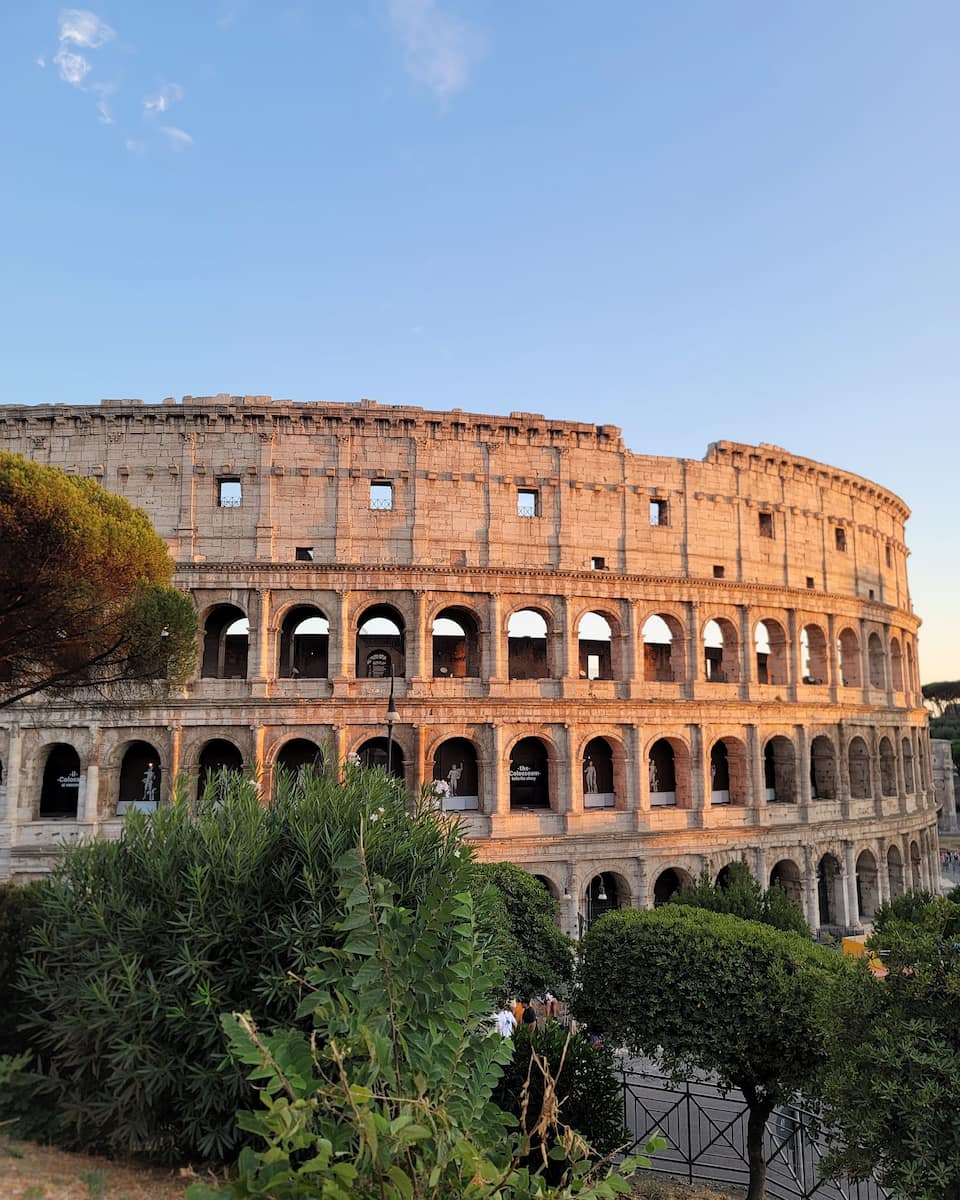
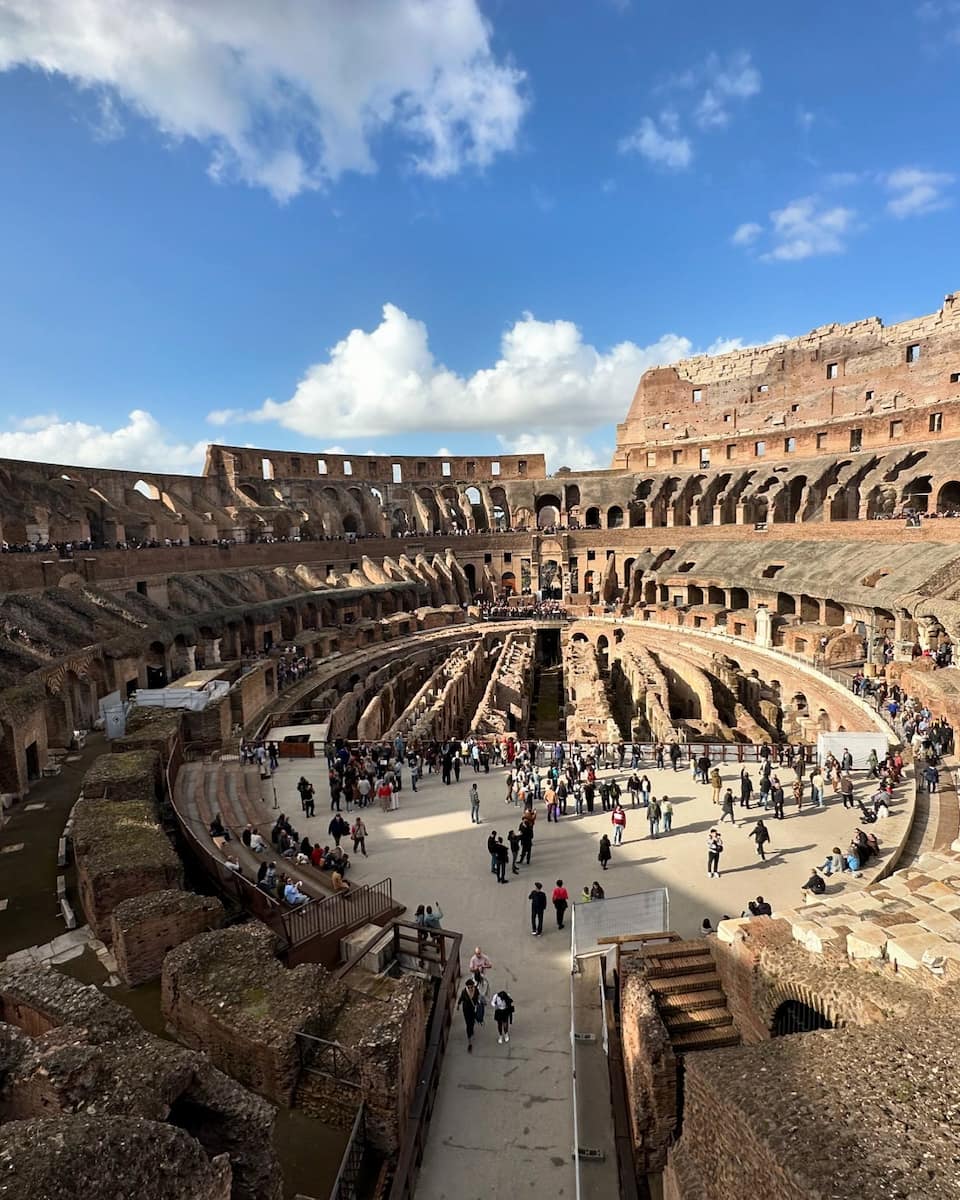
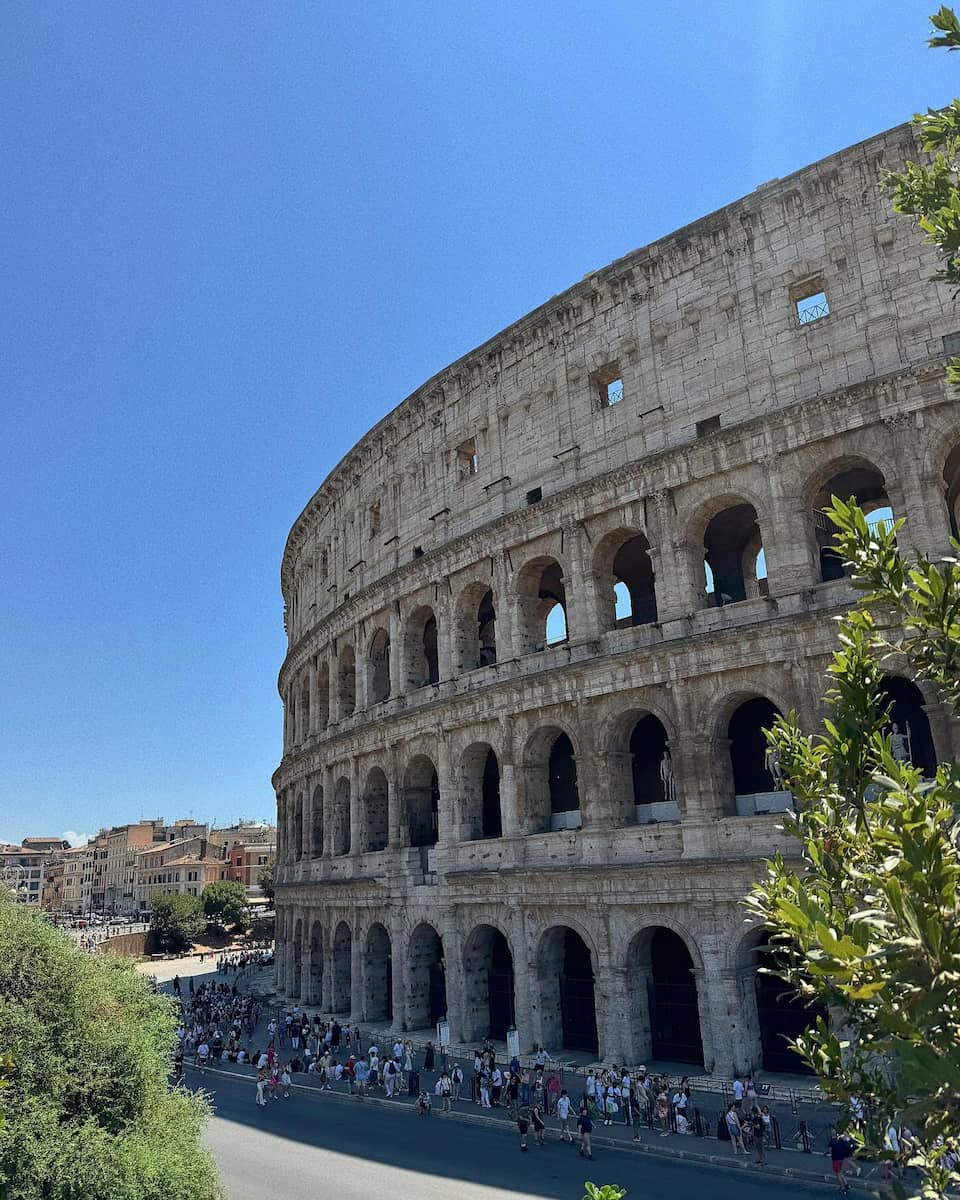
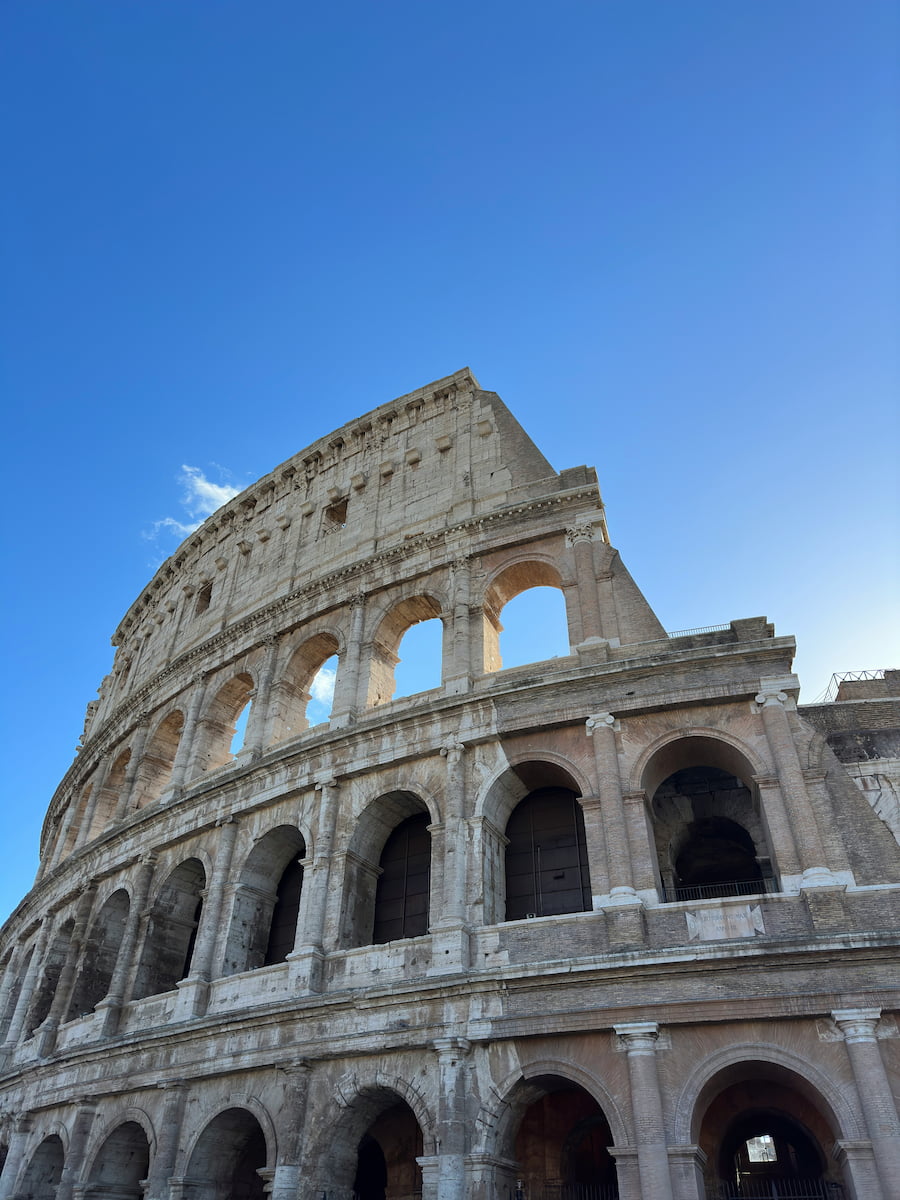
Time Saver: Book “skip the lines” tickets online 3 months in advance and arrive at 8:30 AM when tourist crowds are minimal.
⭐ Best activities
- Tour: Roman Forum and the Colosseum Guided Tour – This guided tour takes you through Rome’s most iconic ancient landmarks, including the Colosseum, Roman Forum, and Palatine Hill. Learn about the fascinating history of gladiators, emperors, and daily life in ancient Rome while exploring these well-preserved ruins.
- Ticket online: Colosseum & Mamertine Prison Ticket – Get access the Colosseum and see the prison which was once home to emperors & kings.
2. 🏺 Roman Forum and Palatine Hill
Historic Center: In walking distance from the Colosseum lies the Roman Forum, once the bustling heart of ancient Roman life. The Forum contains preserved buildings like the Temple of Saturn and Arch of Titus, offering a glimpse into Roman politics and society. Palatine Hill, one of Rome’s seven hills, is where Romulus is said to have founded Rome. It also offers breathtaking views over both the Forum and Circus Maximus.

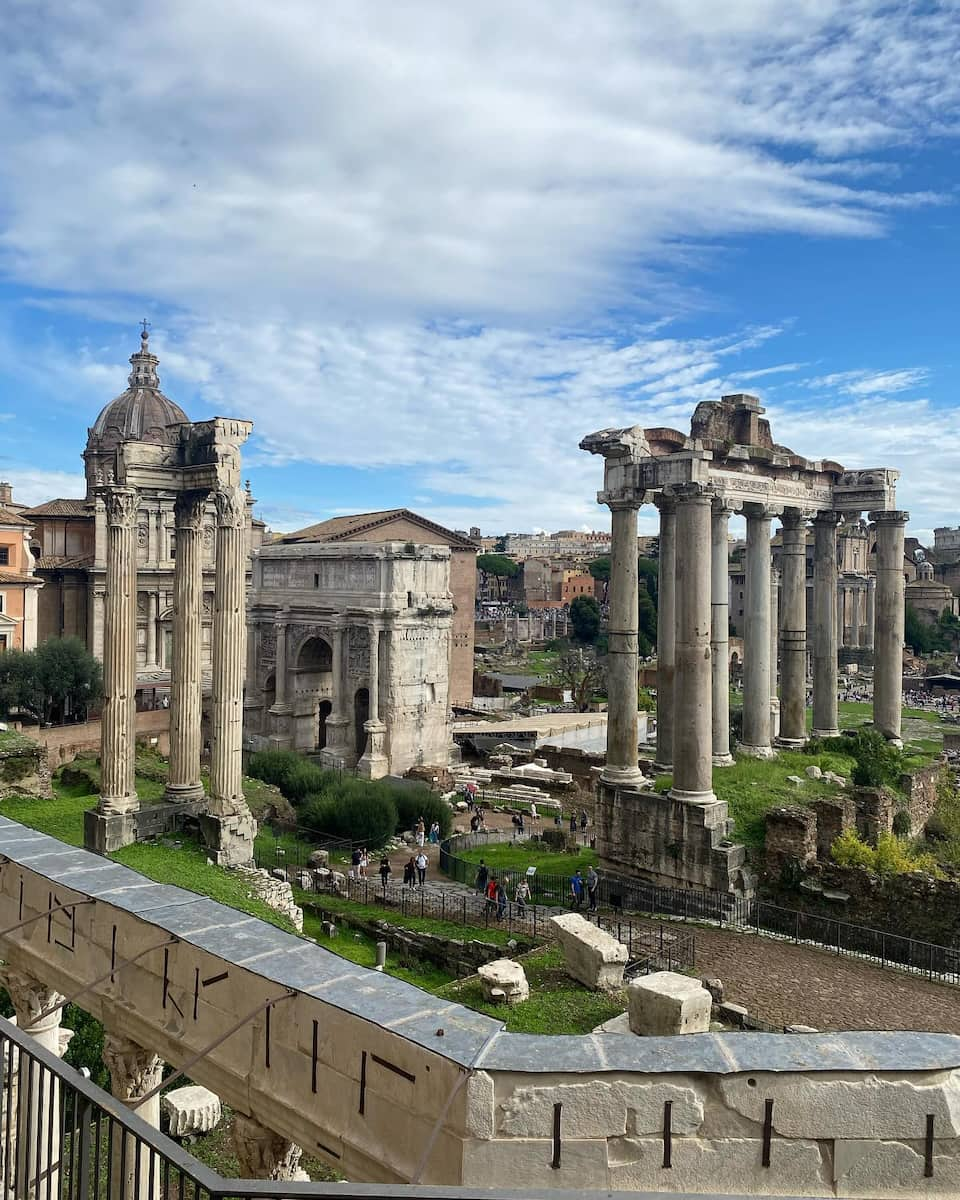
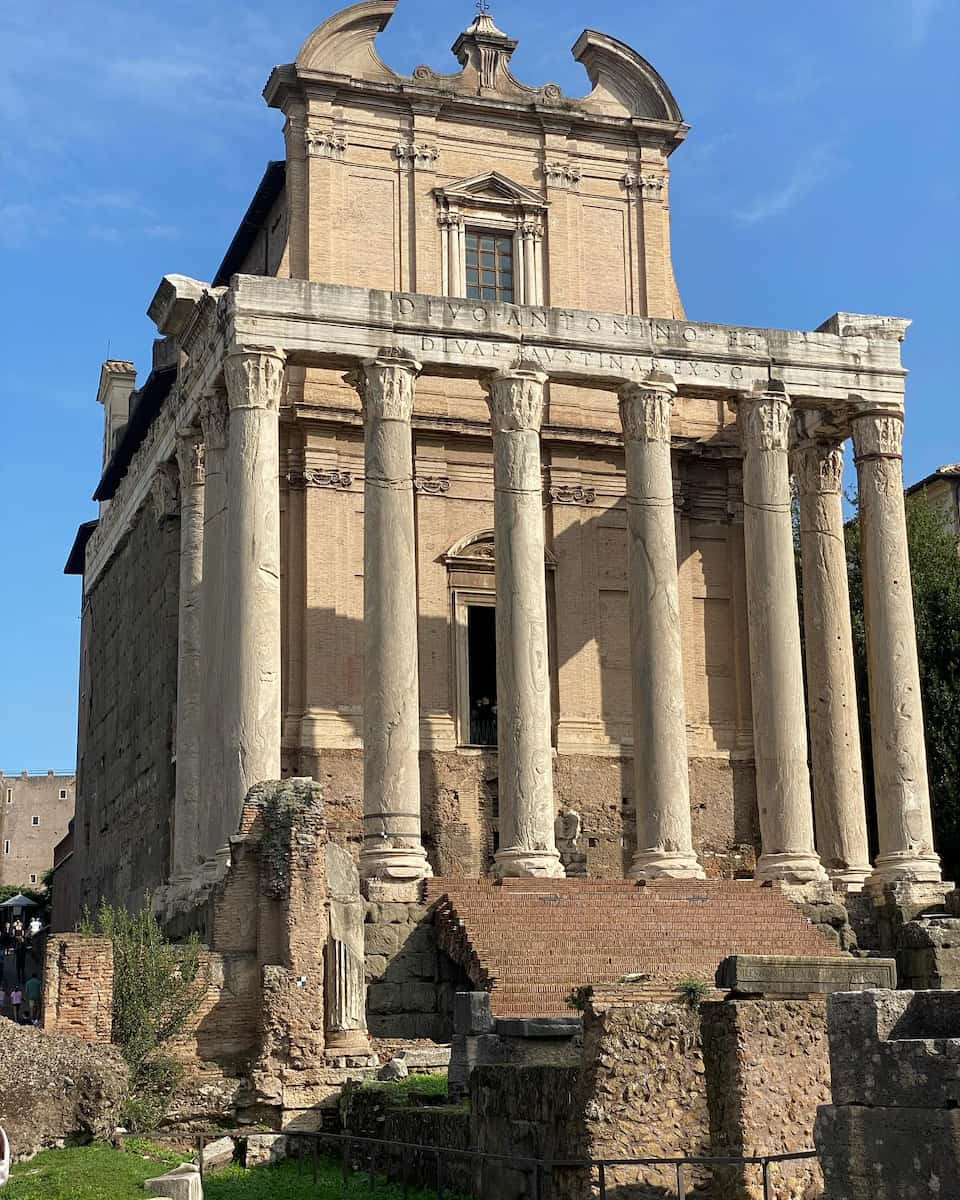
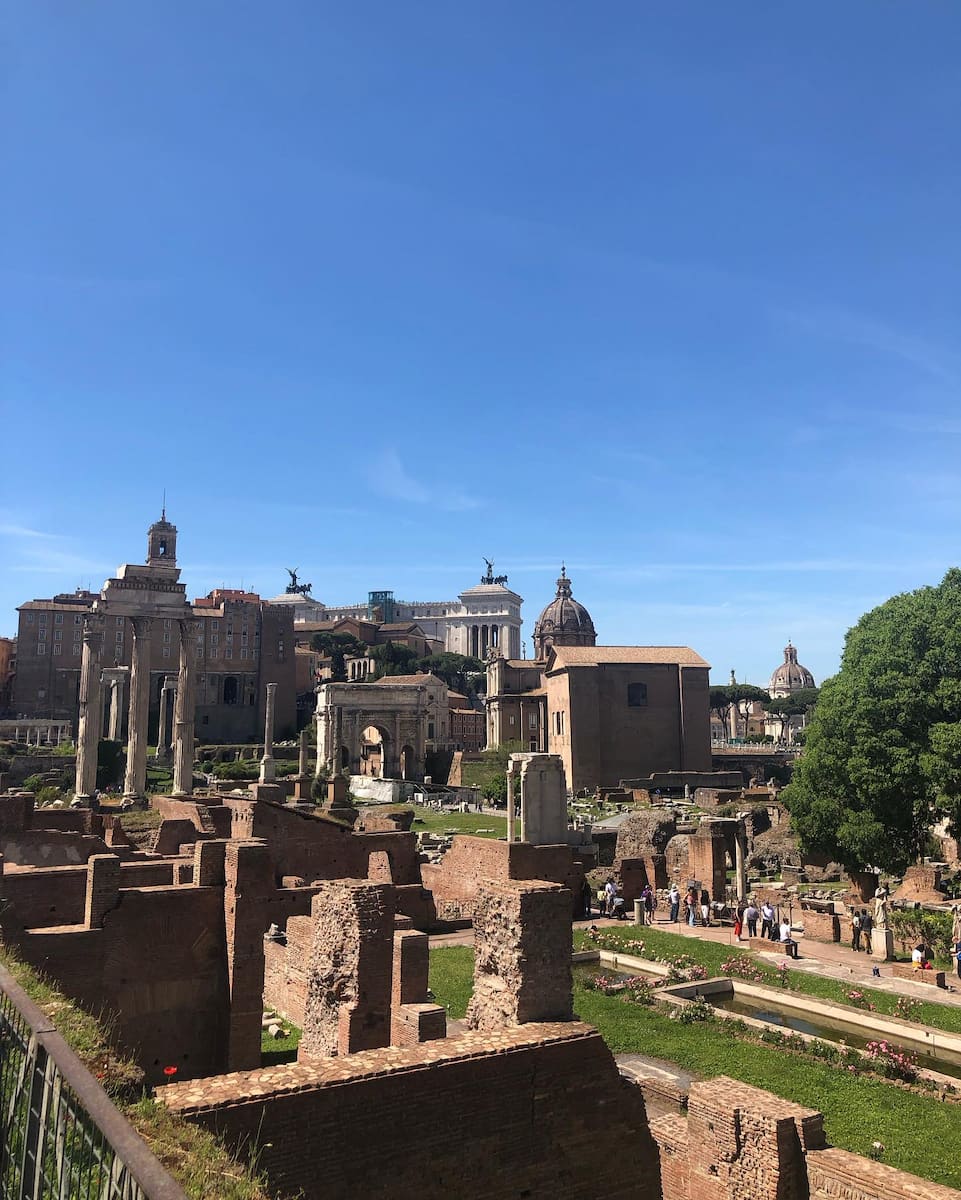
Insider Tip: Enter through the lesser-known Palatine Hill entrance to avoid the longer queues at the main Roman Forum entrance.
⭐ Best activities
- Tour: Skip-the-line Gladiators Entrance Tour – This express tour offers exclusive access to the Colosseum’s arena floor through the Gladiators’ Entrance, where ancient fighters once entered the amphitheater.
- Ticket online: Colosseum & Roman Forum Entry Ticket – Get access the Colosseum, the Roman Forum, and Palatine Hill at your leisure.
🍴 Where to eat near the Colosseum & Roman Forum
- Trattoria Luzzi: A popular spot for Roman-style pizza and pasta dishes like cacio e pepe and carbonara. This family-run trattoria offers affordable prices and a cozy atmosphere. Perfect for lunch after visiting the Colosseum. Try their artichokes (Roman or Jewish style).
- Naumachia: Located just a short walk from the Colosseum, this italian restaurant serves traditional Roman dishes like fried zucchini flowers and pasta amatriciana. Ideal for a sit-down meal after exploring the Colosseum and Roman Forum.
- Taverna dei Quaranta: This restaurant offers traditional Roman cuisine, including seafood on Tuesdays and Fridays, and gnocchi on Thursdays. Less than a 5-minute walk from the Colosseum, offering great food at reasonable prices.
3. 🍷 Trastevere District
Evening Atmosphere: Trastevere, whose name means “across the Tiber,” stands as Rome’s most enchanting and authentic working-class neighborhood. This medieval district transforms from a quiet, ivy-draped haven during the day to a vibrant entertainment hub at night, with its cobblestone streets coming alive with locals and visitors alike
Local Secret: Visit Bar San Calisto for the best-value Aperol Spritz in Rome, where locals gather for evening drinks.
⭐ Best tours
- Rome: Trastevere Guided Food and Wine Tour – Taste the best of Rome on this gourmet food and wine tour in the neighborhood of Trastevere. Treat your taste buds and fill your belly with over 20 food and wine tastings with dinner included.
- Rome Food & Wine Tour of Trastevere – Dive into Rome’s famous cuisines and explore the trendy Trastevere neighborhood on this small-group nighttime food tour. Visit bars to sample wines and cocktails, stop at restaurants to taste cured meats and pasta dishes, and venture through charming back streets with your guide.
4. 🌊 Trevi Fountain
Baroque Masterpiece: End your first day by visiting one of Rome’s most famous landmarks—the Trevi Fountain. This Baroque masterpiece features Neptune riding a shell-shaped chariot pulled by seahorses. Tossing a coin into its waters ensures your return to Rome, making it a perfect stop for first-time visitors.
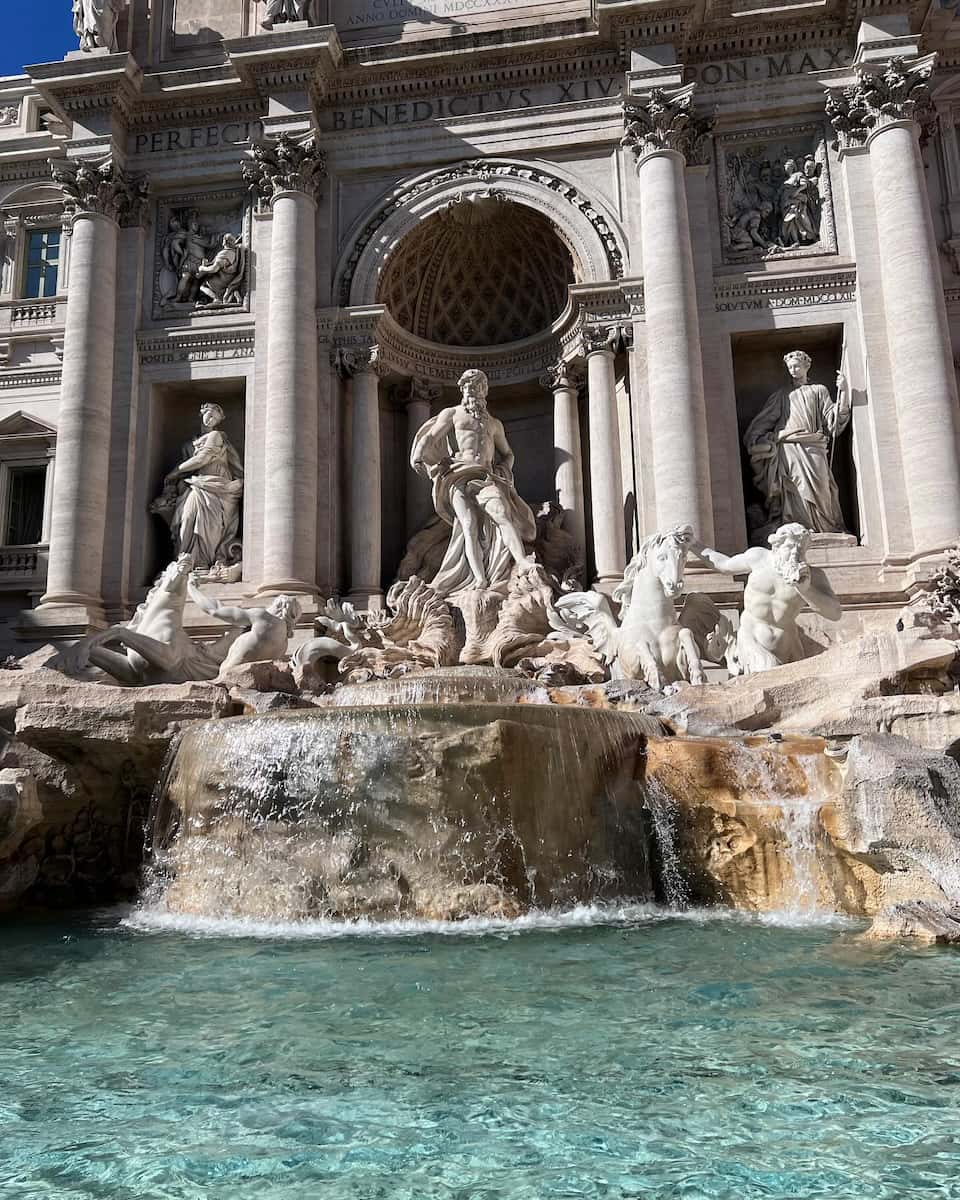
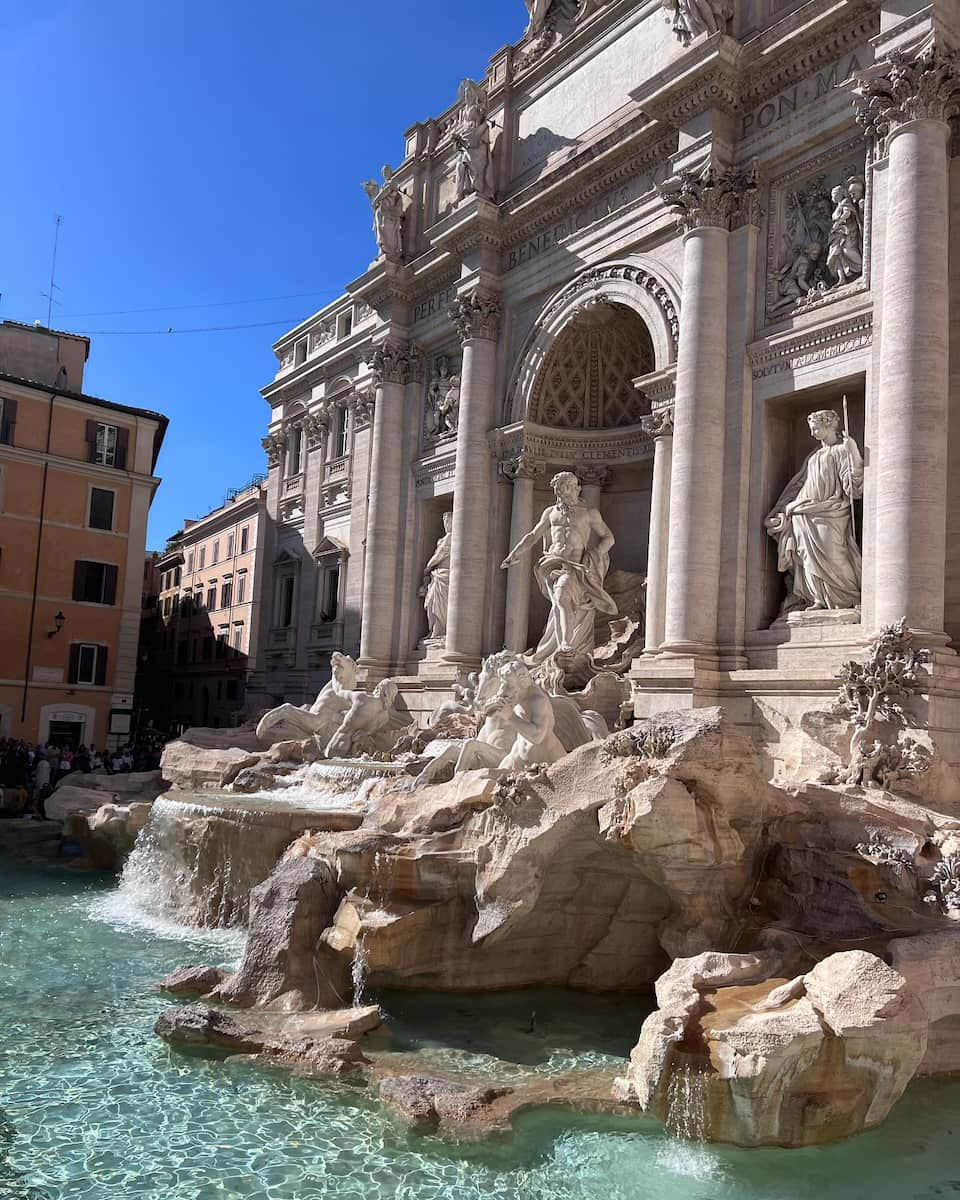
Time Saver: Visit before 8 AM or after 11 PM for the best photo opportunities and smallest crowds.
⭐ Best activities
- Tour: Tour including Trevi Fountain – This walking tour takes you through the heart of Rome, visiting iconic landmarks like the Trevi Fountain, Pantheon, and Piazza Navona. Learn about the fascinating history behind these famous sites while strolling through Rome’s cobbled streets with a knowledgeable guide.
- Ticket online: Trevi Fountain Rome Tour Ticket – Journey underground with a trip beneath the Trevi Fountain.
🍴 Where to eat near Trevi Fountain & Pantheon
- Armando al Pantheon: A classic Roman trattoria known for its traditional dishes like coda alla vaccinara (oxtail stew) and spaghetti alla carbonara. Perfect for lunch after visiting the Pantheon or Trevi Fountain.
- Senza Fondo All You Can Eat: Tucked behind Piazza Navona, this restaurant offers an all-you-can-eat menu of typical Roman dishes at an affordable price. Great value for money and only a short walk from Trevi Fountain.
- Sant’Eustachio Il Caffè: Famous for its coffee blend, this historic cafe is perfect for a quick espresso break near the Pantheon. Grab one of the best coffees in Rome after sightseeing.
5. ⛲ Piazza Navona
Ancient Stadium: Built on the site of the 1st-century Stadium of Domitian, Piazza Navona maintains the exact oval shape of the ancient arena where Romans once gathered for athletic competitions and games. The square features three magnificent fountains, including Gian Lorenzo Bernini’s masterpiece Fountain of the Four Rivers (1651), topped with an Egyptian obelisk. The piazza is surrounded by elegant buildings, including the Church of Sant’Agnese in Agone.
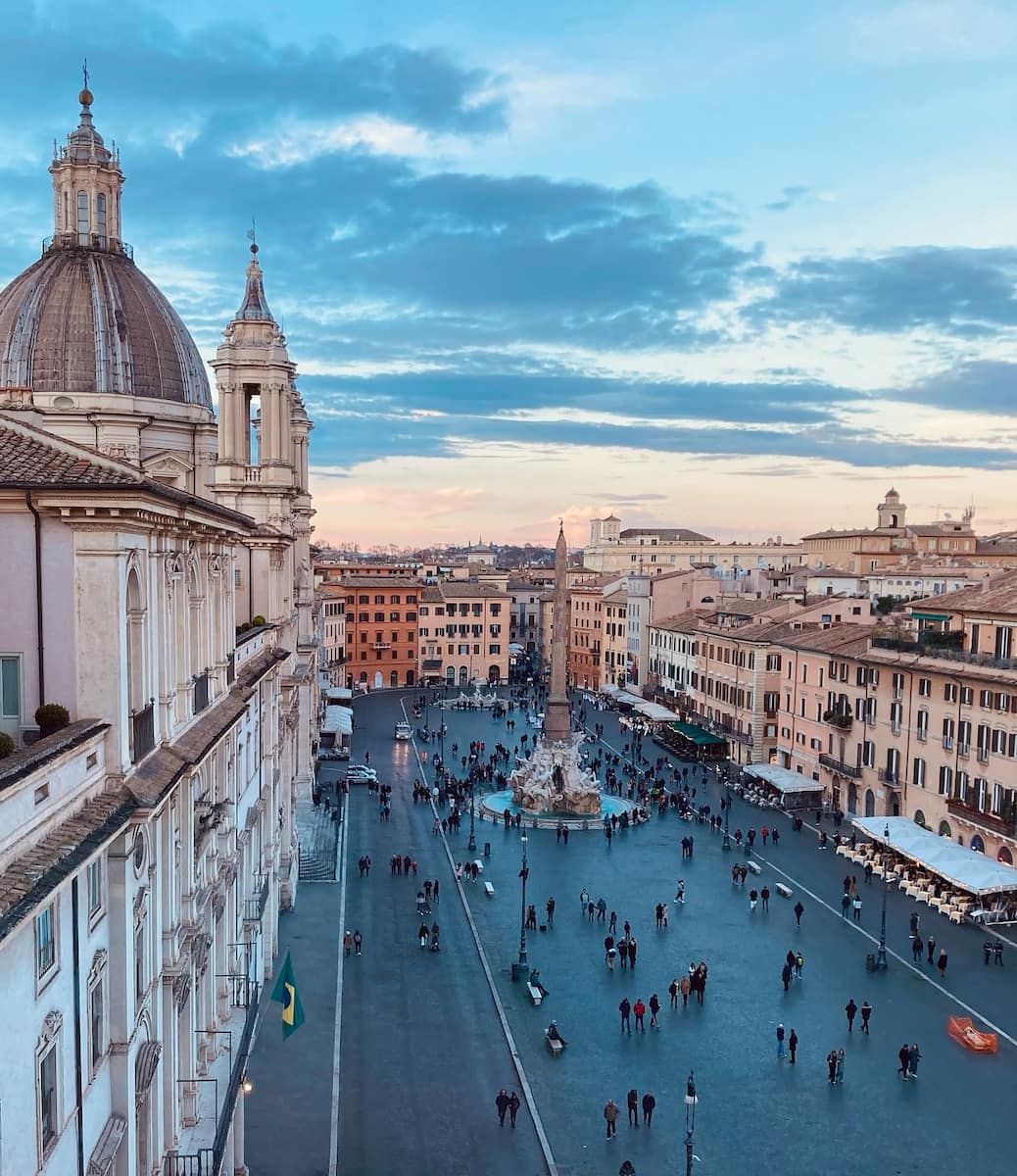
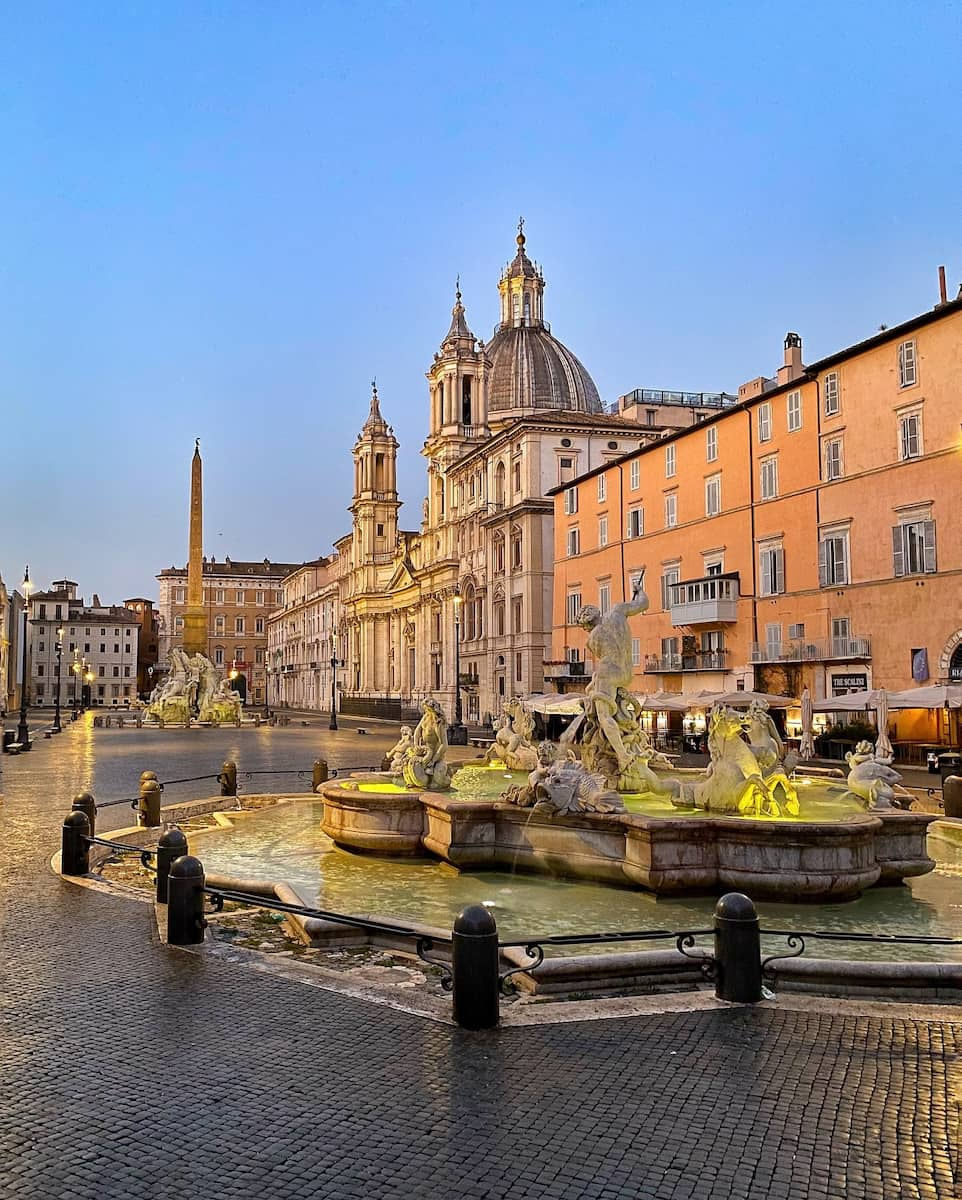

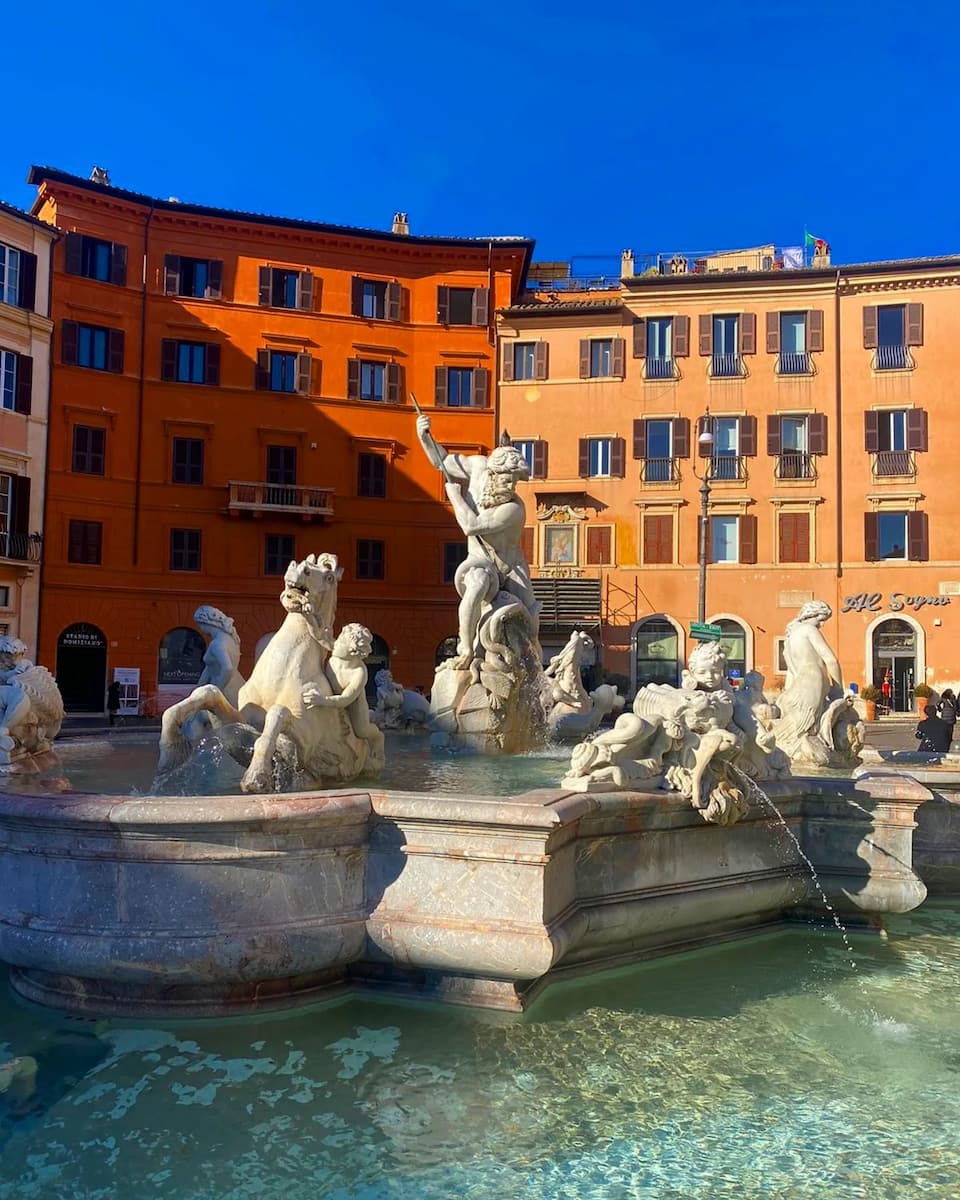
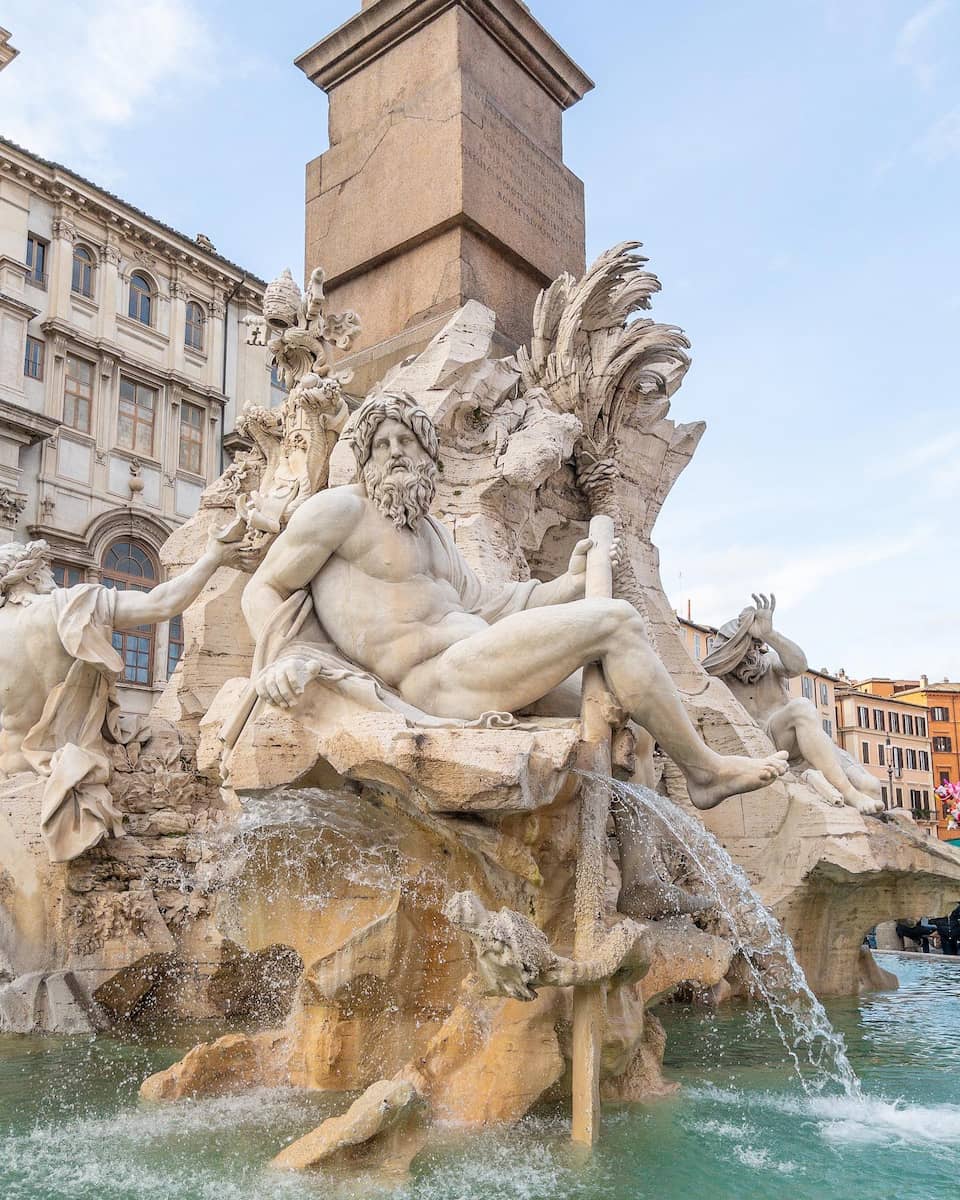
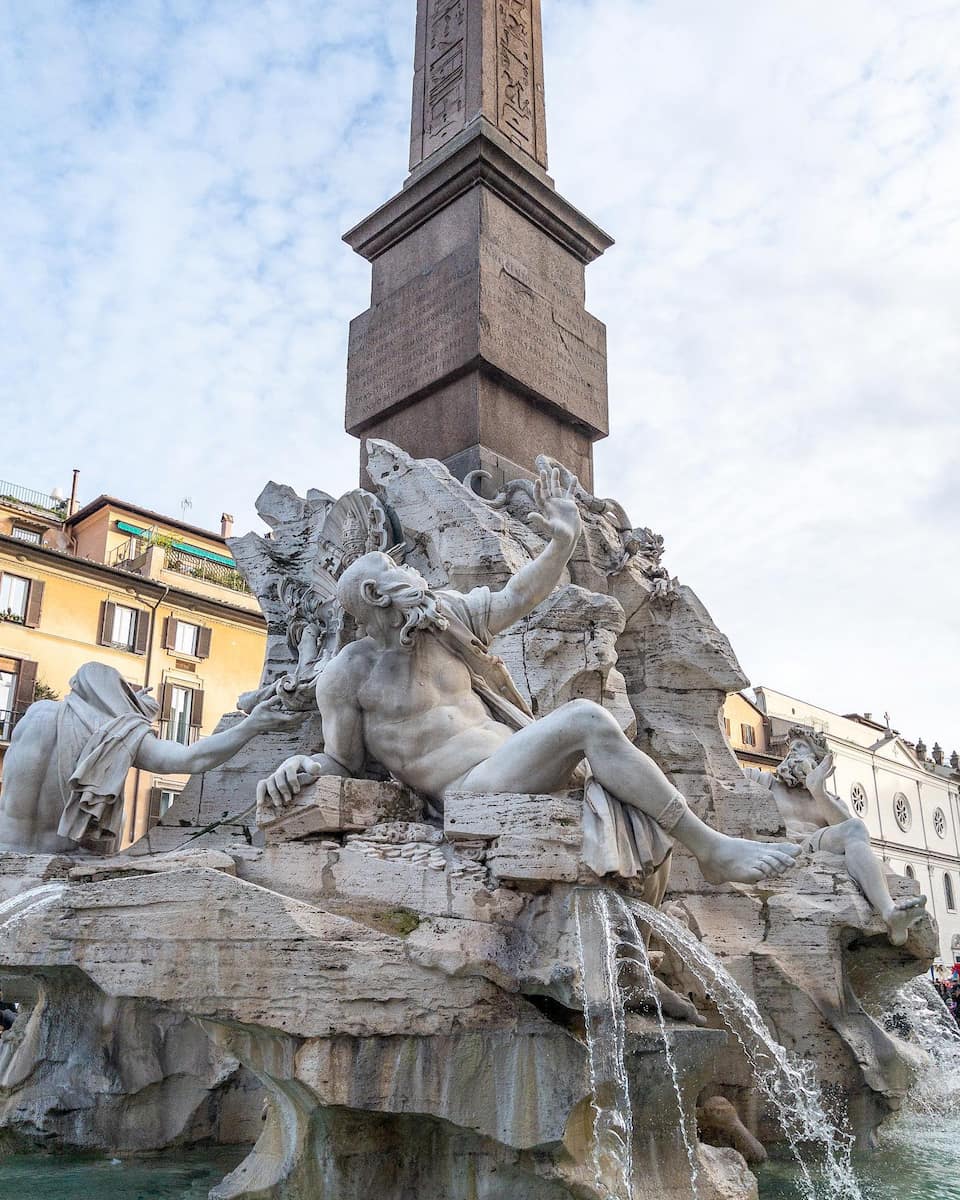
Local Experience: Visit in the early evening when the cafes come alive with the traditional Roman aperitivo scene.
⭐ Best tours
- Pizza Cooking Class near Piazza Navona – Craft the quintessential Italian pizza in a pizza-making cooking class. Relish your traditional dish with a drink at one of the most charming restaurants in the historic center of Rome.
- Walking Tour with Piazza Navona – See some of the most beautiful architecture, fountains and squares in Rome on this walking tour of the city’s historical center. Stroll along cobbled laneways, stopping to visit famous attractions like the Trevi Fountain, Piazza Navona, the Spanish Steps and the Pantheon.
6. ⚔️ Castel Sant’Angelo
Imperial Origins: Originally constructed as Emperor Hadrian’s mausoleum in 123 AD, this cylindrical fortress served as the final resting place for Roman emperors until 217 AD. The building was the tallest structure in Rome during its construction period.
Papal Refuge: Transformed into a fortress in the 6th century, it became a papal stronghold connected to Vatican City via the secret Passetto di Borgo corridor. The castle’s current name comes from a vision of Archangel Michael appearing above the building in 590 AD.
Insider Tip: Purchase combination tickets with the Vatican Museums to save money and time.
⭐ Best activities
- Tour: Castel Sant'Angelo Guided Tour – Discover the historic Castel Sant’Angelo and its ancient fortress on a guided tour. Explore areas that are generally closed to the public and admire the panoramic views of Rome from its terrace.
- Ticket online: Castel Sant'Angelo Entry Ticket – Skip the long queues and dive straight into the rich history of Castel Sant’Angelo, a fortress that has served as a mausoleum, prison, and papal residence. Explore its seven floors filled with Renaissance art, ancient frescoes, and secret chambers.
Day 2: Vatican City and Historic Center
1. ⛪ St. Peter’s Basilica
Religious Center: The world’s largest church houses masterpieces like Michelangelo’s Pietà and Bernini’s baldachin, while its massive dome offers panoramic views of Rome. The Vatican Museums contain one of the world’s most extensive art collections, culminating in the awe-inspiring Sistine Chapel with Michelangelo’s famous frescoed ceiling depicting biblical scenes.
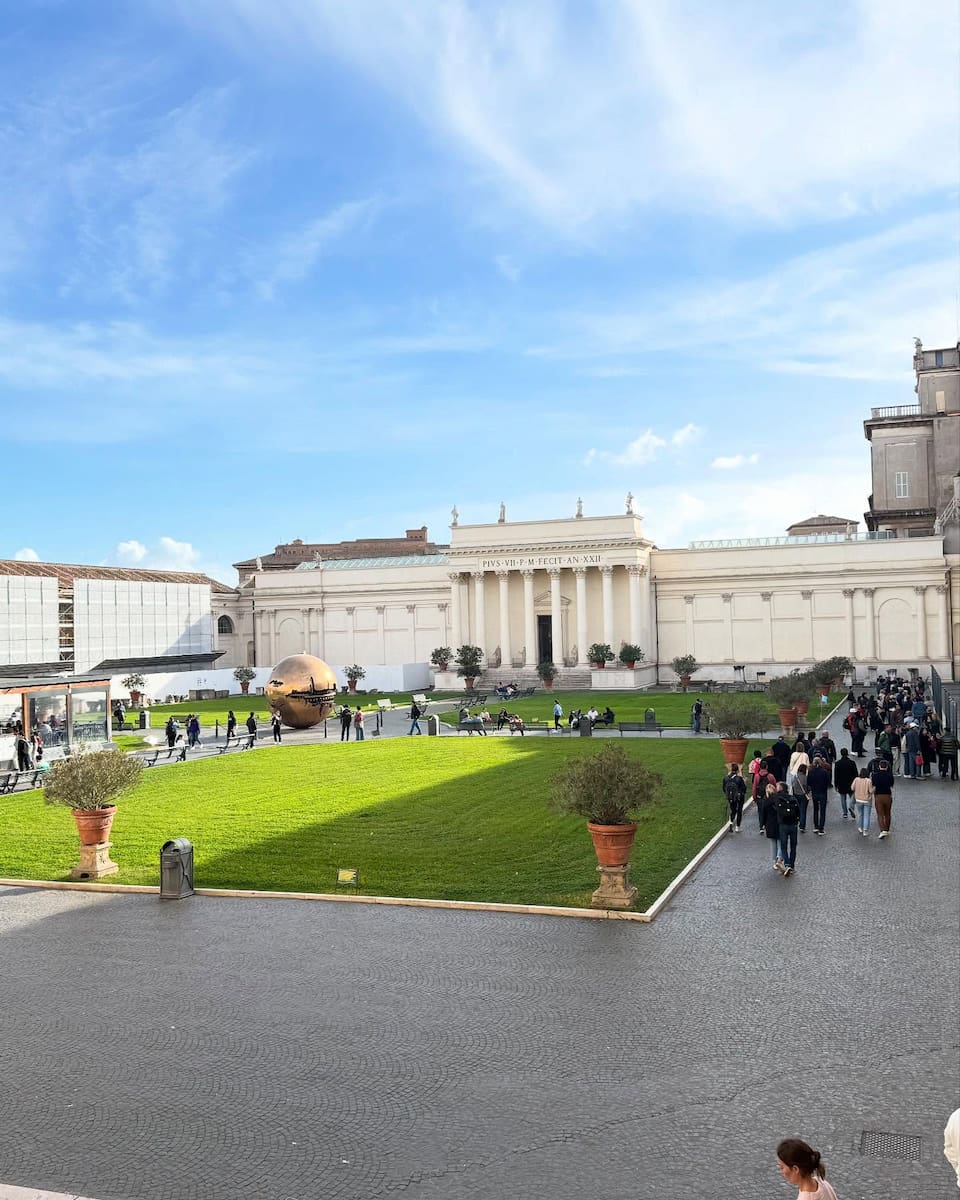
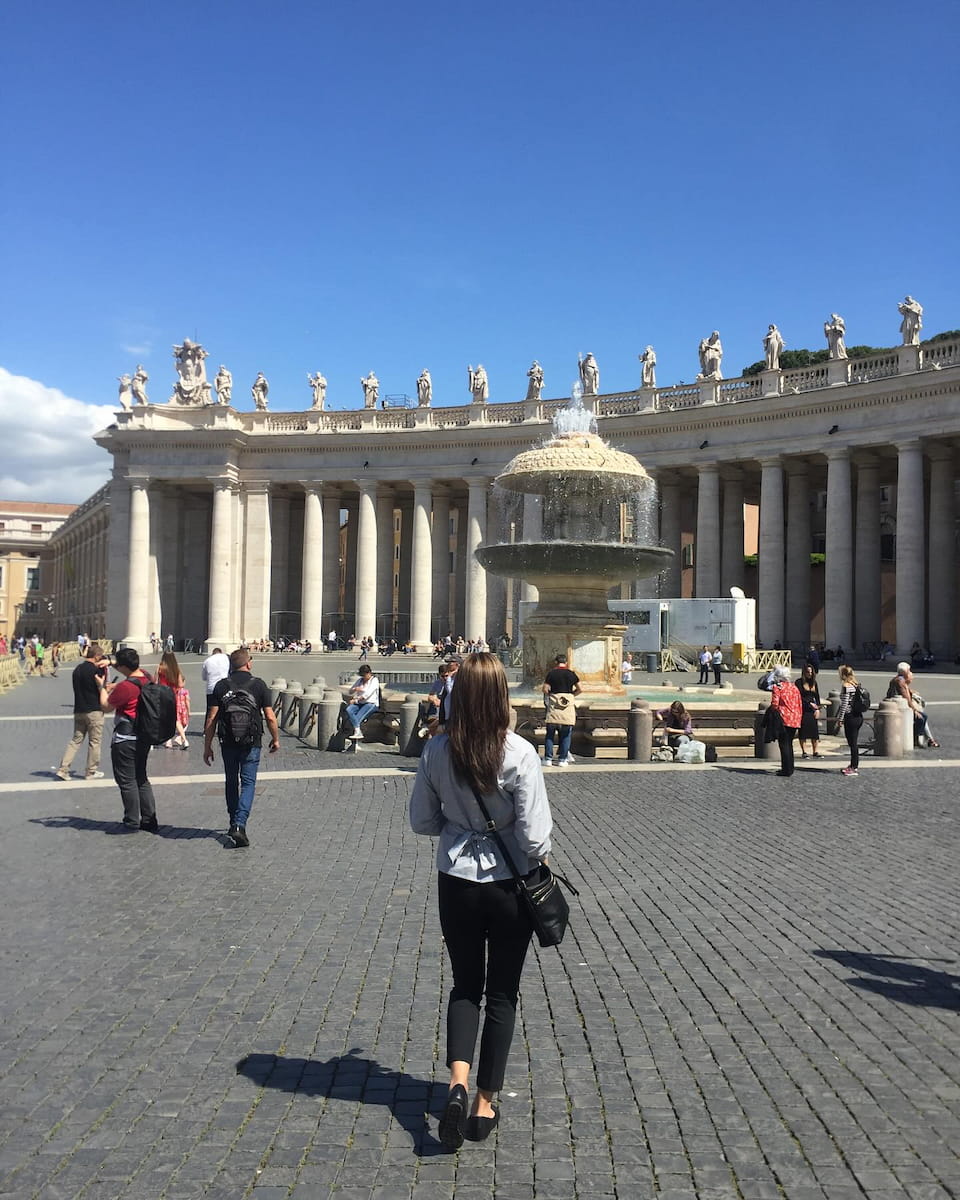
Money Saver: Visit the Basilica early morning for free entry, avoiding expensive tour group prices.
⭐ Best activities
- Tour: St. Peter's Basilica: Guided Tour – Visit Saint Peter’s Basilica accompained by an official guide!
- Ticket online: St. Peter's Basilica: Dome Entry Ticket – Enjoy a visit to the famous Cupola of St. Peter’s Basilica.
2. 🎨 Vatican Museums
Art Collection: Dedicate your second day to exploring Vatican City, beginning with the Vatican Museums, which house one of the world’s largest art collections. From ancient Roman sculptures to Renaissance masterpieces like Michelangelo’s Sistine Chapel ceiling, this museum offers an unparalleled journey through art history.
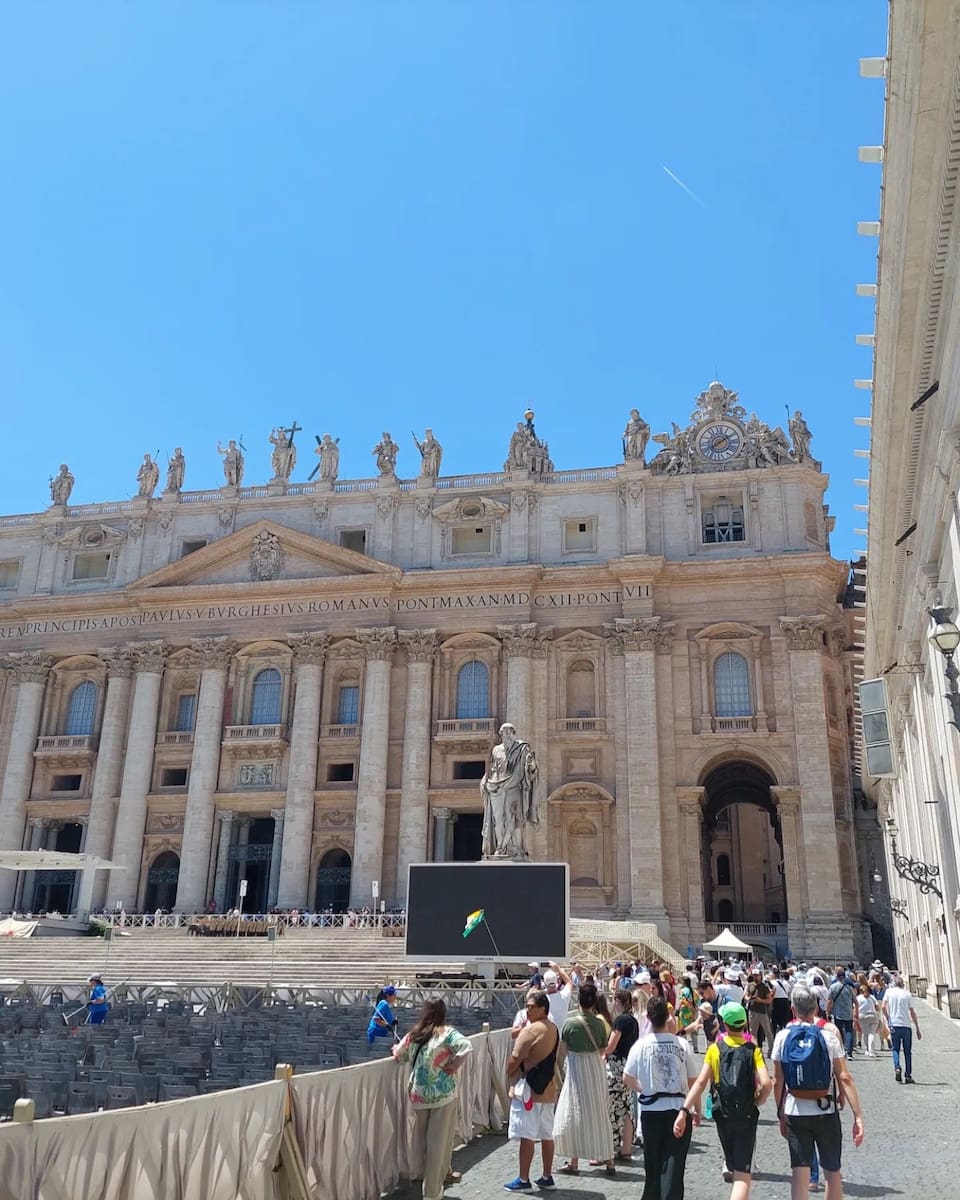
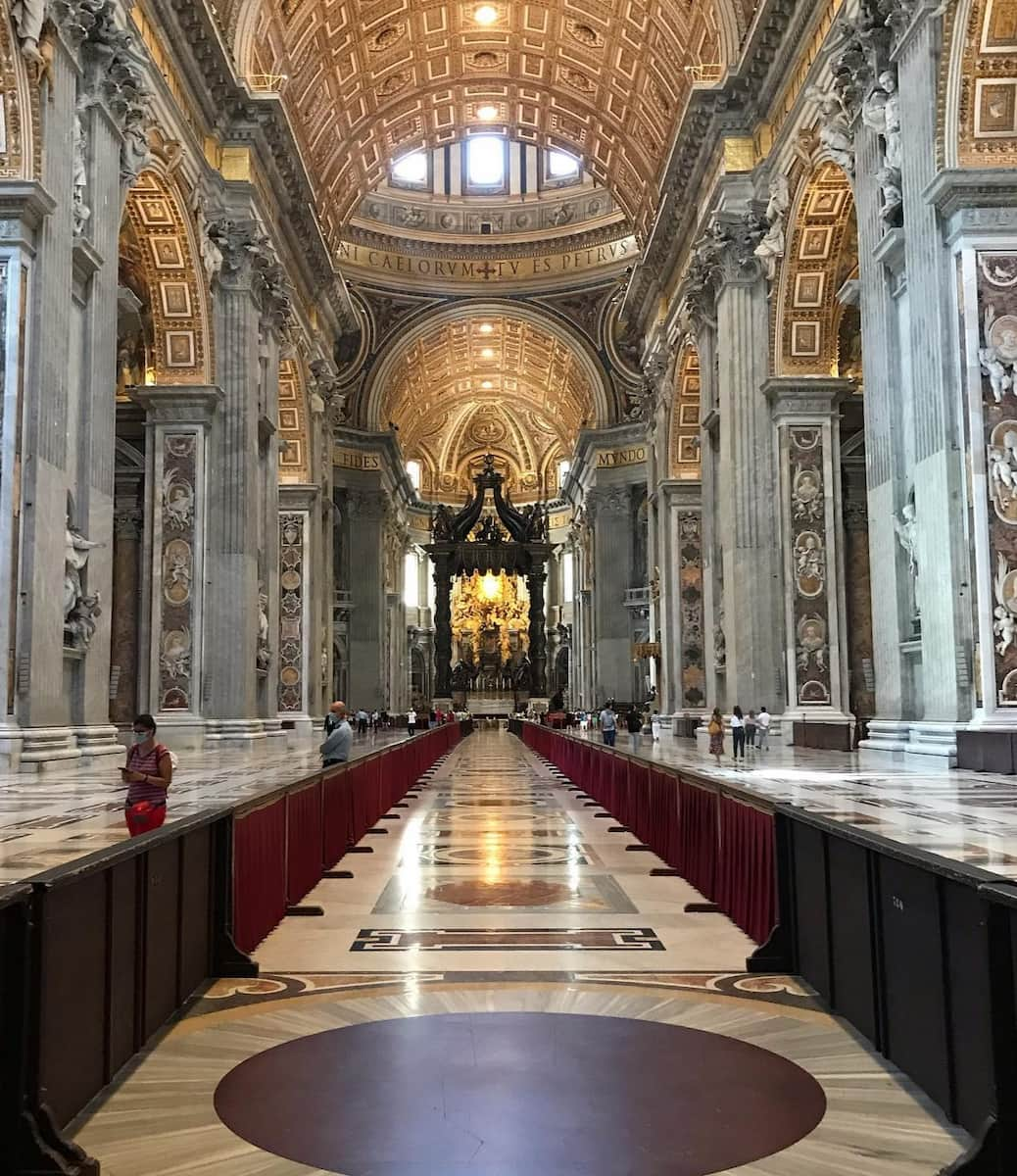
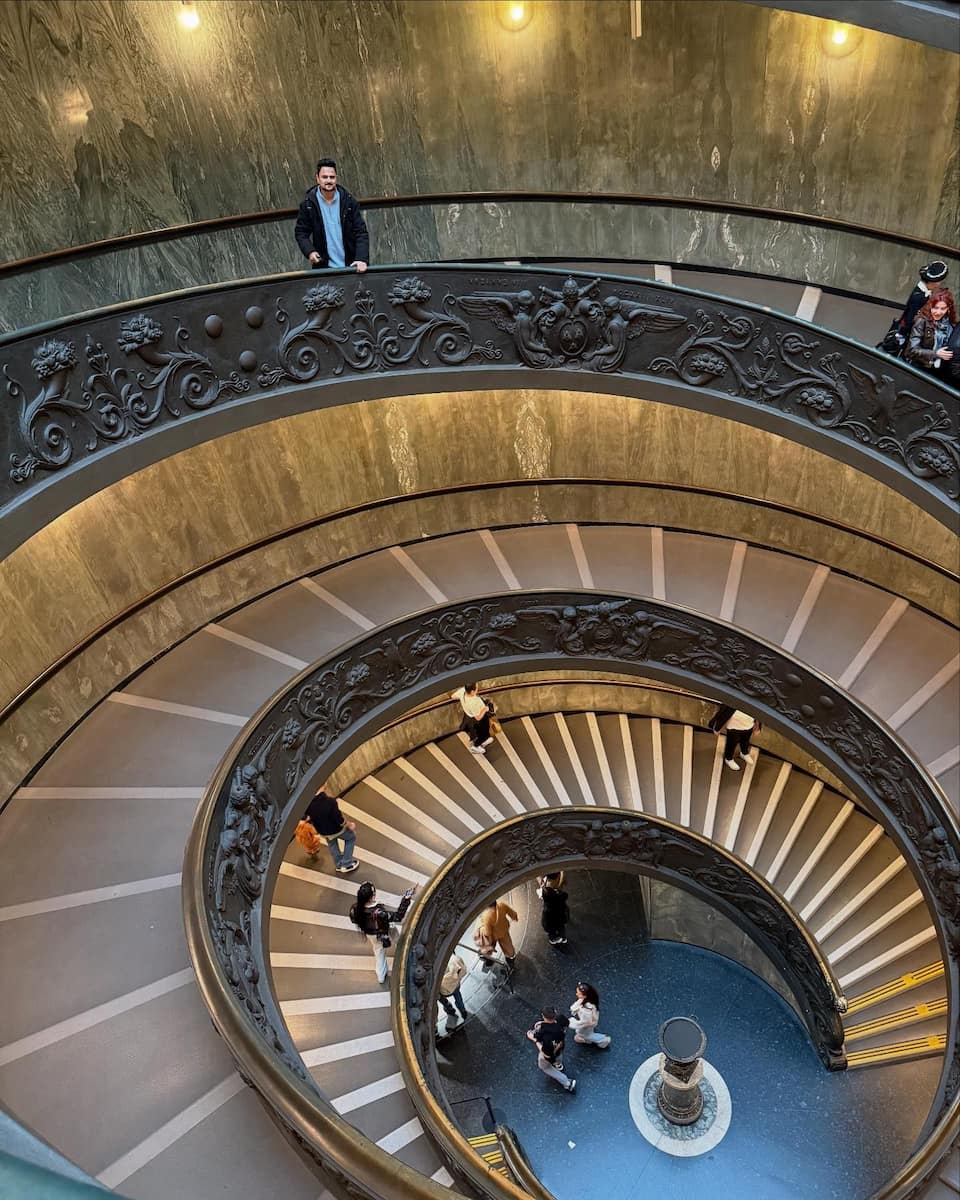
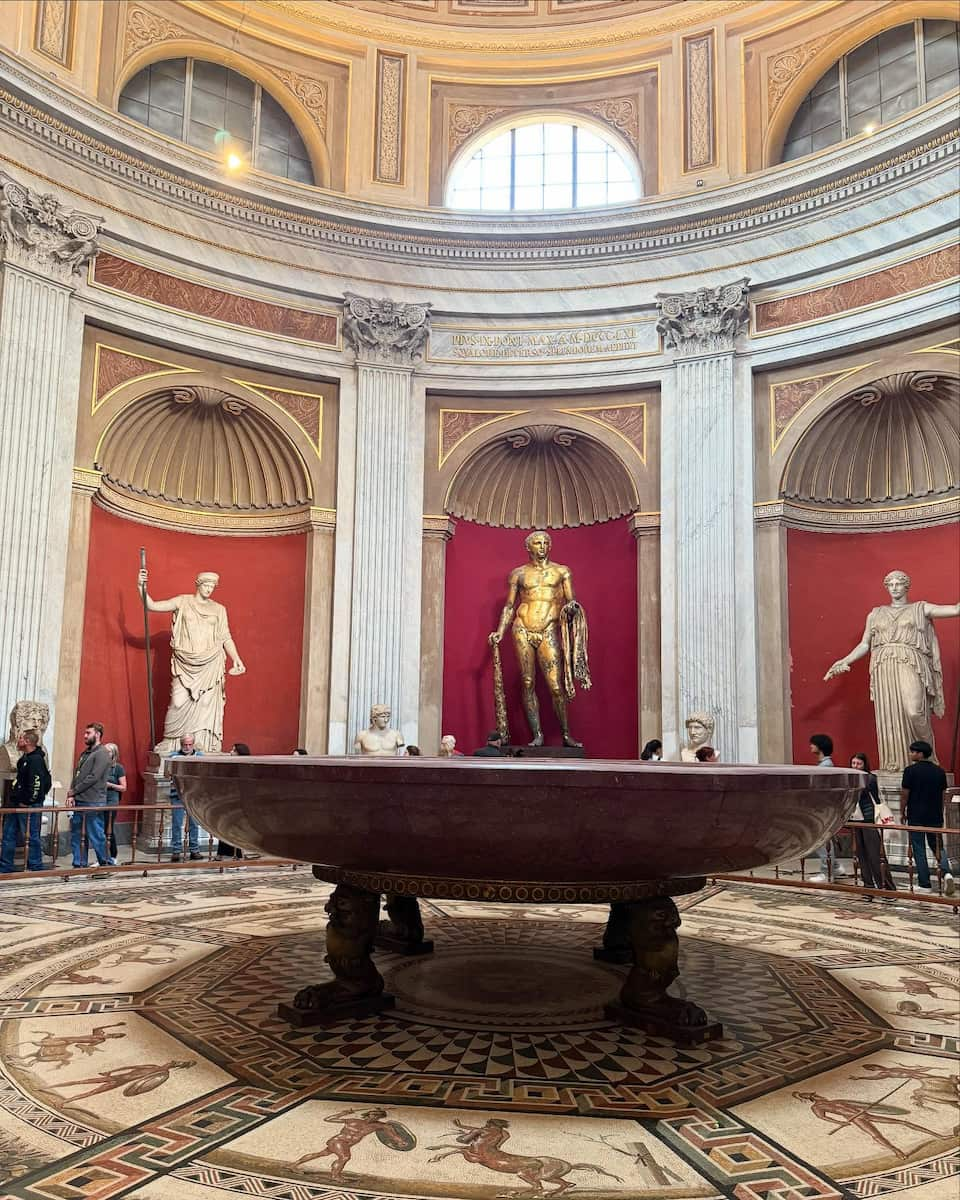
Time Saver: Book your Vatican Museums tickets for 3 PM when morning tour groups have departed.
⭐ Best activities
- Tour: Vatican Museums and Sistine Chapel Tour – This guided tour offers skip-the-line access to the Vatican Museums, allowing you to explore one of the largest art collections in the world without waiting in long queues. You’ll visit the famous Sistine Chapel, where Michelangelo’s masterpiece adorns the ceiling, and learn about the fascinating history of Vatican City from an expert guide.
- Ticket online: Vatican Museums & Sistine Chapel Ticket – Explore the Vatican Museums’ vast art collections, including masterpieces by Raphael and Michelangelo. They also visit the Sistine Chapel to admire Michelangelo’s famous frescoes, such as The Creation of Adam.
🍴 Restaurants and cafes near Vatican Museums & St. Peter’s Basilica
- E.G.G. Pasta Fresca: A small eatery offering fresh pasta dishes like cacio e pepe and fettuccine Alfredo—ideal for a quick bite near St. Peter’s Basilica. Affordable and delicious take-away pasta near Vatican City.
- La Zanzara: A trendy spot offering everything from breakfast to dinner with dishes like eggplant parmigiana and homemade pasta. Perfect for lunch or aperitivo after visiting the Vatican Museums.
- Il Sorpasso: Known for its creative Italian dishes and great wine selection, this restaurant is just steps from St. Peter’s Basilica. A great place to unwind with wine after visiting Vatican City.
3. 🎭 Historic Center Highlights
City Heart: Rome’s centro storico is a living museum where ancient monuments blend seamlessly with bustling modern life. The Pantheon stands as the best-preserved ancient Roman building, while the Baroque fountains of Piazza Navona and the Spanish Steps create perfect photo opportunities. The nearby Trevi Fountain, Rome’s largest Baroque fountain, draws crowds with its mythological figures and crystal-clear waters.
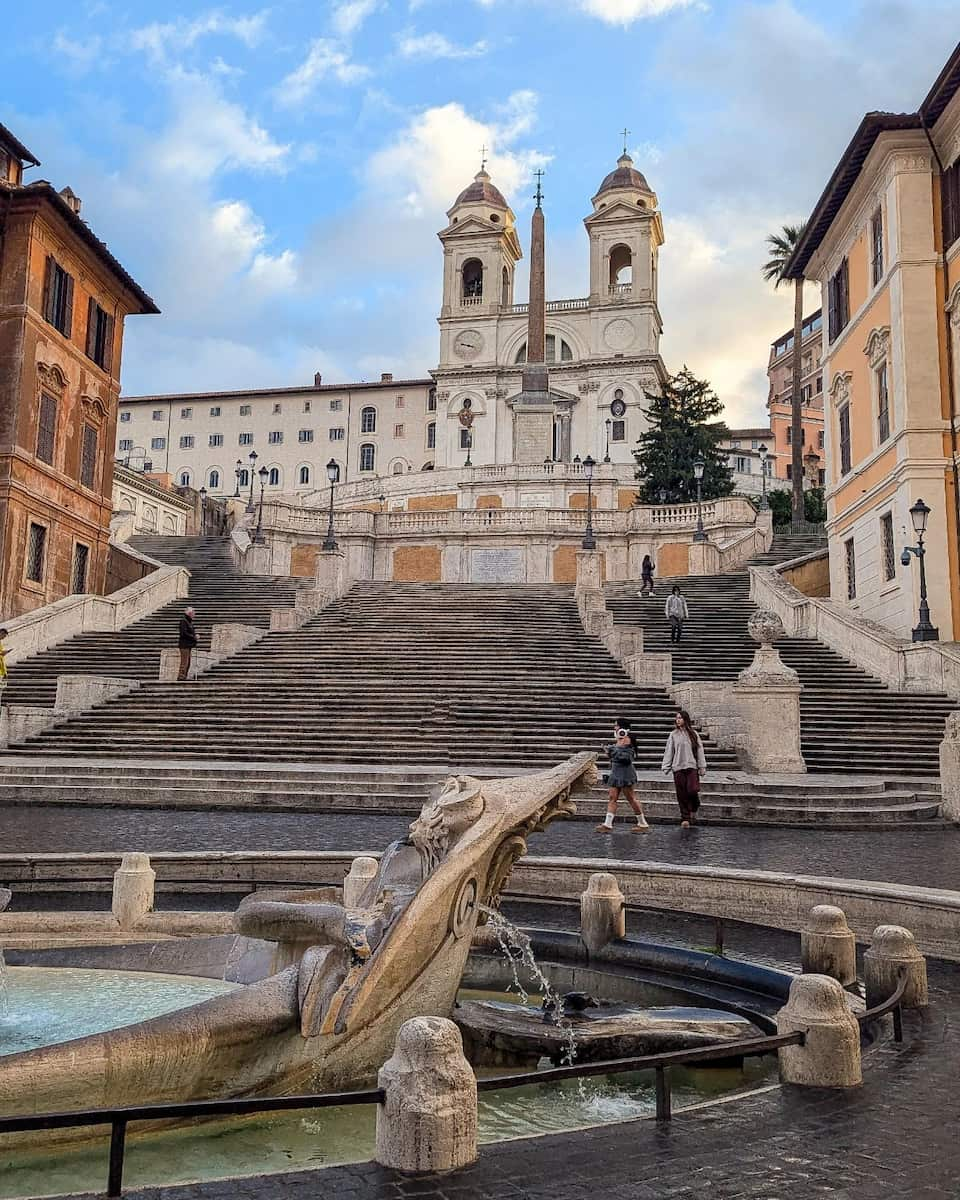
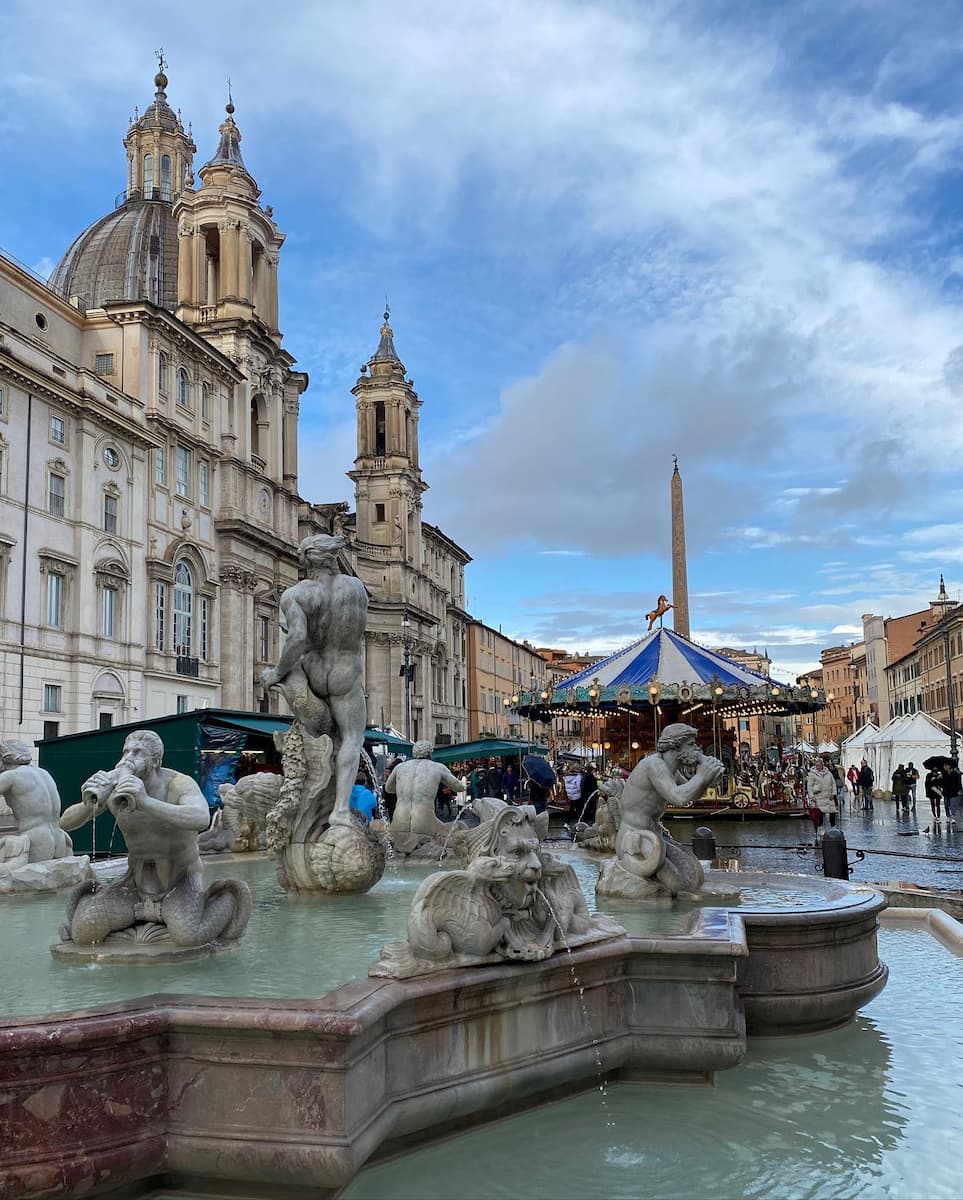
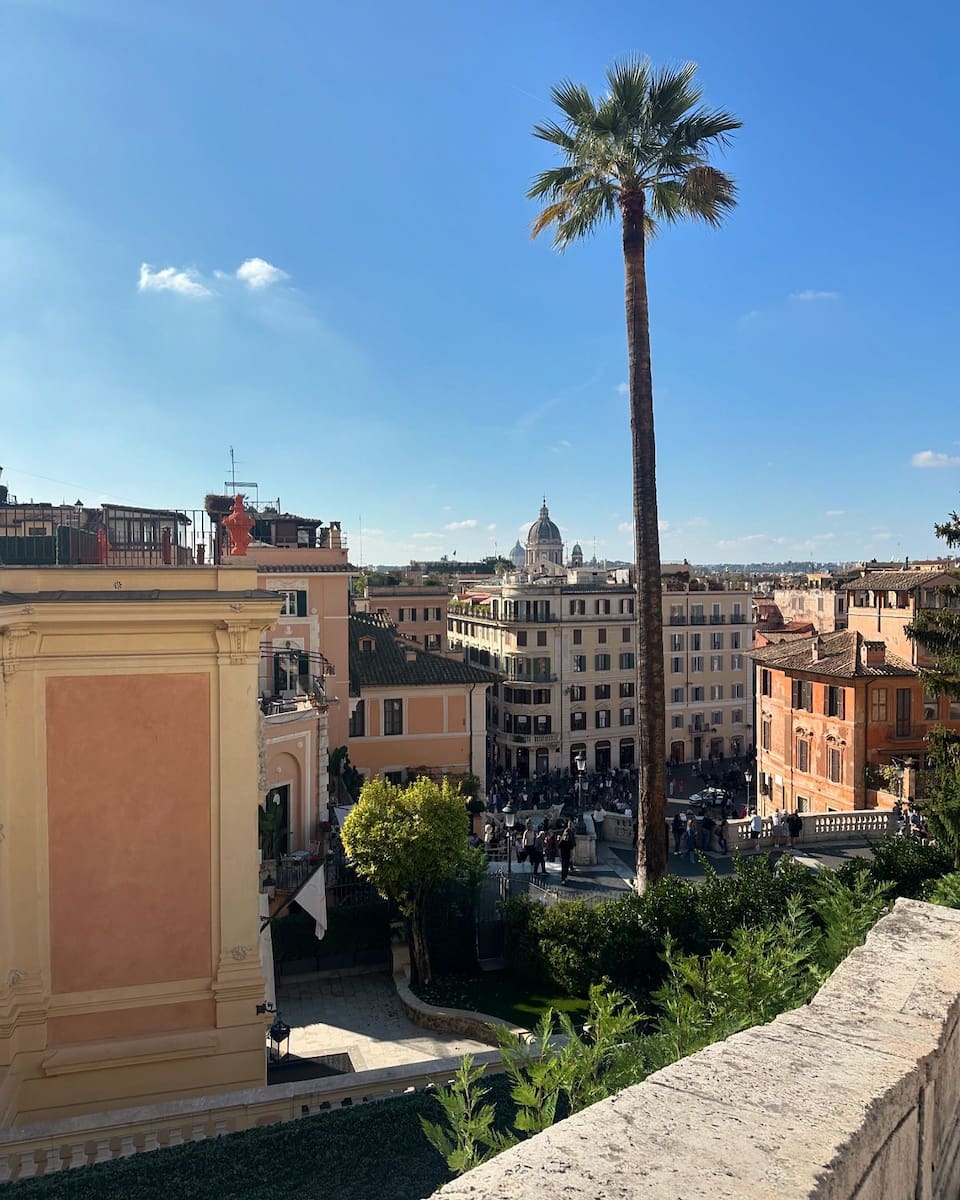
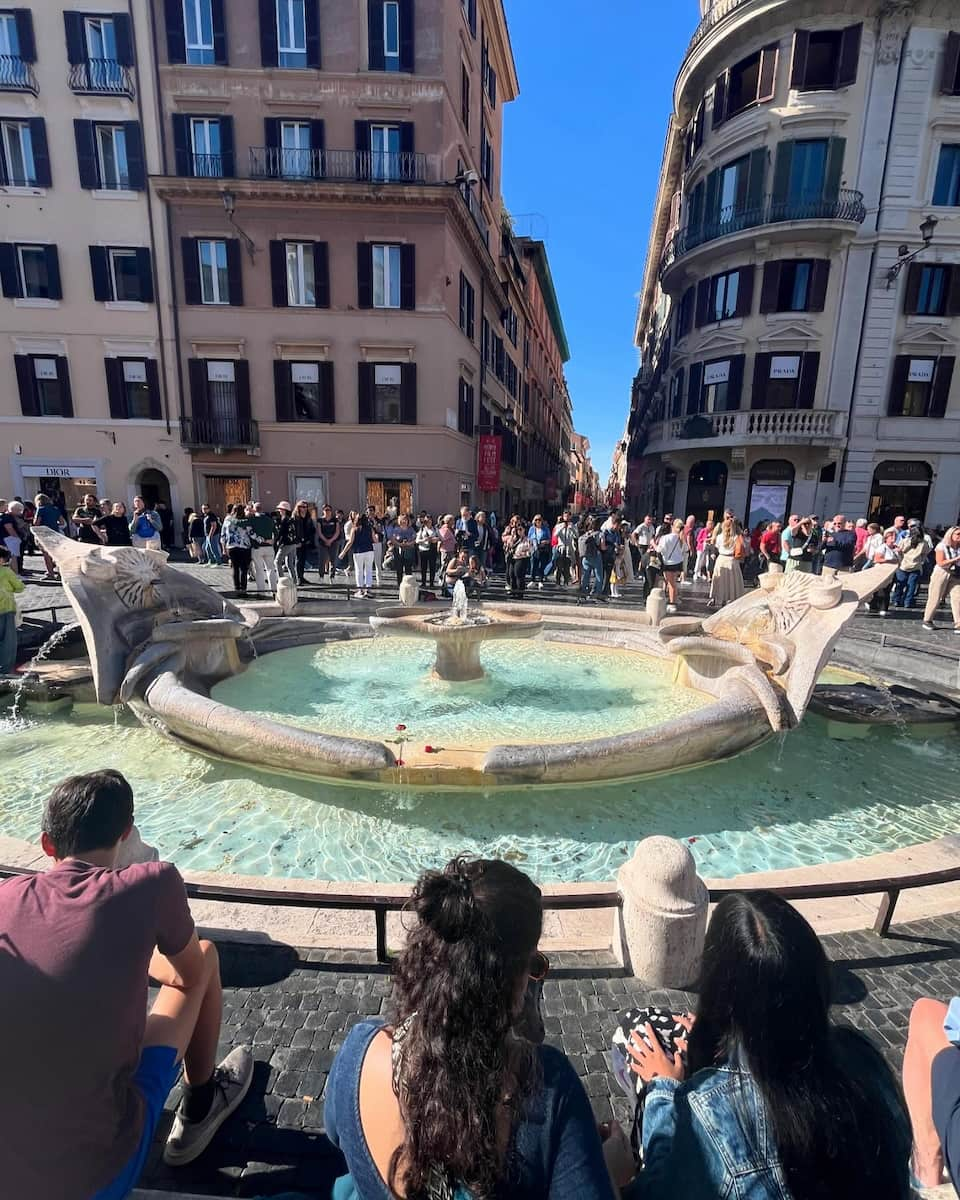
Local Tip: Visit the Trevi Fountain after 11 PM when tourist crowds thin out for better photos.
⭐ Best tours
- Rome Highlights by Golf Cart – Experience over 2,500 years of history on a private tour through Rome’s beautiful historic district. Roam the streets of this city in a comfortable, covered, street-legal golf cart following a custom itinerary based on your interests.
- Rome Trastevere Food Tour – Embark on a food tour through Rome’s Trastevere neighborhood to discover its vibrant culinary scene. Enjoy exclusive access to iconic venues, including the famous Da Enzo Restaurant. Savor DOC Prosecco, ancient Roman recipes, handmade cookies, porchetta, street food like supplí, and classic pasta dishes plus gourmet gelato.
Day 3: Art and Hidden Gems
1. 🌳 Borghese Gallery and Gardens
Art Palace: Start your final day by visiting the stunning Borghese Gallery, home to an impressive collection of Baroque art including works by Bernini and Caravaggio. The gallery is located within Villa Borghese park, offering a peaceful retreat from Rome’s busy streets.
Booking Tip: Reserve your two-hour time slot at least 3 months in advance, especially during peak tourist season.
⭐ Best activities
- Tour: Small-Group Gallery Borghese Tour – Explore one of Rome’s most renowned art collections at the Borghese Gallery on this small-group tour. Marvel at masterpieces by Caravaggio, Bernini, and Raphael as you stroll through the opulent rooms of the 17th-century villa.
- Ticket online: Borghese Gallery: Reserved Entrance Ticket – Explore the magnificent Borghese Gallery, admiring its impressive collection of artworks by Caravaggio, Bernini, and Raphael.
🍴 Where to eat near Borghese Gallery
- Pauline Borghese Restaurant: Located near Villa Borghese park, this sophisticated restaurant serves Mediterranean cuisine with fresh seasonal ingredients. Perfect for a classy lunch after visiting the Borghese Gallery.
- Pinsere Roma: A casual spot offering delicious pizza by the slice (pinsa), perfect for a quick bite before or after exploring Villa Borghese. Affordable pizza close to Villa Borghese park.
2. 🦁 Capitoline Museums
Ancient Art: Housing the world’s oldest public art collection, these museums showcase ancient Roman statuary, Renaissance paintings, and the iconic Capitoline Wolf. The museums’ position atop Capitoline Hill provides stunning vistas of the Forum of Augustus and the surrounding ancient ruins, while the Marcus Aurelius equestrian statue stands as a symbol of Rome’s imperial might.
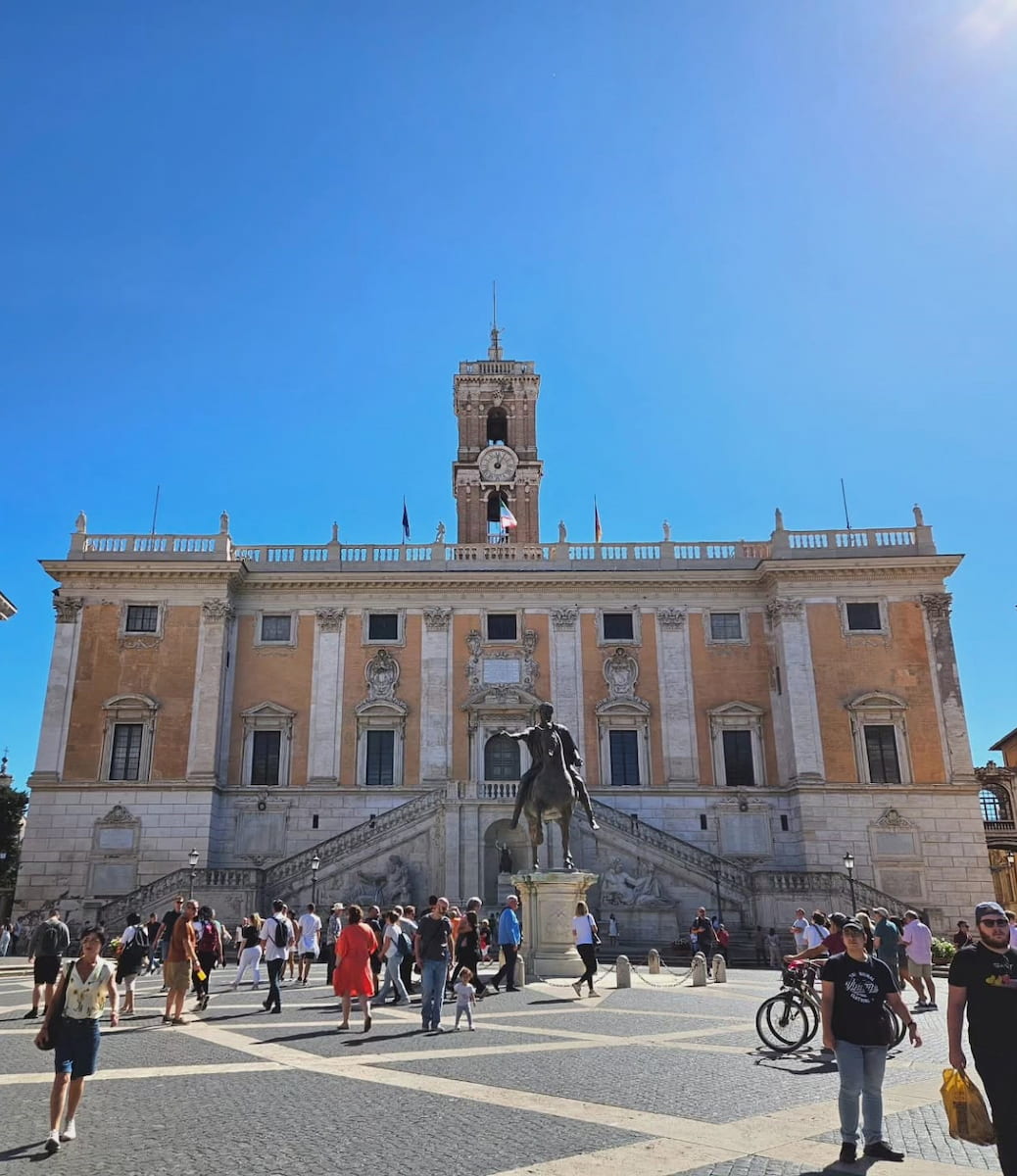
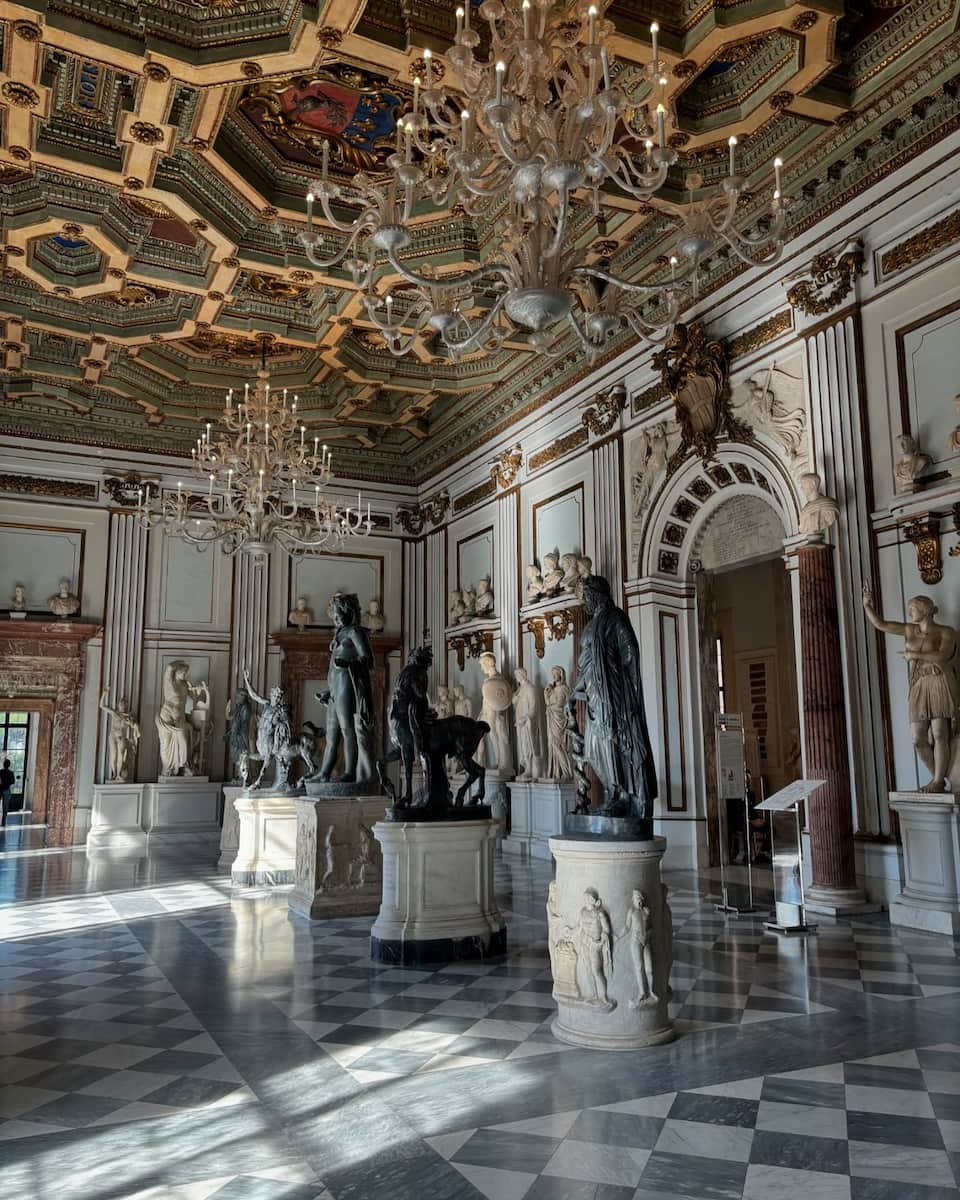
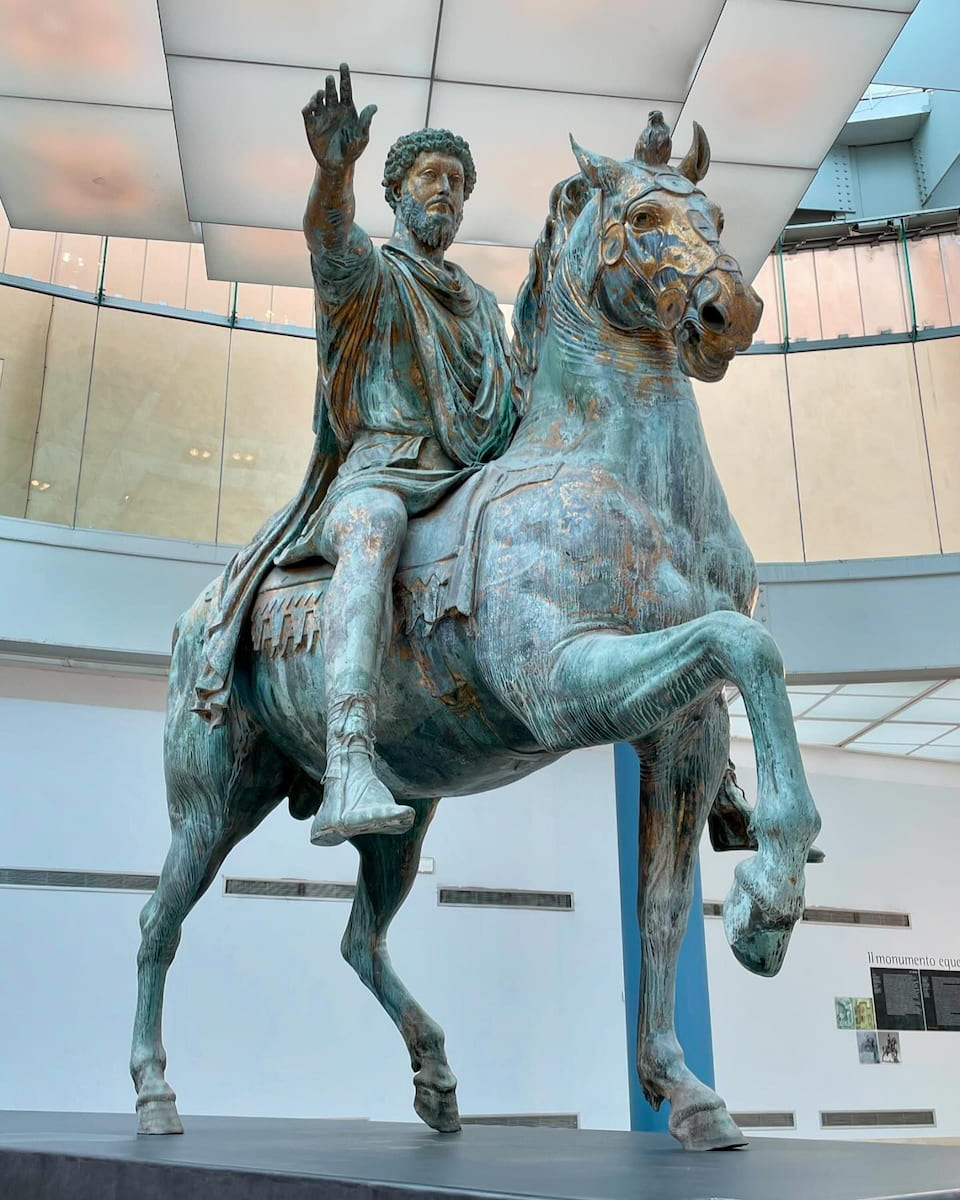
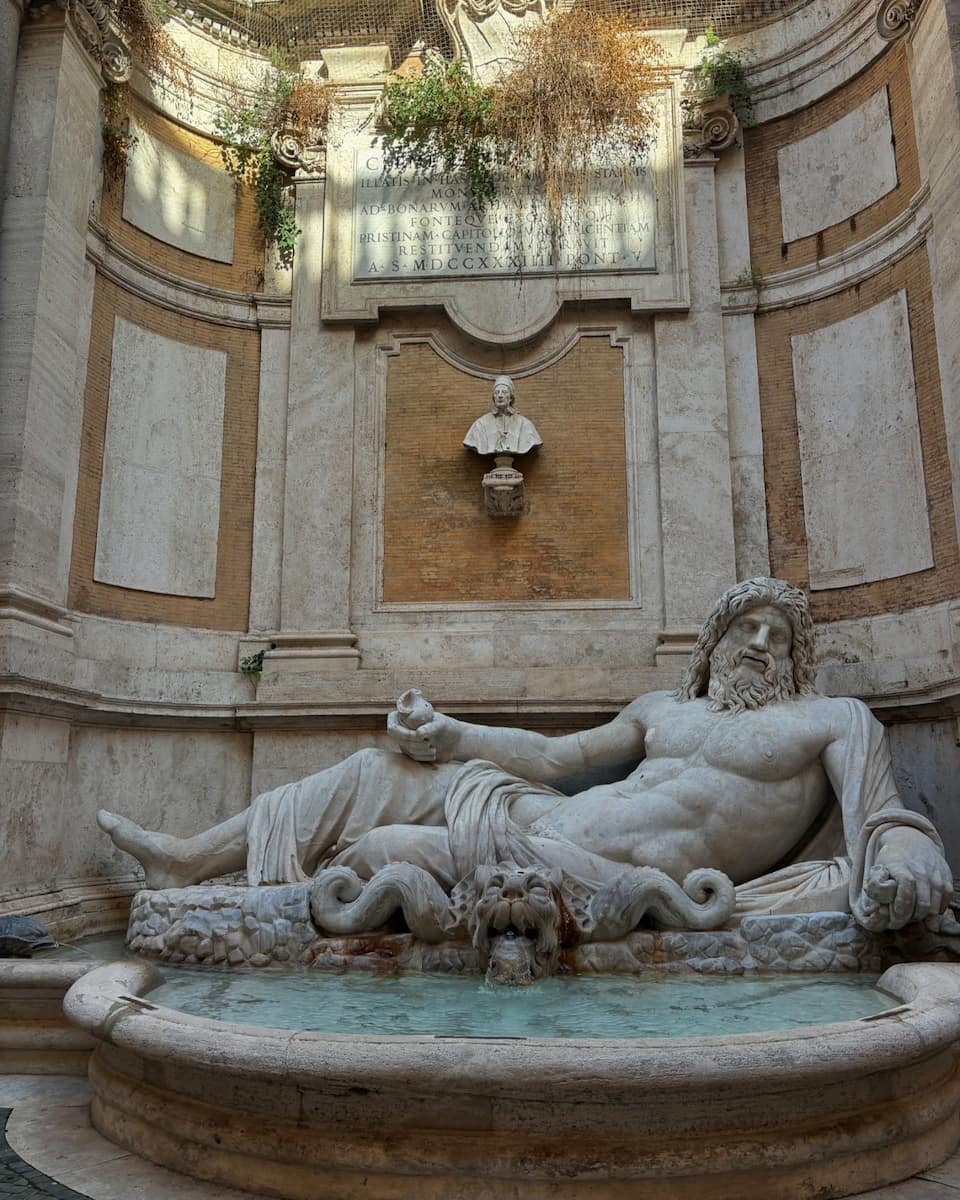
Budget Tip: Free entry on the first Sunday of each month.
⭐ Best Activities
- Tour: Capitoline Museums Rome Tour – Explore the world’s oldest public museum on this private guided tour of the Capitoline Museums in Rome. Discover ancient Roman sculptures, Renaissance art, and breathtaking views of the Roman Forum from the museum’s terrace. With a dedicated guide, you’ll dive deep into the history of Rome’s most significant artifacts, including the famous Capitoline Wolf and the Dying Gaul.
- Ticket online: Capitoline Museum Ticket – Explore The Capitoline Museums (plural because it’s in four buildings atop one of Rome’s famous Seven Hills) has a fascinating collection of art and artifacts all telling the fascinating history of Rome.
3. 🌅 Janiculum Hill
Sunset Spot: The Janiculum Hill, also known as Gianicolo in Italian, stands as Rome’s second-highest hill and offers the most breathtaking panoramic views of the Eternal City. This historic vantage point allows visitors to admire the sea of terracotta roofs, majestic domes, and ancient monuments that define Rome’s skyline

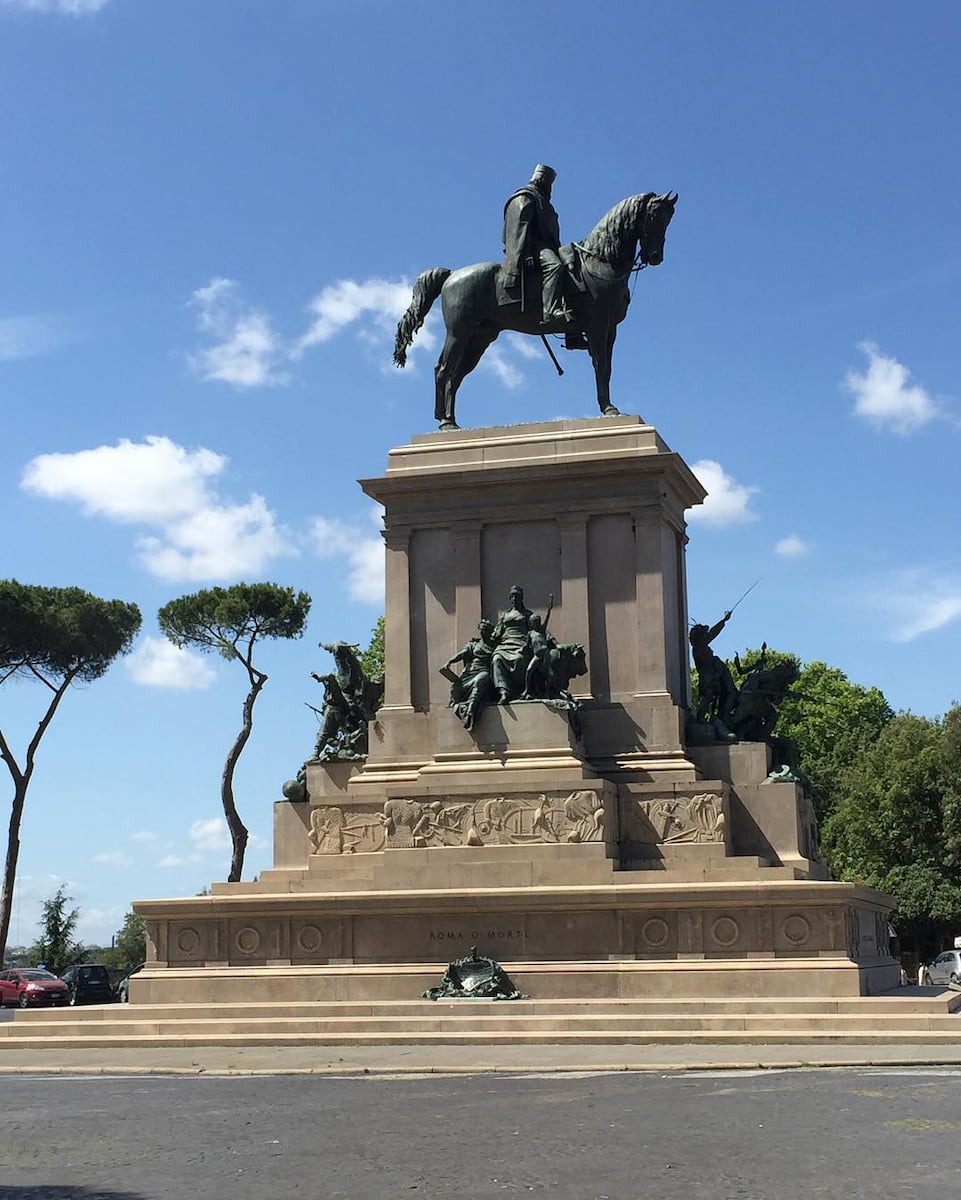
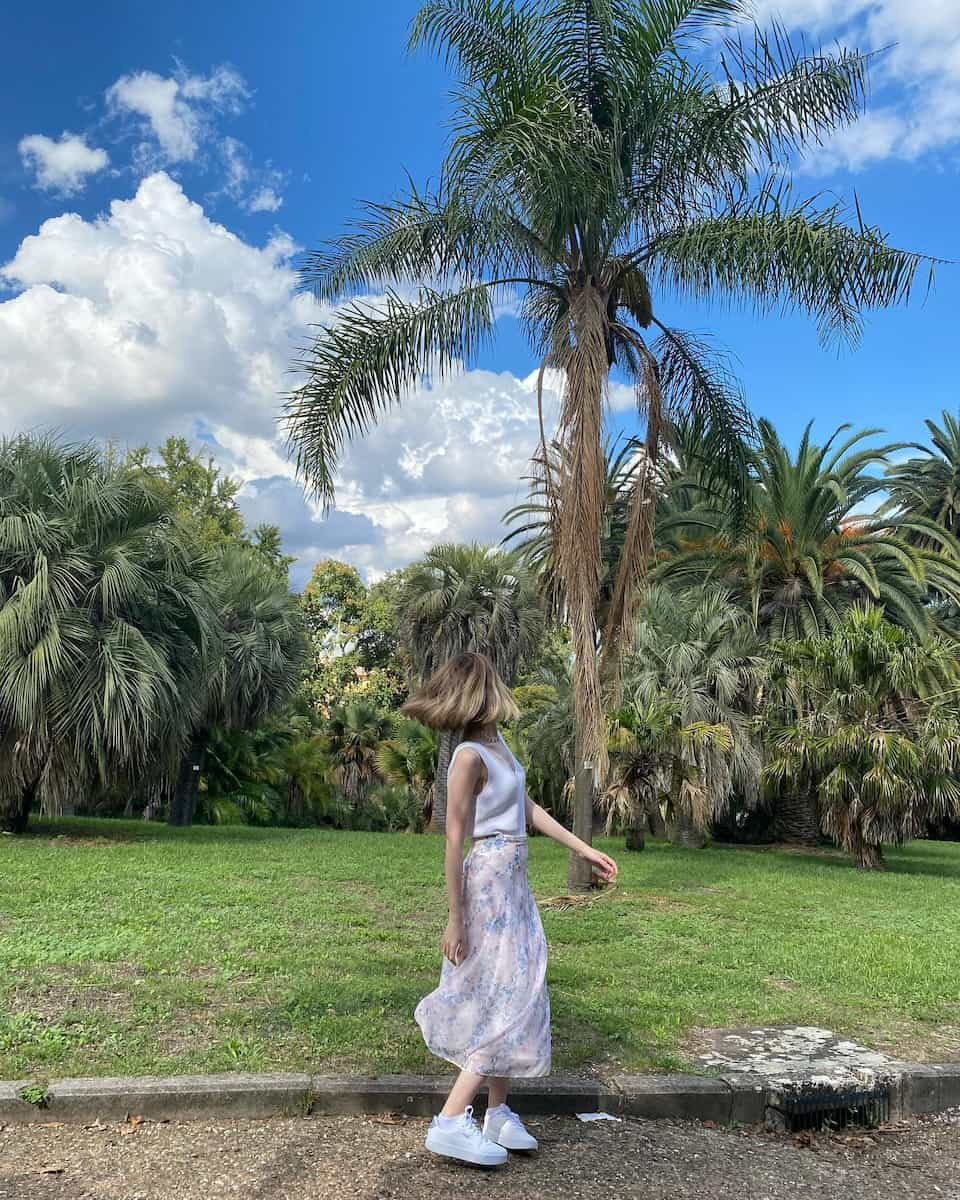
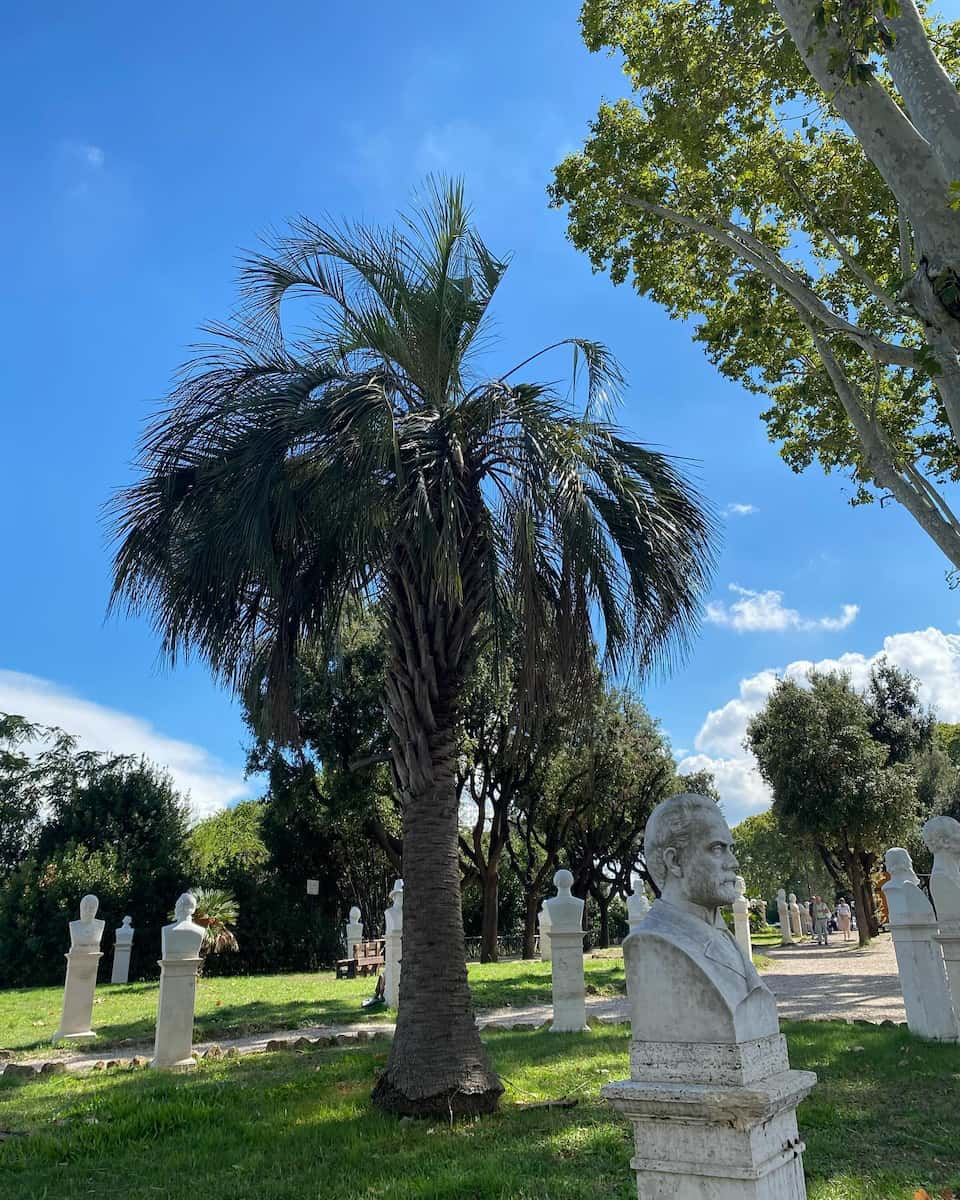
Photography Tip: Arrive 30 minutes before sunset to secure the best viewing spot near the Garibaldi monument.
⭐ Best tours
- Vespa Scooter Tour in Rome – Ascend to Gianicolo Terrace and get mesmerizing views of Rome, discover some of the iconic places in Rome on a Vespa scooter with a driver and visit the Orange Garden and Acqua Paola Fountain.
- Hidden Rome: E-Bike Tour – Zip through scenic neighborhoods, from hidden landmarks like the foodie hub of Testaccio to panoramic vistas from Aventino and Gianicolo hills.
4. 🏛️ Spanish Steps
Architectural Marvel: The 135-step staircase, designed by Francesco de Sanctis and completed in 1725, features an elegant butterfly design connecting Piazza di Spagna to the Trinità dei Monti church. Despite its name, the steps were funded by French diplomat Étienne Gueffier.
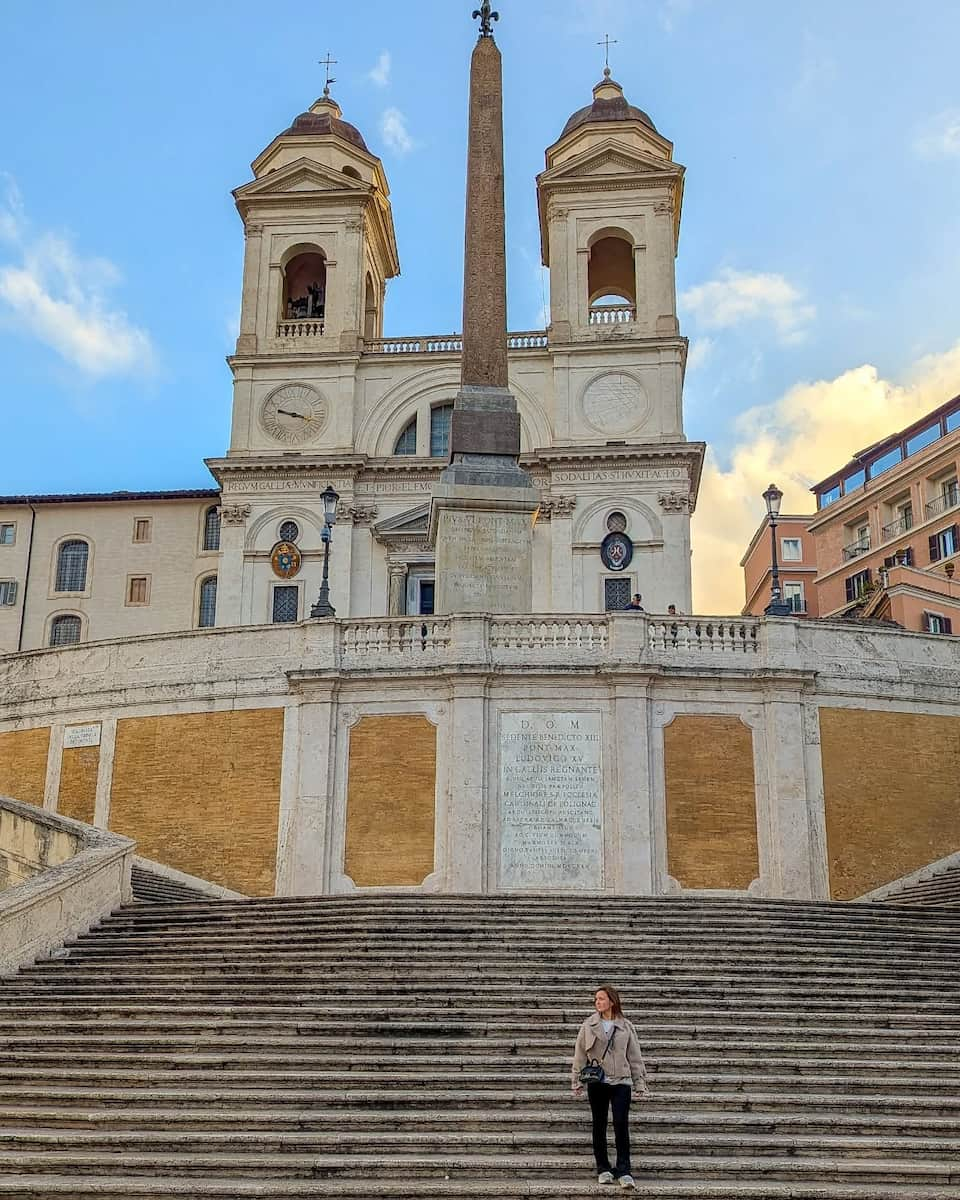
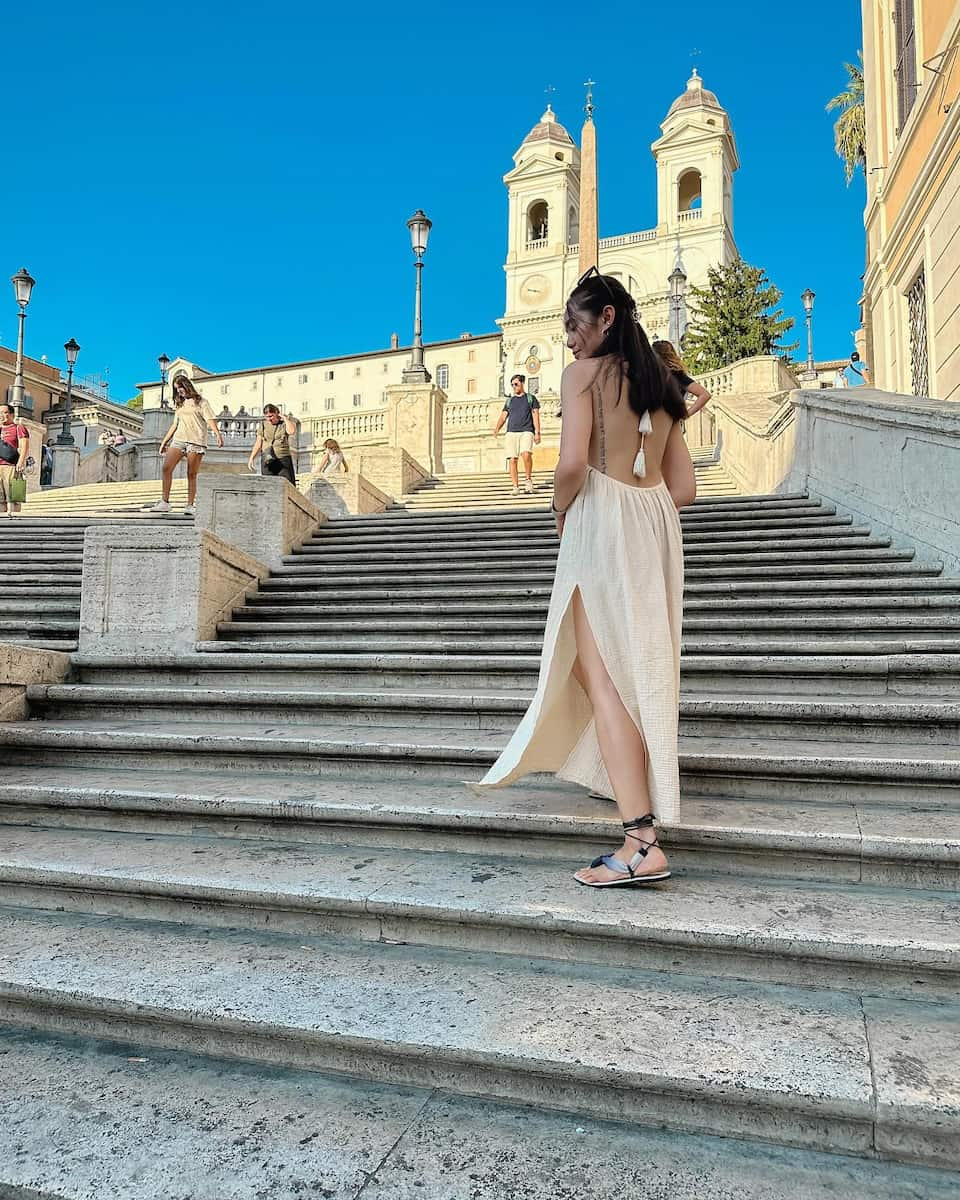
Money Saver: Visit during the annual spring flower display in April when the steps are adorned with beautiful azaleas.
⭐ Best tours
- Rome: Spanish Steps, Trevi, Navona, Pantheon – Discover Rome’s ancient monuments at sunset with a local guide. Explore landmarks like the Spanish Steps, Trevi Fountain, and the Pantheon late in the afternoon when most of the crowds have dispersed.
- Rome Evening Tour: Trevi Fountain and Spanish Steps – Explore the streets of Rome on this sunset sightseeing tour. See the centrally located squares—including the stunning Piazza Navona—part of the historical center of this Eternal City.
5. 🛣️ Appian Way
Peaceful area: One of Rome’s oldest roads, the ancient Appian Way, is lined with tombs and monuments from Roman times, offering a peaceful escape from the city center. This road was crucial for military supplies during ancient times and now provides visitors with a scenic walk or bike ride through history.
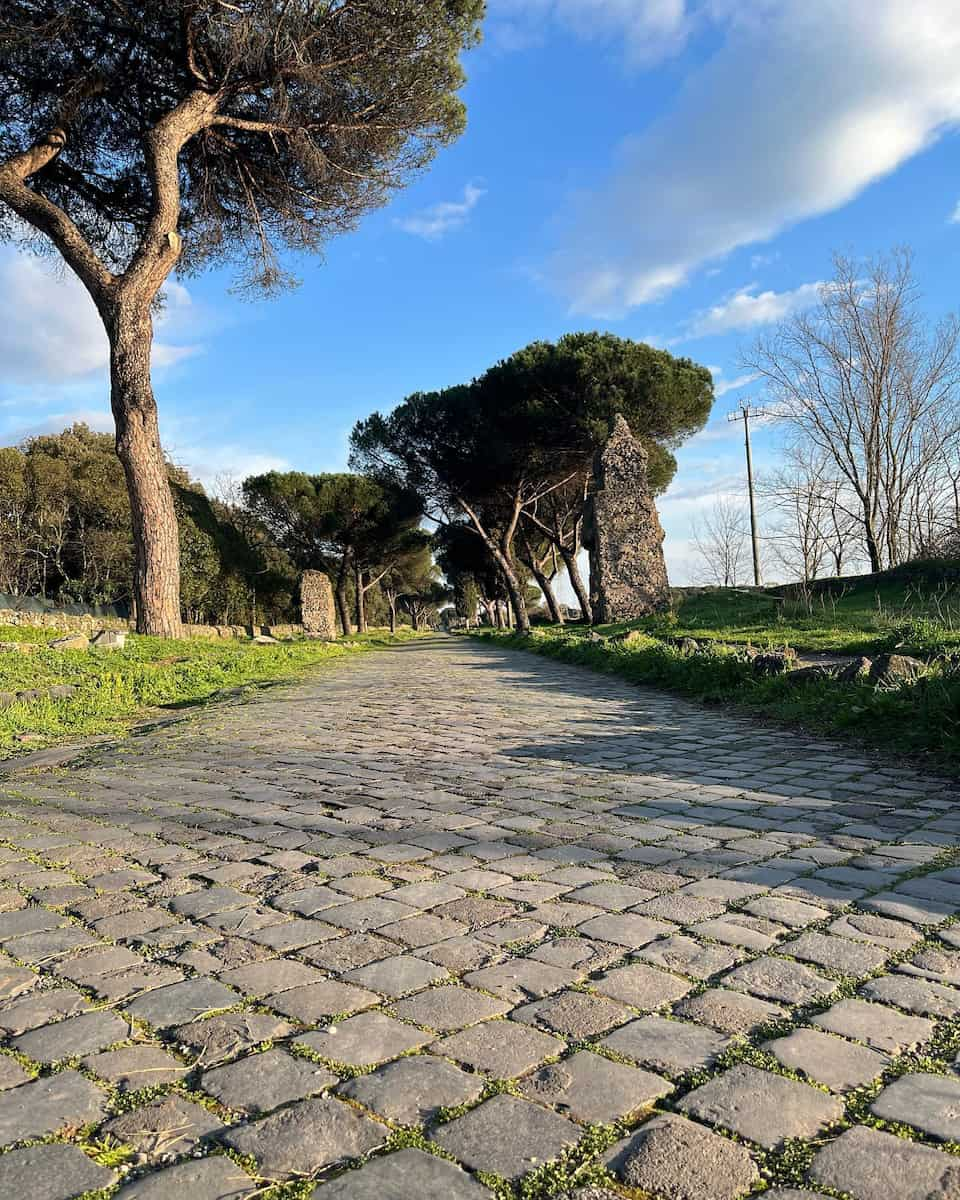
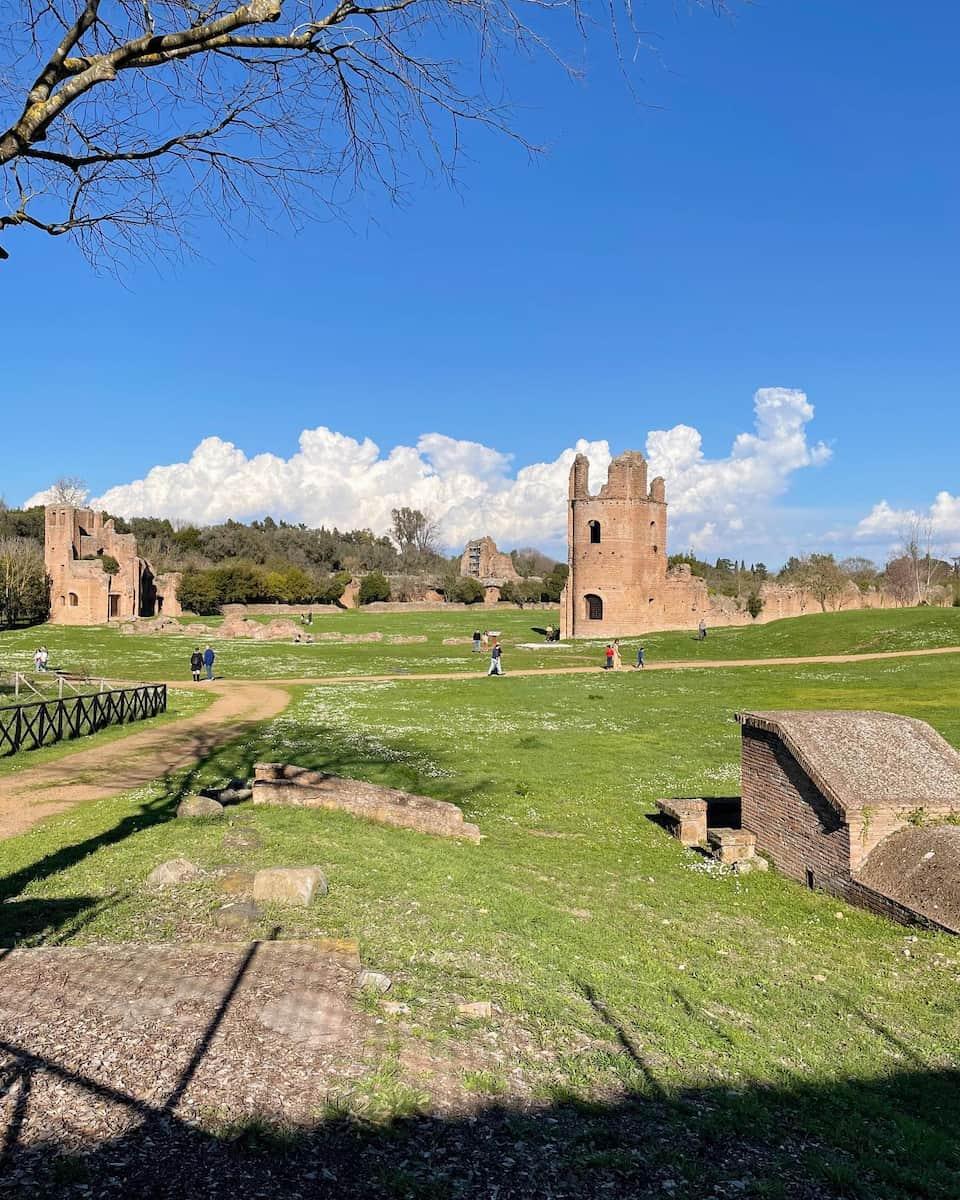
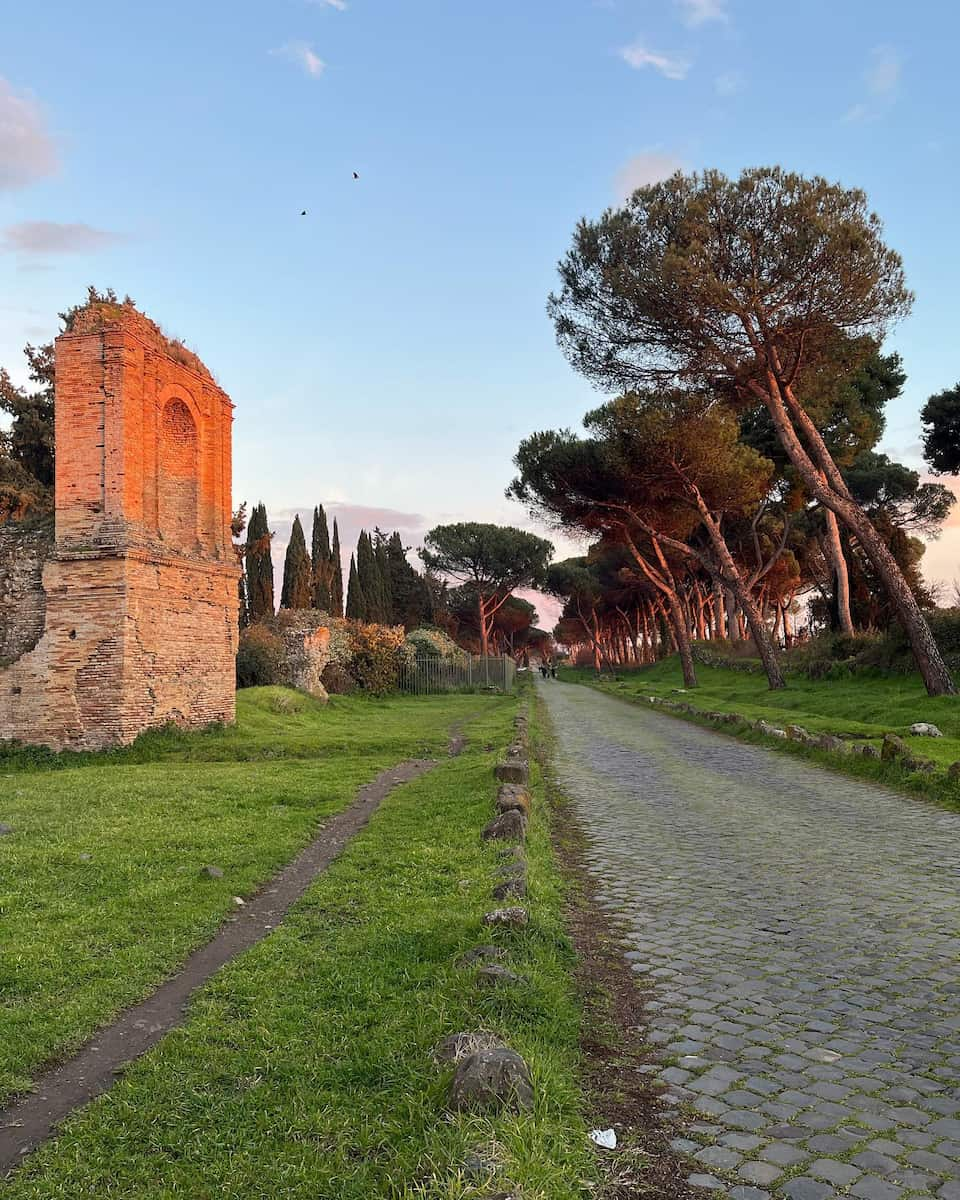
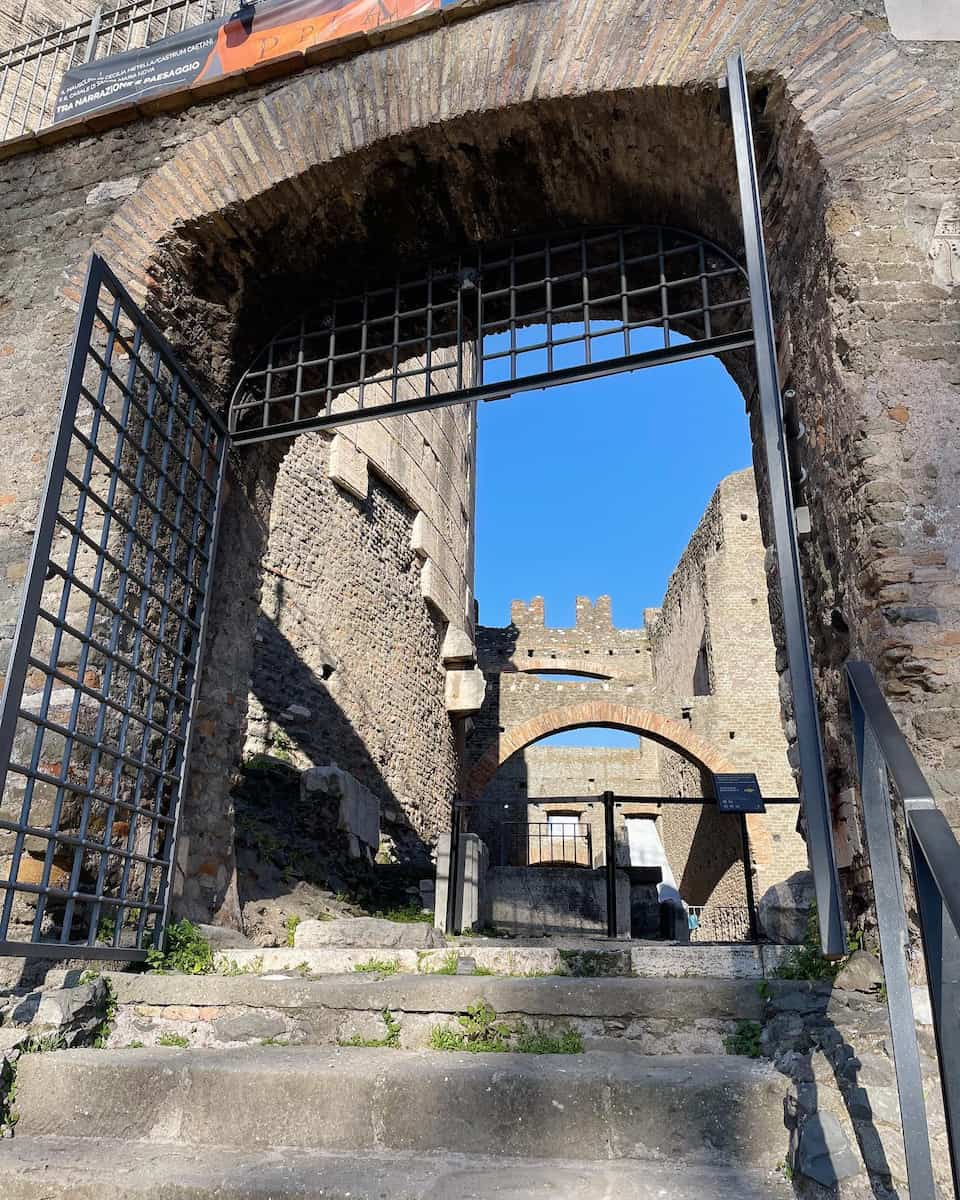
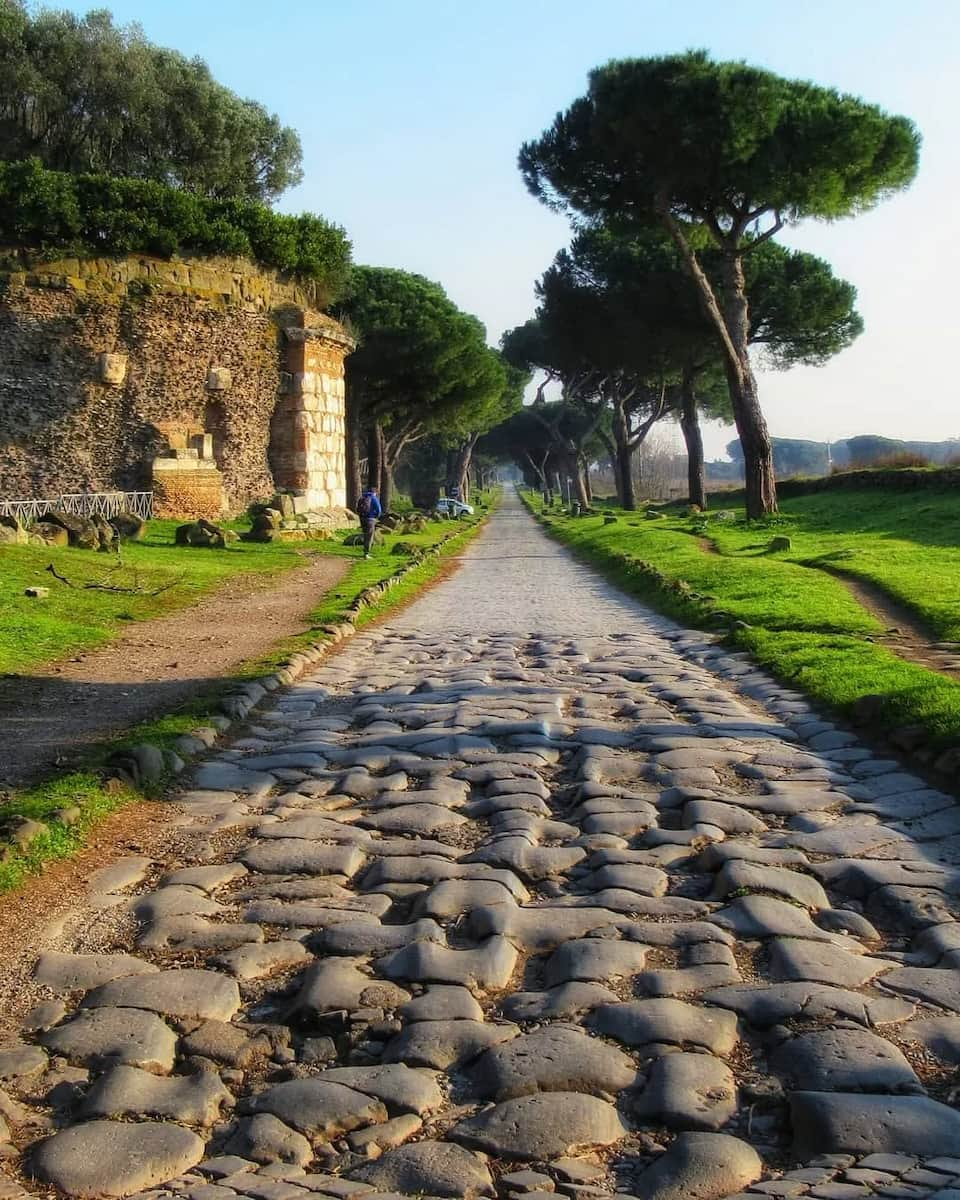
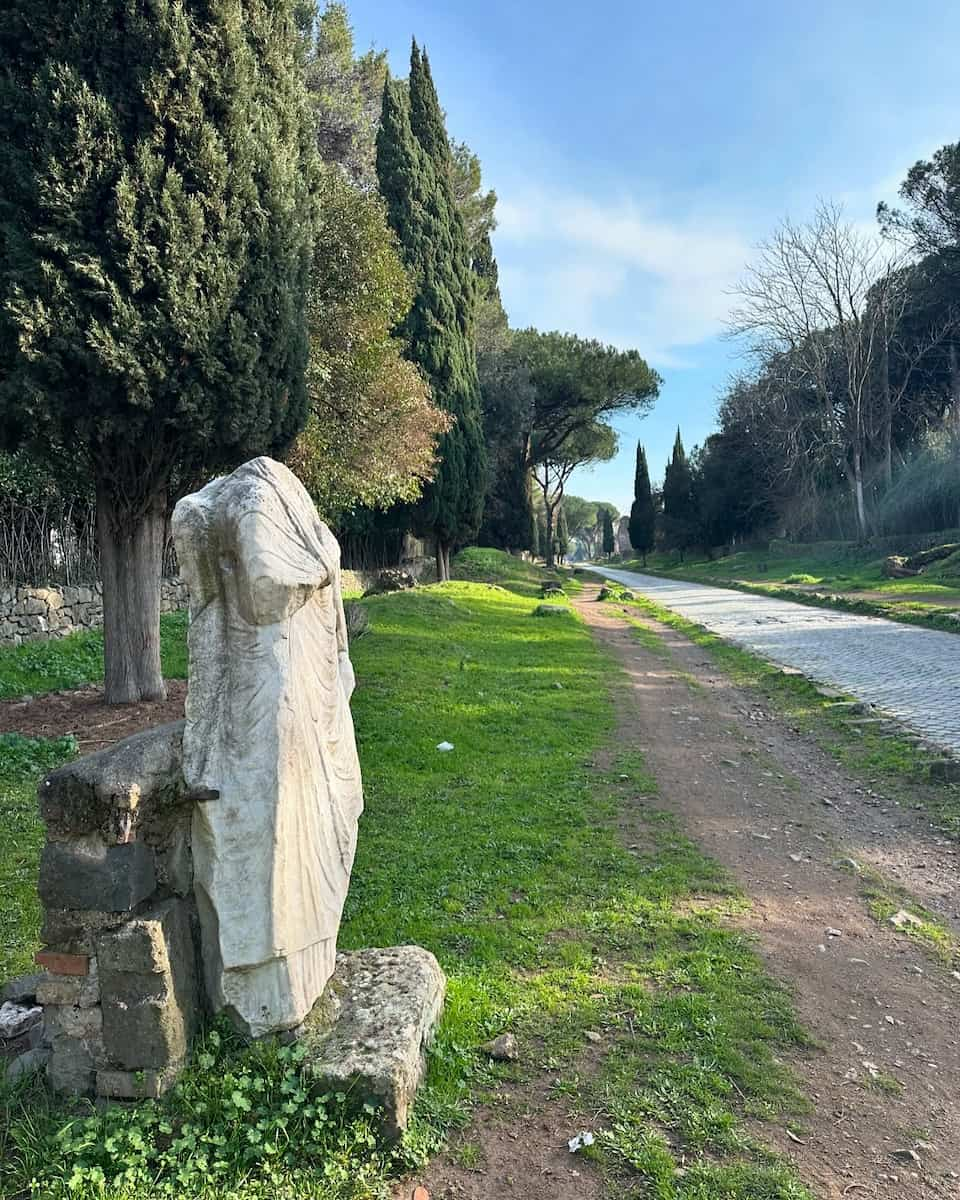
Money Saver: Rent a bicycle or join a guided tour to fully appreciate this historic road without breaking your budget.
⭐ Best activities
- Tour: Appian Way on E-bike: Tour – You’ll hop on an electric mountain bike or road bike and ride into the countryside and you’ll pass by or stop at sites like the Mausoleum of Cecilia Metella and the remains of the Aqua Claudia and Aqua Felix waterways, plus pause for a countryside lunch.
- Ticket online: Rome: Catacombs Tickets – Enter underground into Rome’s Catacombs near Appian Way and discover the fascinating history of Roman secret societies and early Christian burial practices. Explore some of the tunnels that stretch over 180 miles.
6. 🏛️ Altar of the Fatherland (Altare della Patria)
Monumental Tribute: The Altar of the Fatherland, also known as the Vittoriano, was built to honor King Victor Emmanuel II, the first king of Italy. Inaugurated in 1911, this massive monument sits in Piazza Venezia and is one of Rome’s most iconic landmarks. The structure is made from Botticino marble and features grand staircases, towering Corinthian columns, and two bronze chariots driven by winged victories.
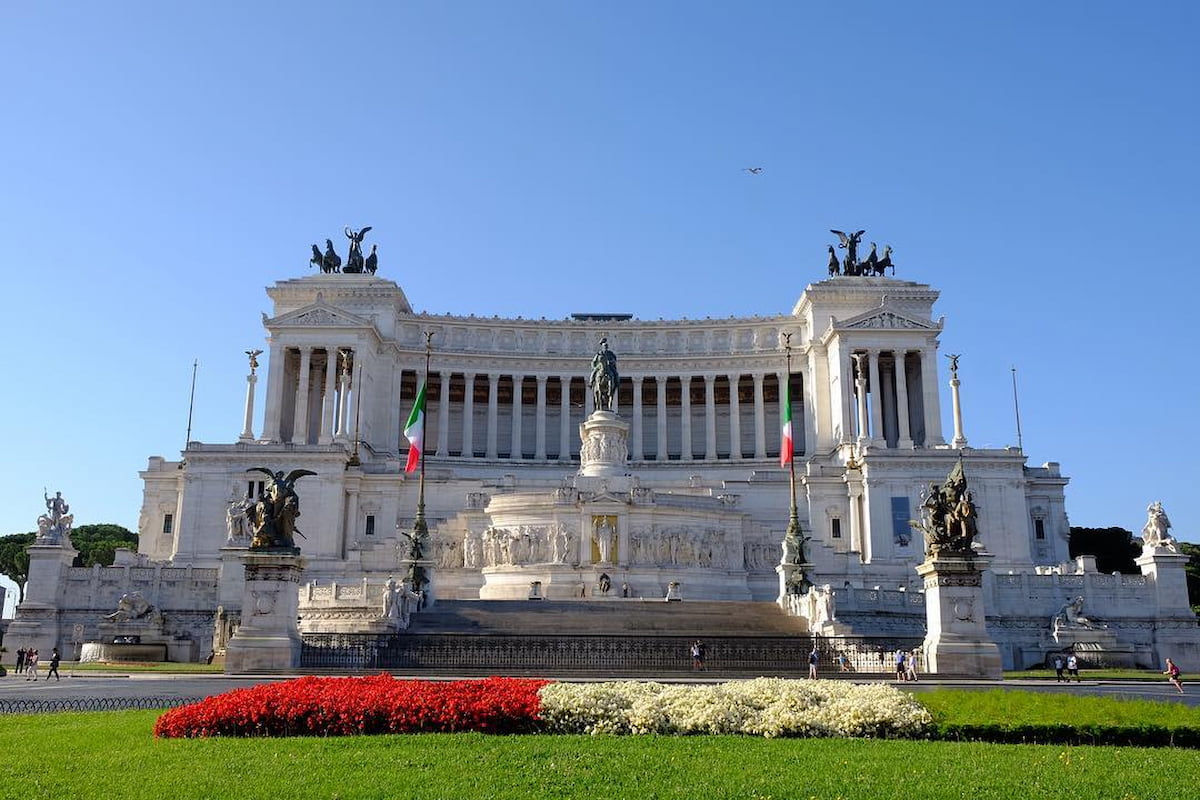
Afternoon in Rome: Visit the terrace at sunset for incredible panoramic views over Rome. You can either climb 196 steps or take the glass elevator (€10) for a breathtaking view of landmarks like the Colosseum and Roman Forum.
⭐ Best tours
- Rome: Vittoriano with Rooftop View – Discover with us the Wonder of the Altare della Patria, the Vittoriano, a Unique Symbol of Rome, with the Most Beautiful Panoramic Rooftop Terrace in Rome.
- Private Tour: Ancient Rome – Explore the first and second levels of this legendary amphitheater, learning interesting facts such as how seats were assigned according to social class and witness the splendor of the Altare Della Patria and the statue of the goddess Roma
🎯 Essential Rome Travel Tips
Getting Around Smart: Rome’s historic center is walkable, with most attractions within 30 minutes of each other. The closest metro stations provide quick access to major sites, while comfortable walking shoes are essential for cobbled streets.
Timing is Everything: Visit during shoulder season (March-May or September-November) to avoid peak tourist crowds and intense summer heat. Major attractions require booking 3 months in advance, especially the Vatican Museums and Borghese Gallery.
Local Experience: Explore working-class neighborhoods like Trastevere and Monti for authentic Roman cuisine and lively nightlife. Food tours in Rome offer insights into local specialties like cacio e pepe and the best gelato spots.
Top Tip: For the ultimate authentic experience, join the locals for aperitivo between 6-8 PM in Campo de’ Fiori or Piazza della Madonna dei Monti.
Top 3 Day Trips from Rome
1. 🏛️ Tivoli: Villa d’Este & Hadrian’s Villa
Historical Splendor: Just 30 km from Rome, Tivoli is home to two UNESCO World Heritage sites: Villa d’Este and Hadrian’s Villa (Villa Adriana). Villa d’Este is famous for its Renaissance gardens and elaborate fountains, while Hadrian’s Villa showcases the opulent estate of Emperor Hadrian, offering a glimpse into ancient Roman luxury.
Natural Beauty: The town of Tivoli is perched on a hill with stunning views of the surrounding countryside. The gardens at Villa d’Este are particularly beautiful in spring and summer when the flowers are in full bloom, and the fountains are in full flow.
Top Tip: Take the Cotral bus from Ponte Mammolo Metro Station (Line B) for a direct route to Tivoli. It’s faster than the train and drops you closer to the main attractions.
⭐ Best activities
- Tour: Villa D'Este and Hadrian's Villa Tivoli Tour – Marvel at the opulence of Hadrian’s Villa and the gardens of Villa D’Este in Tivoli on a day trip from Rome. Stroll in the gardens of the Borgias and tour the imperial palaces of Emperor Hadrian.
- Ticket online: Villa d'Este & Hadrian's Villa: Entry Ticket – Discover the Renaissance-style Villa d’Este and some of the area’s best scenery.
2. 🌿 Castelli Romani: Frascati & Castel Gandolfo
Wine & Views: Located just 25 km southeast of Rome, Castelli Romani is a group of picturesque hill towns. Frascati is renowned for its local white wine and charming villas, making it a popular destination for wine lovers. Castel Gandolfo, perched on the edge of Lake Albano, is famous for being the Pope’s summer residence.
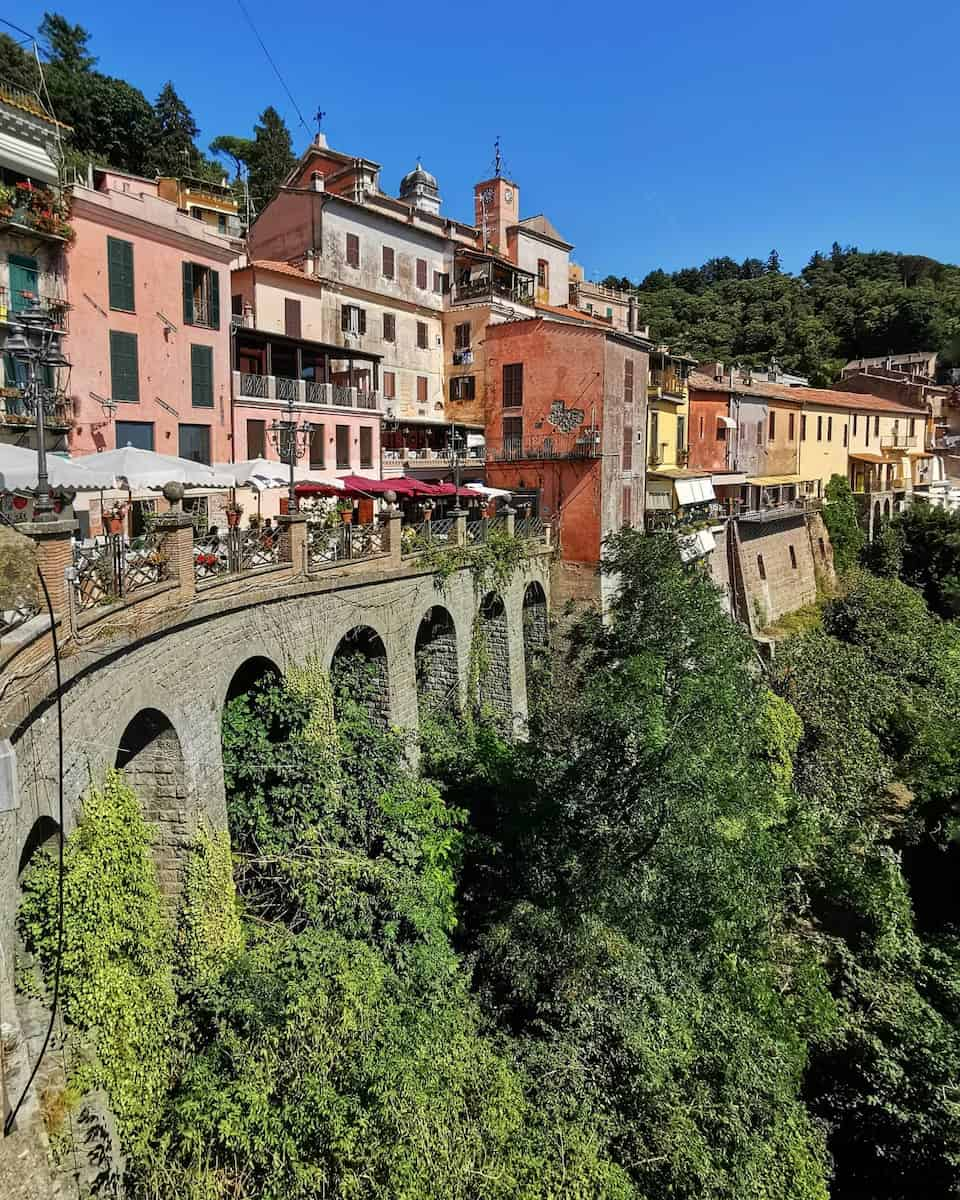
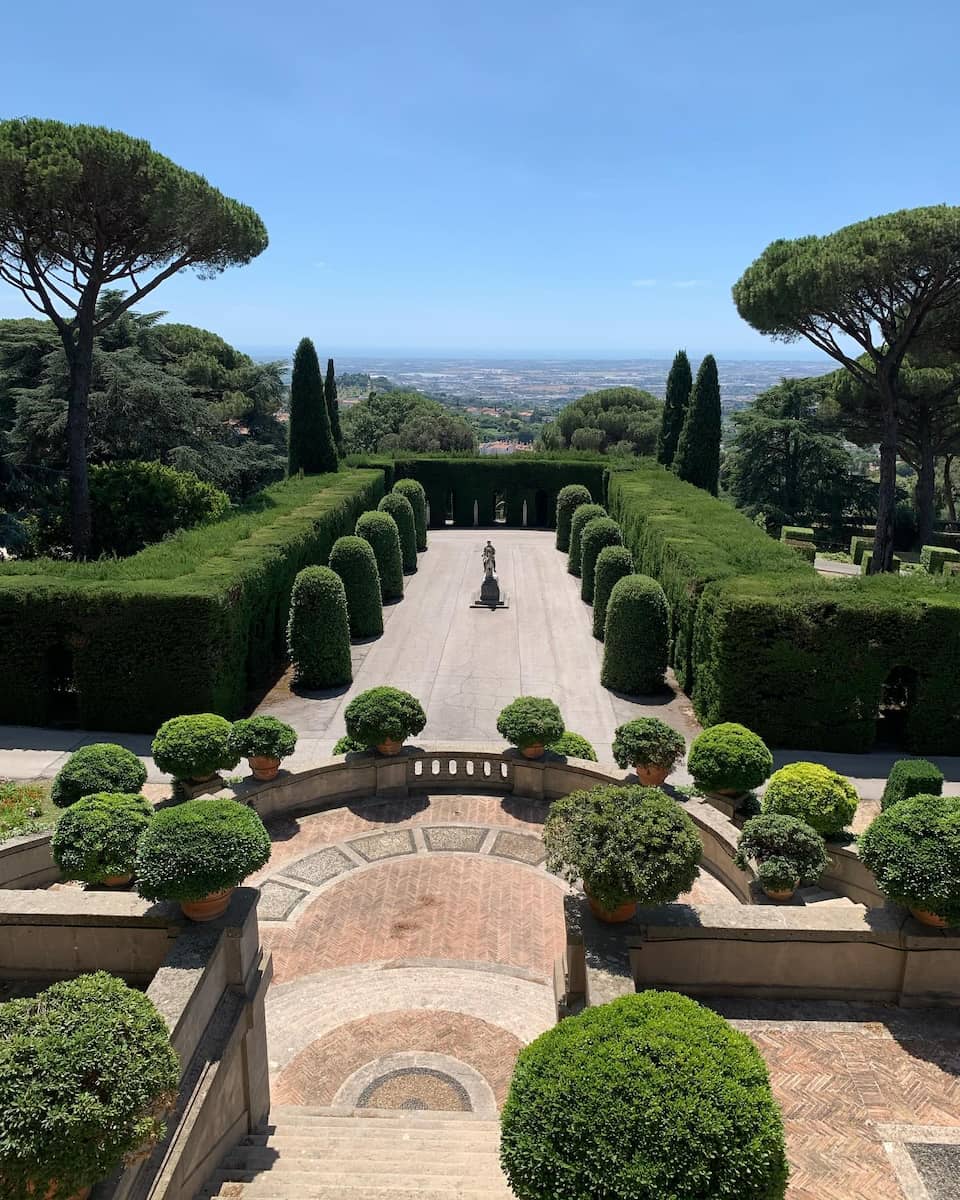
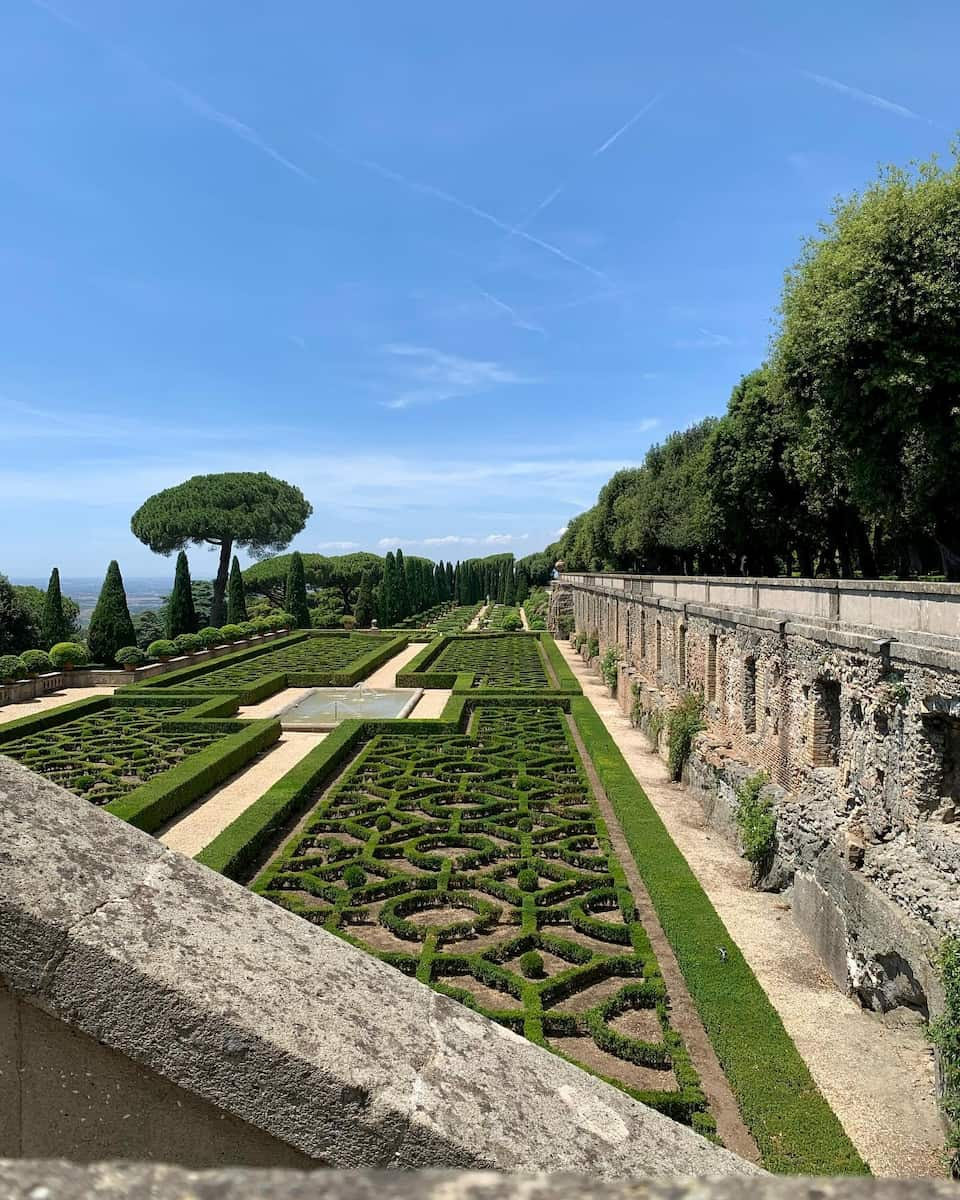
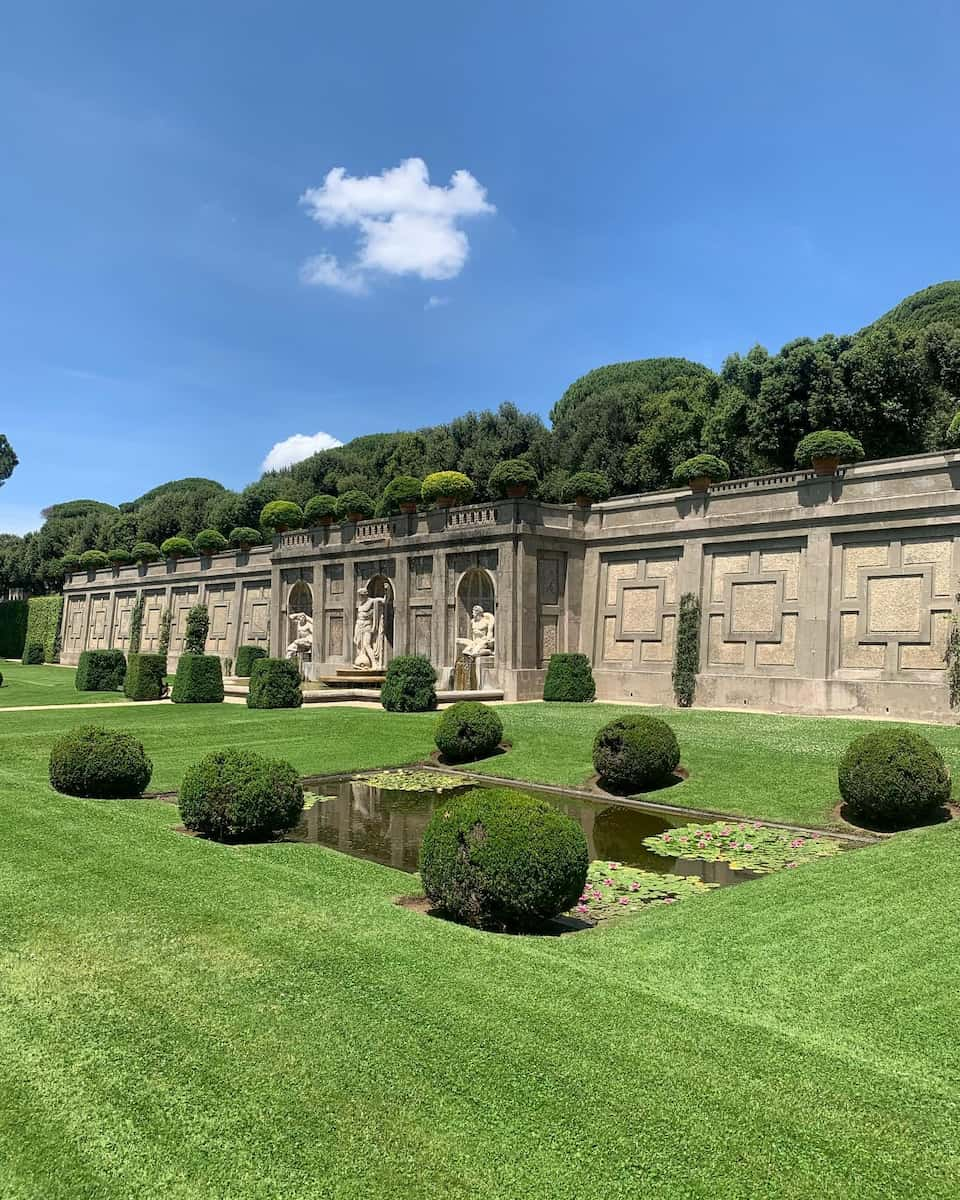
Cultural Escape: These towns have long been summer retreats for Roman aristocrats and popes. Today, they offer visitors a peaceful escape from the city with opportunities to explore historic villas, enjoy local cuisine, and relax by the lake.
Insider Tip: For an authentic experience, visit Frascati’s fraschette (traditional wine taverns), where you can enjoy local wine paired with simple yet delicious Roman dishes.
⭐ Best tours
- Trip to Castelli Romani – Escape the hustle of Rome and enjoy a scenic day trip to the beautiful Castelli Romani region. This tour takes you through picturesque villages like Frascati and Castel Gandolfo, with stops at serene lakes and historical villas.
- Castelli Romani Hop-on and Hop-off Tour – Explore the Castelli Romani region of Rome at your own pace with a hop-on hop-off tour. Visit beautiful towns like Grottaferrata, Marino, Castel Gandolfo, and more with live commentary onboard.
3. 🏙️ Ostia Antica: Ancient Roman Port City
Ancient Ruins: Just 30 km from Rome, Ostia Antica was once the bustling port city of ancient Rome. Today, it’s an open-air archaeological park where you can explore remarkably well-preserved ruins, including ancient baths, taverns, temples, and even an amphitheater.
Off-the-Beaten-Path: Unlike Pompeii, Ostia Antica is less crowded but equally fascinating. You can wander through ancient streets and get a real sense of daily life in Roman times without battling large tour groups.
Money Saver: Take the Roma-Lido train from Piramide Station (Metro Line B). It’s a quick 30-minute ride to Ostia Antica and included in the Roma Pass if you have one.
⭐ Best activities
- Tour: Ancient Ostia Small Group Day Trip from Rome – Explore the well-preserved ruins of Ancient Ostia, often referred to as “The Better Pompeii,” on this small-group day trip from Rome. Walk through ancient streets, visit public baths, and admire the impressive amphitheater as your guide brings the history of this once-thriving Roman port city to life.
- Ticket online: Ostia Antica Archaeological Park: Entry Ticket – Discover the necropolis and ancient Roman mosaics in historic Ostia.
❓ FAQ
What should I include in a 3-day Rome itinerary?
If you’re planning a 3-day Rome itinerary, start with the Colosseum and Roman Forum (2-4 hours), where you can explore the heart of ancient Rome. Then, visit Palatine Hill and the nearby Capitoline Museums (2-3 hours) to dive deeper into Roman history. On your second day, head to Vatican City, where you can visit St. Peter’s Basilica (1-2 hours) and the Vatican Museums (2-3 hours), including the Sistine Chapel. Finish your trip with a stroll through Piazza Navona and the charming streets of Trastevere for an authentic Roman experience.
How can I avoid tourist crowds in Rome?
Rome can be chaotic and touristy, especially at major attractions like the Roman Forum or St. Peter’s Basilica. To avoid tourist crowds, plan your visits early in the morning or late in the afternoon. For sites like the Vatican Museums, it’s best to purchase tickets online at least 3 months in advance to skip the lines. Exploring off-the-beaten-path areas like the Janiculum Hill (3-4 hours) or quieter neighborhoods such as Campo de’ Fiori will also help you avoid crowded tourist spots.
What are some hidden gems to explore in Rome?
While most visitors flock to the Colosseum in Rome and Vatican, there are plenty of hidden gems in Rome that are worth exploring. The quiet neighborhood around the Janiculum Hill offers stunning views of the city without the tourist crowds (3-4 hours). You can also visit lesser-known ancient ruins like the Trajan Forum or the ruins of the Forum of Augustus, which are often overlooked by first-time visitors but provide fascinating insights into Roman history.
Where can I experience authentic Roman life?
To experience authentic Roman life, venture beyond touristy areas to neighborhoods in Rome like Trastevere or around the bustling market at Campo de’ Fiori (1-2 hours). These areas are filled with cobbled streets, local restaurants, and cafes where you can enjoy classic dishes like cacio e pepe or sip on an afternoon coffee. For a more relaxed vibe, visit a local bar for an evening aperitivo, such as an Aperol Spritz, before heading out to enjoy Rome at night.
What are some must-see ancient ruins in Rome?
Rome is known for its incredible ancient ruins, and no trip is complete without visiting some of its most famous landmarks. Start with a visit to the iconic Roman Forum and Palatine Hill (1-2 hours), where you can walk through preserved buildings from ancient Rome. Then head over to see the majestic Arch of Titus (2-3 hours) and explore more intricate architecture at sites like the Forum of Augustus or even lesser-known ruins such as those found near Piazza Venezia.
How should I plan my visit to Vatican City?
When visiting Vatican City during your 3-day trip, start by visiting St. Peter’s Basilica early in the morning (1-2 hours) to avoid long lines. Afterward, head to the nearby Vatican Museums and don’t miss out on seeing Michelangelo’s masterpiece in the Sistine Chapel (allow 2-3 hours). Be sure to purchase tickets online well in advance—ideally at least 3 months—to skip waiting in line during peak tourist season.
